CATALOG 2018 GRADUA





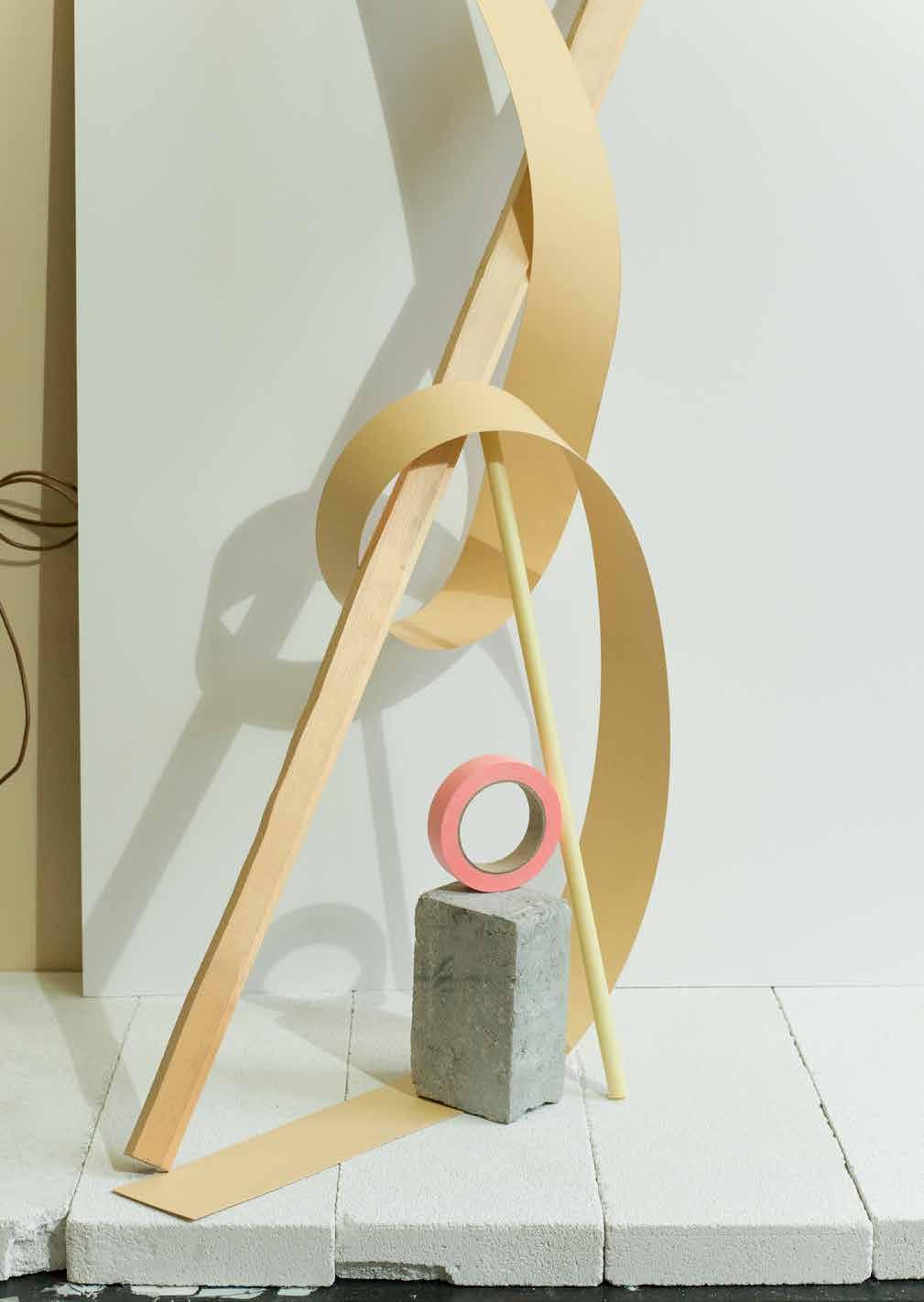
“Art is stamina”
This is one of the 10 rules by Klaus Jung, head of the Fine Arts department and it has inspired me to write this introduction. Stamina is perseverance, belief in oneself, determination and endurance. Stamina is key in educating art and design professionals, as it is in all aspects of the art and design making process.
All graduating students represented in this catalogue have been developing their art and design skills over the past years with great determination. They were educated by department heads, teachers, lecturers, mentors and academy staff – and by each other. The Class of 2018 has taken its time at the KABK to experiment, fail, contextualise, build, demolish, enrich and polish. I am very proud of the work that they present during the Graduation Festival and trust that the versatile education at the KABK has contributed to the increased stamina of all of our graduates.
In this catalogue, the department heads introduce their graduates, and in each of their texts you will recognise their pride and passion for preparing a new generation of artists and designers. I invite you to read their statements, as these highlight the artistic ambition and vision of each of the academy’s departments.
The graduation works reflect the themes of the academy’s educational approach. It is KABK’s mission to educate independent and self-aware artists and designers with investigative mindsets and unique visual and conceptual abilities. Furthermore, they are able to make a meaningful contribution to their discipline and to society by means of their passion, their deep expertise and their experimental approach.
Research is embedded in all programmes; students and teachers share their knowledge and practice in research groups and seminars. KABK’s international student population includes over 60 nationalities and fits seamlessly
with the professional field which is, above all, international. We reach out to the professional field, immerse ourselves in societal trends, and seek confrontation with the audience. One of the ways that we do this is through joint projects with external partners from various disciplines, ranging from government institutions to the cultural sector and business world.
I would like to illustrate this with an example that contains all of these elements.
Earlier this year, 49 Graphic Design students collaborated with Amnesty International on the occasion of the 70th anniversary of the Universal Declaration of Human Rights and 50 years of Amnesty International’s national section in The Netherlands.
The students took real case studies of human rights violations as a starting point of their investigation into the complex issues of data breaches and human rights abuses. Students have been looking into media manipulation, fake news and the dark web and were encouraged to formulate their own informed opinion on increasingly complex issues of the globalised world. Their speculative and imaginative counter-narratives resulted in a beautiful exhibition in Amsterdam, that was visited by His Majesty King Willem-Alexander and human rights activist Colin Kaepernick.
The collaboration with our partners is crucial and, again, requires stamina.
I would like to thank Amnesty International, Stroom Den Haag, the Ministry of Education, Culture and Science, the City of The Hague, the Keep an Eye Foundation, the Jan Roëde Stichting, the Schuitemastichting, HEDEN, the Institute of Sonology and the Composition Department of the Royal Conservatoire, Tassenmuseum Hendrikje, the Mesdag Collection, Gemeentemuseum, Bruynzeel Keukens, TodaysArt, Forum/VNO-NCW, UNSEEN, and many many others for their trust and collaboration in the past year.
A final word goes out to the graduates: from the very first day at the academy to your final exams you have been part of the inspiring community of learners that the KABK is. We will miss you, we wish you lots of stamina and good luck!
Marieke Schoenmakers Director KABKArtScience 10
Jan Jacob Boudestijn
John Eirik Sandli
Juntong (June) Yu
Fine Arts
Sam Andrea
Jihyun Baek
Quentley Barbara
Siem Beets
Laila van Berge
Cedric Oscar ter Bals 23
Marie José Blacquière 24
Heleen Boeken
Elza de Bruin
Sara Ceruti
Ioana Ciora
Melissa Couzijn
Jette Dalsgaard
Chloë van Diepen
Berk Duygun
Lucas van Eeden
Janne Secher Frausing
Gabriela María Galeano Batres
Grazia Gallo
Gorgels
Renée van Hagen
Heuvelman
Pilvi Ijäs
Juul-Sørensen
Kalkdijk
Benjamino Clasina


This year’s ArtScience Bachelor graduates are a small group, but they could not be more diverse. There is the silence contemplation of June Yu’s research, in which she combines elements of Chinese mythology with her personal ideas into a new, contemplative world — next to the grunting noise of John Sandli and friends, who do energetic live shows on their partly self-built and wildly hilarious instruments. And yet you cannot hear them either, unless you log on to a website with your phone. Then there is Jan Boudestijn with a minimalistic performance in which he creates a paradoxical situation: the more his body gets exhausted, the more it dictates him to move faster. The ultimate sportsman’s psychology made tangible. If there is something that binds these three works, it is that they deal with intensity — in the mind, in expression and in discipline. We wish these new ArtScientists a continued intensity in the development of their careers.
Taconis Stolk Head of DepartmentJan Jacob Boudestijn
John Eirik Sandli
Juntong (June) Yu
 Jan Jacob Boudestijn
Jan Jacob Boudestijn
jan@boudestijn.eu www.boudestijn.eu
The Netherlands
Project Een, Twee, Drie, Vier ‘1234’ is a performance, a display, a demonstration of human exertion.


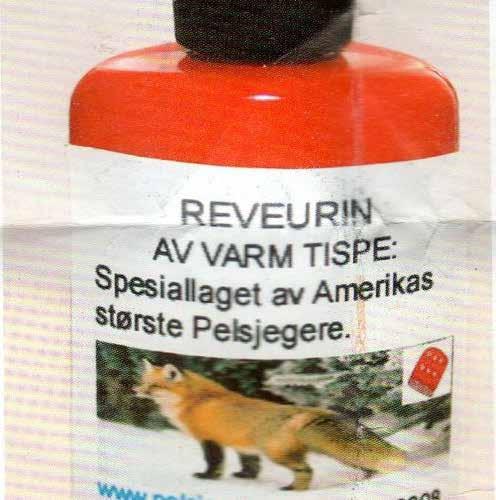
Repetitive movements guided by direct feedback from the body. Moving without any goal or reward. Striving towards failure.
Thesis
The Pentathlon of the Muses
In my thesis I have written about the rise of the modern Olympic movement, focusing on the development of the Olympic Art competitions.
This movement was initiated by Baron Pierre de Coubertin, who was determined to resurrect the Olympic Games according to his personal idea of what that meant. He insisted on including Art competitions in this famous sport event. For he said “Deprived of the aura of the Art contests, Olympic Games are only World championships”.
John Eirik Sandlijohnsandli@riseup.net catchy.cool Norway
Project THEY RUN AT NIGHT PLAYING MUSIC NO ONE LISTENS AND THEY LIVE IN TENTS AND PERFORM FEATS OF MAGIC Bado wop boooooo wapdam free download wap site Dam Dam pull boo binne wat wat wat wat! Also responsible for YAP Weeee HuYAP du This is also the case How and when? or Nana du hudaduda Also Mumble ... barudadubadubaduba WHAT ?! Click here to view this information Attention! How to du row! Huba bow bow to bow! Wow wow wowow!
Ooooooowrrr dooow training?
In addition there are others
Now Bow Bow, Mumble ... wow da du! Me bi of Jaaaahhhhhhh!
Also WHOOOOOOOIIIIIII!
Bo Hee makes Hee la Heee!
Hmmm! WhooHiiiAAAAAAAHHHHH
jobaHAAAAAjobaHAAAAA! Joba de Juba du dudn dooodn DOW! Not too much, but it’s too late Be in bap di deo How? Also ... The application is also a deo and at the same time Romanov de dau skiing bi bip dibiriii ...
Thesis
Droopy-Eyed Illuminati Pyramid Scheme
Please fill in: _______ __ and __ It focuses on _______ _______ ______. _________ _______ _______ Partially ______ Continue to Hyundai. That’s why I prefer that should lead to ______ _______, _______ _______ everywhere. Is this _____?
I’m ______. I’m not active. I’m just _____. I will be voting. But ___ _______ (a) ____ __ I think the same. I’m ________ active. We can ________. At the moment, I’m ______ ______ someone else called. ________ man. “___”. Yes, I’m one of them: _________. This leads us to ________. Where can I come from _____ __ ____ _____? What is ______? In ______, ____ is not ______. People can, of course, only _____ _____ anyway, why __. What ____? Have you ever been to ____ ____ _______ publicly?


junefishy@gmail.com China
Project
All that is around, from all directions
The project is inspired by and works in conjunction with my research: a ‘field’ exploration into the land of mysterious beings and figures of
ancient China. Word-pictures are (re)constructed as the visitor’s body moves, bends and get in contact with a composition of objects. Together, they dissolve past into present and virtual into real.
Thesis
Fox Affairs: Six Cases Of The Fox-Being And Its Relation To Ancient Chinese Culture
The fox-being holds a particular place throughout Chinese historical
records and literary/cultural imagination. Sits in-between human and animal, ghosts and deities, it acts as a catalyst for boundary-blending.
A travel log is compiled by following the ‘footsteps’ of its existence and attempts to make kinship with its many relations. The journey also reveal other possibilities of technical and scientific thinking through the tracing of a specific cosmogony.
One could say that ten statements guide our ethos at the Bachelor Fine Art - somehow like a manifesto. Five statements describe what we expect from the arts, and five how we imagine art schools, now and in the future.
Art is intelligence, a process of making, which is based on intelligent intuition, intelligent decisions, and an intelligent reflection upon our worlds.
Art is stamina , and not a hop on / hop off activity. Only a deep commitment, a persevering practice and a sustainable discipline can give birth to works of art which leave the short-lived moment of sensation and entertainment behind.
Art is generosity, and so much more than a collection of individual careers. Artists are well advised to be generous with each other; also with their work, but within the confines of a very decisive practice.
Art is knowledge, political knowledge, intrinsic knowledge and public knowledge. Without art we would know less.
Art is beauty. That still matters. From aesthetic beauty to disturbing beauty to revealing beauty.
And art schools?
Future artists meet at art schools. Art schools create the climate to attract students and teachers who might think differently and very individually, but who encourage, challenge and inspire each other. At art schools they create the networks of the future.
At art schools the future role of artists in our societies is invented. This is the case because art schools provide breathing space –at the same time fully aware and with a critical distance to market conditions and pure career thinking. Here we can experiment with the
role art and artists will have in the future, and how they contribute to the well-being of our societies.
Art schools are cultural institutions with an educational remit. We prepare students for an entrepreneurial professional practice called culture, containing all aspects of how we live together on this planet, all inclusive. That is why we are so culturally curious and directed towards international diversity.
Art schools align the past with the future. Here you learn from history to build the future.
Art schools sharpen the sensitivity for a quality of making, any form of making, as long as it is decisive.
We believe, no, we are sure, that also this year, a fantastic group of Fine Art graduates has taken these statements to heart. They will line the path into their future.


afteraids@gmail.com
samandrea.nl
The Netherlands
Project Fabriek Fabriek. Lichaam en brein, algoritmes in dienst van mijn welzijn maar zo vaak met elkaar in conflict.
Figuren in een symbolisch bos beelden een worsteling uit. Elke emotie, slechts onderdeel van het chemisch proces dat zich binnenin de fabriek afspeelt. Chemische processen die onderhevig zijn aan zelfdestructieve
patronen. Drank en drugs verduisteren het beoordelingsvermogen en vervetten de lever. Misantropie, liefde, depressie, verleiding, woede, leven, dood, allemaal thema’s die voorbijkwamen in het gevecht dat het maken van de fabriek teweegbracht. Wie ik ben is niet duidelijker geworden. Wie ik was misschien wel maar die persoon bestaat niet meer. Acceptatie. Een wedergeboorte in olie en pigment. Tot op het bot en terug naar buiten.
Seks, geweld, het sublieme en ik Diep in de krochten van de menselijke psyche, onderdrukt door een

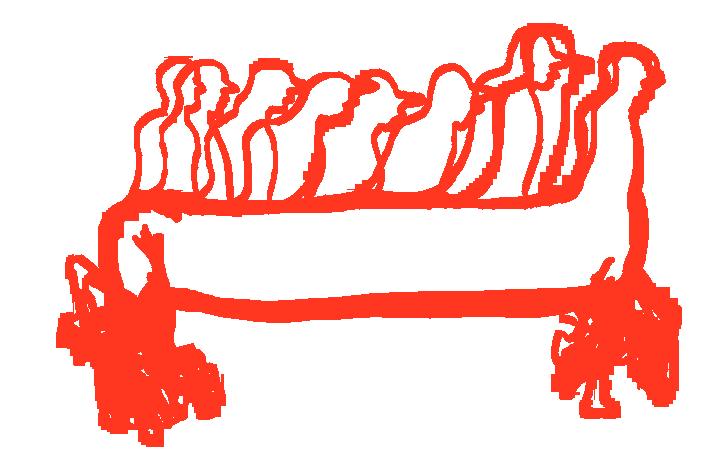
vals geloof in onze superioriteit over de rest van de natuur, bevindt zich het dier dat wij zijn. Dat dier heeft behoeftes en driften die worden onderdrukt in de naam van degelijkheid. Ik ken deze driften. Ik denk dat iedereen ze kent en dat iedereen ze heeft. Beestachtige driften van honger, woede en seks die ons tot oncontroleerbare gekte kan drijven. In mijn scriptie heb ik geprobeerd mijn ideeën over mens-zijn, het sublieme, seks, geweld en oerdriften te contextualiseren naar aanleiding van persoonlijke ervaringen en onderzocht hoe dit gegeven is besproken in verschillende discours.
bji9504@naver.com
South Korea
Project Nodding
Finding new formation of us was my long-term research. Those new forms are mostly founded by observing a relationship. For example, two people are connected, simply by walking towards the same direction and they became four leg animal.
Thesis
Visualized non visual relationship 3 different theories that describe invisible relationships visually. Scientific evidence demonstrates how fungi can get stress, religious viewpoint, philosophical viewpoint.

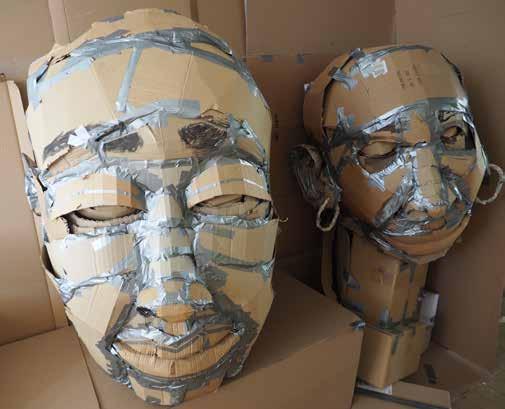


qb-93@live.com
quentleybarbara.com
Netherlands
Project “Foreigners”
For my graduation project I wanted to depict the relationship I have with my family, which is a part of my biography. I started with my mother, who has a huge influence on my personality. While working I applied the emotions about my relationship with each family member I depicted. Since I have an interest in art and music (rather than an electrician’s
career like my father, grandpa, uncles, brothers, and cousins), I am considered the black sheep of the family. The work is a large sculptural form, with a monumental shape showing a facial expression. I combined it with cardboard and duct tape, giving its own authenticity. Various memories of feeling loved, maltreated and encouraged have provoked me to make these sculptures.
Thesis
Relations to identity, autobiography, storytelling, popular culture, social media, and cardboard. My thesis is about my relation to my identity as an artist from Curaçao
who emigrated to the Netherlands. It includes the story of Fresku, a hiphop artist from Curaçao. He is struggling with his identity and created an alter ego (Gino Pietermaai) to fit into society. Furthermore, I included a compilation of stories taking place in the past and present, like the tale of Nanzi. Metaphorical potentials of cardboard have been used in the works, each material representing itself. Another theme is social media, the fascinating phenomenon and exposure to society, dancing, showing the naked body. I want the readers to learn something about my culture, to consider it and discuss it with me.
siembeets@gmail.com siembeets.hotglue.met
The Netherlands
Project
Becoming Infinite Human
Becoming Infinite Human is a result of a formal play between different media; graphics, painting and sculpture. In this play I desire to deny the tradtional values of painting, through reproduction and playing in- and outside the painterly frame. The aim is to make the imbedded
systems in painting more human and fragile. To deny absolute values of these systems and the value of the work itself through reproduction. The Infinite Human is the result of exploring these grey spaces. It finds itself in a similar conflict. The Human becomes a symbol of infinity as well as finding itself an utterly incapable form. Wherein it can barely function.
Thesis
Transcendental and Politically Engaged
Transcendental and Politically Engaged practices is a research on the artistic practices of the Viennese
Actionists, Agnes Martin as well as Hans Haacke. The idea is to look at the different approaches in making art and looking for commons, to zoom into them and see how they can evolve into different strategies of making art. Just like in my own practice I try to find a middle ground between two phenomena or attitudes that presumably exclude each other.

info@lailavanberge.nl
www.lailavanberge.nl
The Netherlands
Project NEW fabula
Being A Star In Your Industry Is A Matter Of Myth
In the absurd ordinary there is a meet and greet between Kim K. and Icarus, here Hades holds the keys to the third world. The common sense, norms and values are expressed by idol and icon.
A dialogue emerges between the



contemporary symbolism and classical iconography, a tension between trend and tradition. The hallucination of a utopia, materialised in media and entertainment.
Expressed by use of stereotype and cliche as a base for interaction to expose the hidden archetypes in person and product. Simulating and expressing reality while encoding virtues and standards.
The search for meaning and belief is a core theme in people’s life. Man seems destined in its urge to believe and to worship. It simulates and
creates a base for truth, a perspective to handle reality. Generally, this belief got shaped in a form of religion, that is a construct that structures a society and personal thought. It generates a certain truth by myth, that enhances archetypical information. This is expressed in symbol and ritual. Today it is not much different, guided by the given idols and icons supplied by pop culture and the commerce. A spectacle or marketed myth is created, which guides our daily rituals, habits, symbolic language and values. This simulacrum might function as the sacred in the secular society.
cedricterbals4@gmail.com www.cedricterbals.eu
The Netherlands
Project Verdun 1916†
Visions and hallucinations give me a sense of my former self, a German Frontsoldat serving on the Western Front during the Great War of 1914-1918. In the chaotic context of insanity and war, I try to categorise a personal moral compass. I depict this categorisation, using concepts
and symbols from Christianity, WW1 and my hometown of Scheveningen. Devoted to the believe in reincarnation, I died at Verdun in 1916.
Thesis
Spectatorship in Outsider art
My thesis subject is about three Outsider artists that I compare to five criteria I found in the theory of Anja Novak, about spectatorship in installation art (Leiden University, 2010). Based on my definition of Outsider art, I chose three artists: Willem van Genk, Gustav Mesmer and Richard Dadd. These three artists worked in an installation-like manner but the way they are pre-
sented does not necessarily relate to their discipline. I concluded that the criteria almost don’t apply to the work of these artists. Furthermore I found that the institutes displaying the work are more than often former asylums. And I end my thesis with the question: Does the knowledge of viewing Outsider art in a (former) asylum change the way we consume it? I believe that further research is necessary.


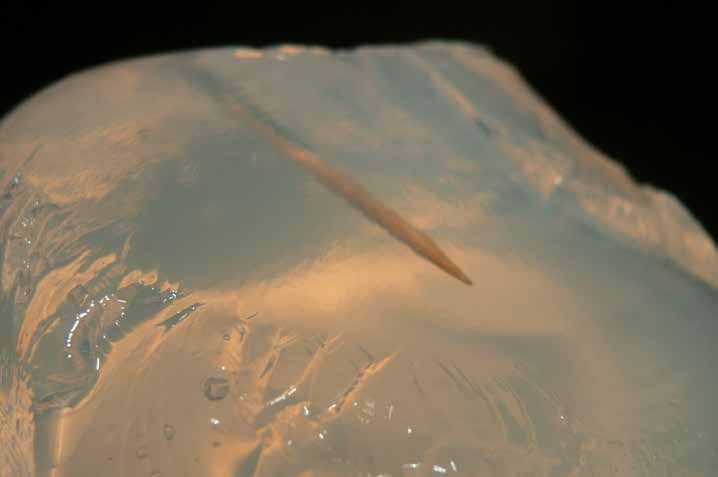
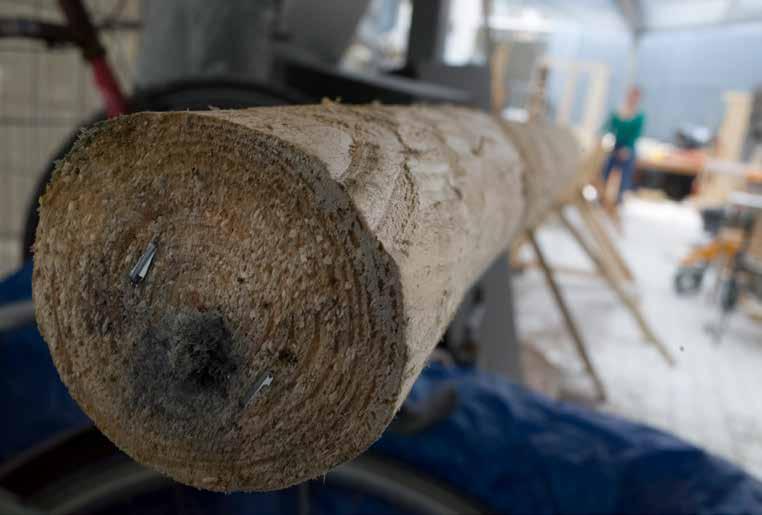
mariejose.blacquiere@ziggo.nl www.mariejose.blacquiere.com
The Netherlands
Project Onderweg
Images form the paper and my flatscreen fill my head. I feel scared, ashamed, guilty. Where is a place to feel safe and at home?
Blankets a metaphor. Blankets to warm you, to hide in, to create a safe haven. Patterns that move with the blankets, sometimes still intact, otherwise seemingly falling apart and starting to live their own life.
Thesis Onderweg
Using my name as starting point and the title of Gaugains painting (D’où Venons nous, Que Sommes Nous, Où Allons Nous, 1897) as guideline, I have thought about my origin, my
existence and worldview. I asked questioningly where I belong, where I am home, feel at home, what home actually is. Giving words to my thoughts helped me getting sight at my source from where I choose my directions.
heleenboeken@hotmail.com heleenboeken.com
The Netherlands
Project 1058
As you can cut into stone and wood, you can also cut into space.
Thesis
How to create a sculpture garden and why
In my sculpture garden high-quality contemporary art is showed in a
cultivated natural environment. The garden is accessible for everyone in society. The garden is relevant in both the art world and the world beyond that. The garden is an artificial paradise where nature and art are in balance. It will be a fruitful place where new thoughts can originate.
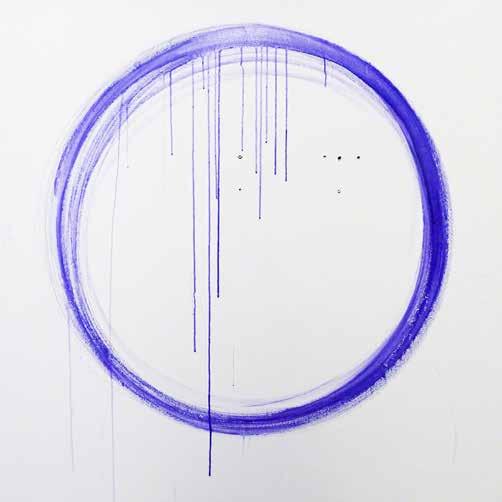

elzadebruin@hotmail.com www.elzadebruin.nl
The Netherlands
Project Sandbagflying and other actions
The actions concern manifestations of existence. These actions might also be seen as collecting moments of living, or as the movement of life or even as the passage of time. What is the sense of living? Or is life
without sense unless we value it in a way? Whatever that value may be. What is the sense of looking at art? And what is the sense of making it? There might be a type of in-between space, a transitional area between the autistic and the realistic world. Maybe we meet each other in this imaginary world?
In The Hague at the end of 2017 a wellknown detective finds a set of images on the street. His curiosity
about the identity of the maker is aroused. His quest leads him and his companion along a wide variety of topics. Artists, their works and art movements are related to religion, psychology and philosophy from East to West. Discover the nonconceptual reality of zenmasters and the transcendental aspect of art, music, religion and science in everyday life.
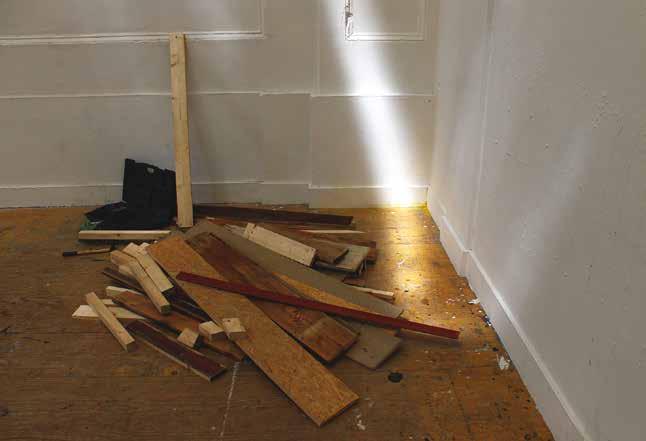

saricerz@gmail.com www.saraceruti.com
Italy
Project il Settimo Giorno (on the seventh day) I build a house: I build for this house a table, so when you come I sit with you. I build for this house a bridge, so if I would leave I could come back too. I build for by this house an observatory, so when you don’t find me here, I’ll be finding myself there.
At this bridge we met and at this table we’ve been sitting and we waited for eachother to come out of this observatory.
Yesterday I was a table at noon, a bridge in the morning and an observatory at night.
Tomorrow I’ll be the table, the bridge, the observatory. But today I will be resting, today you’ll just see me.
Thesis on HOMO MIGRANS and the re-locative identity
Migration is a fundament of human nature. It manifests as physiologi-
cal need, out of curiosity and into spiritual drive. The geography of a landscape models the geography of a man and the man reflects his own geography onto the collective which inhabits the landscape. This process happens every single time a certain people migrates. Each of us individuals is responsible for the fertility of this process visualising and strongly holding on our purest essence which allows us to be recognized as unique and to be able to always localise and claim our sense of ‘home’.

ioanaciora10@gmail.com
www.ioanaciora.com
Romania
Internship: 1646
Project
All about good or bad. Metaphorical swipes of a generation
This work that has helped me find my material, be myself without being afraid, has its funny, troubled, young personality; just like the generation I’m mocking, MY generation, it needs attention in order to be functional.
The texts are criticizing superficiality and the absurd, my irritation

to extremities and how quickly we “digest” information. Varying from one sensitive subject to another – feminism, the art scene, body shaming, politics – and using cut out words, these fictive articles require a relaxed mind and sense of humor to be taken in. Seemingly activist, I’m using the back side of advertisement banners and poetic sentences, with a dash of mechanics – it imitates something we’re familiar with: swiping through our social media. troubled, young personality; just like the generation I’m mocking, MY generation, it needs attention in order to be functional.
As it’s something I do a hundred times a day, overlapping, combin-


ing, memorizing, completing, the simple objects/actions that surround me, it was a natural step for me to write about a mixture between the conscious and the subconscious, where visual associations happen. After researching on Russell and Hume, I made my own conclusion as well in relation to dreaming and what happens in our minds when we sleep. Why we remember certain dreams better and how some people associate them to real life events? How and why do we have random visual explanations of certain object or situations? How linked are these and are they coming from the same source and the dream symbolism? These are a few of the questions raised and answered in my thesis.
mellie51@hotmail.com www.melissacouzijn.com
The Netherlands
Project Structure of Feeling
In my work I investigate the (uneasy) interface between nature and civilization. We’ve become increasingly alienated from each other and our communities. On top of that we’ve seem to have lost all connections with nature. Our concept of nature has drastically changed over
the years. Contemporary nature is increasingly represented by artificial design that has to generate the mere illusion of nature. However, the way we build, shape and inhabit our world and the place we assign to nature herein says something about us as humans. In my paintings I try to formulate a new narrative of longing, structured on a belief of the possibility of a better future for our civilization.
Thesis Metamodernism
In 2010 two Dutch culturalphilosophers introduced in their
essay Notes on Metamodernism the term metamodernism. In short, metamodernism can be understood as a general response to our current, crisis-ridden, times by a generation that attempts to surpass postmodernism. Therefore metamodernism is reflective of a generation reacting to its predecessors by saying: “We’re tired of listening to your whining. If you are so concerned about the moral state of society, then do something about it.” The next generation of artists is doing something about it. In my thesis I explain exactly what metamodernism entails and I connect it with my own artistic practice.


jettedalsgaard1@gmail.com www.jettedalsgaard.com
Denmark
Project untitled
Every time at full moon my grandmother would take me to the top of the hill; we would walk there silently. It was a magic moment.
I aim to point out or point at the poetic potential of daily life.
Investigating the relationship between object and space, the distance, shapes and materials define a rhythm. Parallel to a poem, concrete and abstract at the same time, now transferred into space. I work in various materials, wax, wood, words, stone, metal, clay, paper, pencil, thread, colour, fabric, silicone, plaster and resin. Intuitively I translate impressions, emotions or a vision into form. The connection and attention to the quality of the material, and the state of mind while making, are important. Every sculpture has its own nature.


Thesis
The mountain Fully prepared
Silently travelling Questions sheltered under thousands of feathers carefully distilled
chloevandiepen@gmail.com www.chloevandiepen.com
The Netherlands
Project Today, I even veil the mirrors According to writer Blaise Cendrars, when you look at something, that something looks back at you. He
says ‘’Writing is a view of the spirit. The world is my representation. Humanity lives in its fiction. Today, I even veil the mirrors.’’
During the Graduation Festival, I will be distributing a booklet throughout the school building. The stories in the booklet are written with the eyes. A fragmented contemplation on vision, where rhythm and repetition play a role to animate things I see with a soul.
Thesis
The Protagonist We enter a painting. Yes, inside of it. We follow the protagonist throughout the course of the evening. Inhabiting his unconscious stream of thoughts, akin to his physical presence in the depicted scenery. And somewhere in-between this painting and my exploration of it, we find a character in which you may or may not recognise yourself.



berkduygun@gmail.com
www.berkduygun.net
Turkey
Internship: Moose Space
Project The Contemperror
The Contemperror is a mobile, independent, artist’s initiative gallery on wheels, which does not rely on any foundation, base, or any specific
location. It focuses to present radical, outcast, straight in the face artworks that are not commonly seen in typical white cube galleries. It has 4 square meters of exhibition space, which can be extended to 14 square meters with its extension wings and portable walls. The gallery space includes two floors, a stage for performative artworks and sound performances, a sound system, projection space, a big ass screen, enough seats to host and travel along with 5 passengers and a power generator that works on gasoline. Yes, it is safe, includes a
fire extinguisher, medic pack, an assistant with a driver’s license.
Thesis
The Necessity Of Social Stratification For The Survial Of The Masse
Social Stratification is a big part of human nature. Since there is a limited amount of resources and goods that could be collected, how much inequality in the distribution of the resources is beneficial for the survival of the humans? When does the stratification begin to cause more harm than good?
lucasvaneeden@gmail.com lucasvaneeden.com
The Netherlands
Project Untitled
The first confrontation of an installation by Lucas van Eeden will raise questions. Only upon the second evaluation the artwork reveals itself metaphorically, in the sense that the works are subjected into life within the physical world and in other metaphysical forms. The most important elements in his creative process are playing, alchem-
ical methods and pseudosciences.
Regarding social interaction with the audience: the objects, constructions and setups enter into a relationship that involve the spectator; they are intertwined within the space and each other’s proximity.
“If one understands form as only a basic state, then they miss feeling; physicality is gone, only we make form relevant.”
Thesis
Het object en het duplicaat I am looking for the ultimate existence. An ideal life is a life in which you can focus on self-development and social aspects: friendship, love, work, safety and happiness.
Happiness, the least materialistic ‘material’ that we can create, being completely free. It is the most valuable thing in existence. It makes life bearable and gives value to what really matters. It’s a matter of inner peace and satisfaction. Art is less about reason and more similar to religion. They share the same values in many areas. Art is not a traditional religion. Art is the new religion of modern secularised people, with galleries as new temples. The greatest interface between art and religion lies in metaphysics. The supernatural: elusiveness, the incomprehensible.


jannesecher@gmail.com www.jannesecher.dk
Denmark
Project a little muscle quivering within my grasp a thought something to dwell on simmer down detail and whole order tranquillity
I imagine that my works form a space. Within each work and among themselves. Literally as well as metaphorically. A place for you to find peace to go exploring, outwards as well as inwards.
Thesis
my counterpoint
“Do you have a favorite color?”
Malcolm Morley (p 140): “No.“
Steve Mumford (p 147-148): “Well, I don’t have a [particular] favorite color, but I do love alizarin crimson and I love burnt umber. And lately I’ve also developed a real reliance on ultramarine violet. And oh, Naples

yellow is another favorite.“
Quotes from Fig, Joe: Inside the Painter’s Studio, Princeton Architectural Press, 2009 I had walked out of my everyday life and into the calming colours, the smell of forest floor, the crackles of crisp branches and whistling treetops. Lightly compliant ground carried my steps. The bark of a tree, bumpy and rough. My palm smooth and susceptible. A wood sorrel soft to the lip revealed its secret in my mouth. Life tingled around me.

gabygaleanob@gmail.com
Honduras
Project Consumir
I want to collect the sweat that overflows through your pores. Boil it and make myself a cup of tea.
Thesis
Mejorando la Raza
All that is foreign is better than our home products, beauty lies within
straight blonde hair, blue eyes and a tall and slim figure. As countries colonised by europeans, foreign religion, practices, knowledge, traditions, and rules were forced upon us while what we had before was hidden away, a great amount now lost entirely. As a result, the people that are left are cultural hybrids.




Grazia Gallo
nescio91@hotmail.it graziagallo.com
Italy
Project unfunctional green I am inspired by useless things.
I am a collector of useless things. This work seeks to create a dialogue between different found objects, showing them in their own pure and simple beauty.
The method, is to struggle.
I like to challenge myself in how I can combine all of those found industrial materials, without destroying their
own previous identity, even when they are part of a more complex arrangement. In the installation, every object loses its own function to become just part of a composition where the main objective is to look, to observe, as they are posing for the public.
I feel obliged to collect all these abandoned materials; I want to give them a second chance to shine, while for many others, they are just leftovers.
Thesis
In Other’s words
In Other’s words is a collection of quotes from writers, sociologists, philosophers together with my own
reflection, on the feeling of alienation in the modern society.
Puzzling, putting together, combining elements are also central ideas and processes within my own artistic practice. In this book I wanted to experiment how I could translate this working method, combining samples of different texts and my own images.
Through the collection and arrangement of toughts, coming from different minds, I wanted to underline the importance of individuality in a general, broad, context. In this case, the importance of the individual thought is reflected by the format of the book itself and its content.
miekegorgels@hotmail.com www.miekegorgels.com
The Netherlands
Project
The Map is my Home
I am a traveller. I have no culture, yet I have many. I have no language, yet I have many. I have no home, yet I seek a place to be happy.
I am a traveller.
Feeling attached to a place and longing for another place go hand in hand. Physically, I am in one place. In my imagination, I can be in different places simultaneously. A place is connected to emotion. Going from one place to another opens up new ways of seeing and thinking.
Thesis
Journal of Youthful Travels
Inspired by needlework samplers of schoolgirls in former times, the so-called ‘souvenirs de ma jeunesse’, I have attempted to materialise, in
texts, drawings and embroidery, my childhood memories of living in different cultures. In doing so, I try to make visible the openness and sense of adventure in discovering other cultures, that I experienced as a child and still consider very valuable as an adult and artist. Embroidery is a way of discovering the world. Although it is an art form that is practiced in specific forms in different areas of the world, it mainly shows what connects us as human beings. Studying embroidery is like studying human nature.

reneevhagen@gmail.com reneevanhagen.com
The Netherlands
Internship: W139
Project Reaction Room, F(ee)(il)ling Space
There are many ways to express the importance of the tactile sense of our experience and understanding of being in the world. Our tactility is the sensory mode that connects our experience of space with that of ourselves. It is the basis for our existential experience and it makes
us aware of where we are located in space. The physical body is the center of our worlds, it functions as our reference, allowing us to imagine and merge with our surroundings. The room will house various medium that illustrate the interaction between the First and Second Impressions. The performers will experience freedom as I outsource their authenticity throughout the space and outside of it, in what I call ‘Reaction Room’.
Thesis
Reaction Room, a space of creation through First and Second Impressions
When moving around, I know through experience that there


is something underneath me, supporting me and stopping me from floating and sinking in different spaces. I am aware that when I touch a specific object it will execute some degree of resistance, I can tell that it is solid. I feel physically in contrast to another physical space, and understand it as an entity that is completely separate from my body and that my body and mind have to find a way to adjust to cooperate with this space. Sense perception gives us the possibility, to anticipate and direct ourselves, directly and indirectly, into space. With this knowledge we are able to use this to our advantage and make this phenomenon operative.
marinaheuvelman@gmail.com
MarinaHeuvelman.com
The Netherlands / Japan
Project Colors extracted from conflict
The urge to run is comfort the will to fight is instinct
Consider my generation flaw as I always have envious of something I used to have too stubborn to ever go back Colors become meaningful in floating minds strange events through favorable shortcuts
Where thoughts fall short image takes over, creating an own entity in the studio. The flow one finds themselves in reflect an inner dialog. Pursuing ones primitive needs, the instincts for color, shape and materiality reveal themselves. After accumulating an abundance of extractions, one tends to restructure to find narrative.
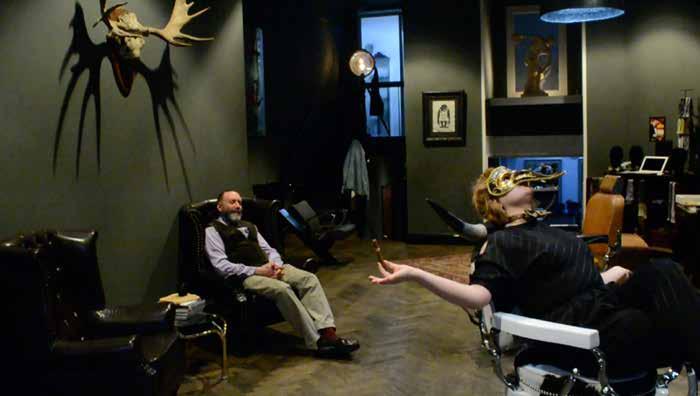

ijas.hanna@gmail.com
Finland
Project A already happened, A was Me This work is an investigation into social and power games we play out with each other. There are two characters appearing: Mr Morris and Me. Who are we, and why are we here together? What are the possibilities of things I can become?
Who is the director, who is the author? Who is in charge? The work is a process of making a performance where the line of reality and acting is blurred.
The work consists of a video and live performance.
Thesis
The Hero Effort
A hypothetical mind game of daily life is created, by using the book “Finite and Infinite Games” by James P. Carse. The game lures us to play out our roles in society. Reading


“The Hero Effort” can be seen as a simulation, where the reader enters a game after game reflecting themselves to the presented ideas and questions. The readers find themselves in a maze where they try to find a personalized way out. The far too rationalized game of daily life, shifting from a role to another, doesn’t give much to play with. One needs to go through it repetitively until they realize the fluidity of playing. Until the fluidity is found the simulations will work as planned – we work as we are told to.
tinnkaj@gmail.com www.jinateranko.com
Slovenia
Project zblojeni shojeni
A stream of thoughts, a performance, a monologue divided between a few performers acting it out. You were right, it is mine, it is fine. About the monologue, how many characters do you have inside?
Do you ever count? Does it matter?
Please be kind and gentle in wretched and stretched atmosphere, it can break. So many states of mind, switching so often, don’t have to focus on any, go with them, ride as they come, as they go. Are you sure you want this? Precision in decision making process.
Thesis
voice overtakes meaning
Voice is linked with our consciousness. It comes before explanation, before definition, before words.
We use it when we decide so, when we are forced to or when there is an urge to use it, most often when we want to communicate with the other. We use it when we want to socialize and when we want to confirm our existence. What does it mean to be self-conscious and to have a voice? How are those two related? How can we define consciousness and conscience in the first place and where does it stir from? How do voice, conscience and identity intertwine?
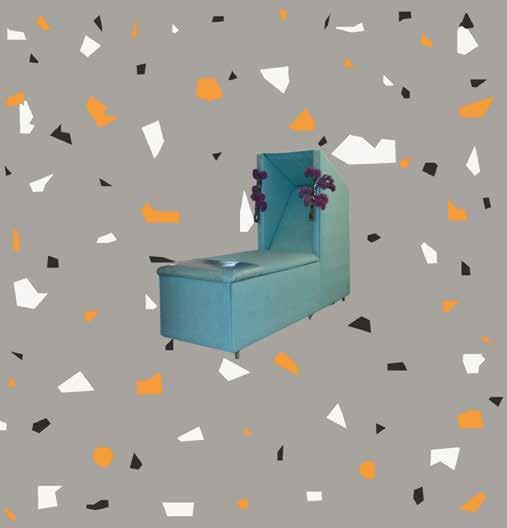

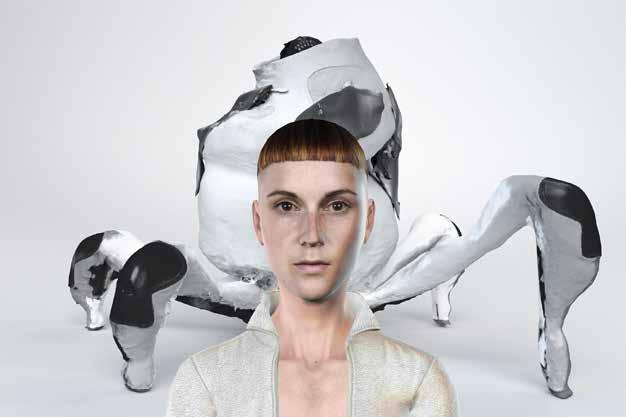

nataliqiordanova@gmail.com www.nataliajordanova.com
Bulgaria
Emma Johanssonjohansson.eis@gmail.com emmajohansson.hotglue.me Finland
Project fight, flee, blend
Our existence is a protracted struggle of survival. Who is responsible and in charge of it? Can my successful survival be guaranteed when it is out of my hands, will it remain a priority? Is the wish for autonomy
an irrational paranoia or a healthy desire for self determination? In order to survive we need a set of skills and equipment that is in constant flux, depending on our surroundings.
Thesis Portals
The central question of the thesis is: Does a heterotopian treatment of space have a significant role in socio-politically engaged contemporary art practices? The thesis focuses on artworks that seem to have an agenda of catalysing socio-political
change and that use the production of space as a central method for this. According to Michel Foucault a heterotopia is a space which attempts to reach utopia, although never completely getting there. They are spaces that differ from and contradict all other spaces, having a distinct meaning, set of rules and functions in contrast with the surrounding spaces. They are spaces of illusion and compensation. Can an artwork function as a heterotopia, or could the context of the art world be described as one?
Erasmus exchange program‚ Central Saint Martins, London
Project Museum of Non-Human Ethics
My work results in a coded reference riddle. Within a sculptural installation, objects appear as artifacts from a near future, which humanity is currently constructing. An avatar welcomes you both into a physical and digital context. I use these spaces to translate the notion of media-
tion and relationship between body and technology. Translated into their digital versions, the sculptures’ materiality and empirical data are preserved. They become part of the image circulation, bypassing physical distance, concerning the body in presence. The museum, as proposed is placing us in a speculative scenario in which ethics are assigned to non-human, human-created entities. Whether or not they possess rights, is not a question of 2084, but of today.
Thesis
The
The center of my fragmented narrative is the human body, its
relation to technology and the consequences on our perspective due to fast-changing conditions. It revolves around the impact of mediation and the way we connect to the world in those newly created places of being and spaces of self-representation. The starting point of my research and further articulations is the subject of mediation itself. It is followed by differences and similarities of avatars, cyborgs, and ideas of posthuman bodies. Are they different species, or is technology an extension of human evolution? This led me to the more personal and intimate space of an individual. Achieving post-digital intimacies is seen as self-knowledge and relationship with the other.


oscarjuulsorensen@gmail.com
nobodyputsbabyinthecorner.com
cleantv.live Denmark
Project BEST PRIZE TROPHY WIFE - THE STORY OF MRS CRABAPPLES
A white privilege blind heterosexual man falls madly in love with an exotic but dangerous woman who turns out to be more than he can handle. He shows her his world, takes her on a journey of a life time to find out there is no stopping the powerful mind of his lovers heart.
Overpowered by the despair of his lovers urges he frantically tries keep the love from dying using every trick in the magic book. Like umbilical cords tying each other together in lust and passion growing stronger and thicker - in the end the cords get knotted up - the knot becomes the noose of the love that once was a bond so strong. The future is female Mrs Crabapples says - will she come to terms with herself - will she discover freedom once more?
Thesis TOO MUCH SAUCE: Creating your own special ingredient
Colonel Sanders’ Special Recipe 101: The medium must be a unity of as


many different strains as possible, in order to create an overarching feeling. Like a giant virtual reality pizza, reaching as far as the eye can see with toppings changing throughout. It is about feelings and reactions, but it stems from memories of the past that mirror a voice of culture, upbringing, and desires.
Entertainment, super ego - wanting to be the best in the world, Patrick Swayze - because you pull the buoy far far into the sea, until it reaches it’s peak atmospheric pressure and shoots upwards and pierces through the surface of the vast ocean soaring into the sky with all the power from being trapped on the bottom of the sea.
lynn.kalkdijk@mac.com
The Netherlands
Project Enantiodromia
“The attainment of any extreme position is the point where it begins to turn into its own opposite — a pro-
cess that can be dreary & repetitious without the realisation that opposite extremes are polar & that poles need each other.”
Thesis
BIOPHILIA; THE.IN.REVERSE. VERSE.
The love of life or living system.
A primal yearning to go home and a hypothetical reverse.
A research on the unity of human nature and its universal dual language of creation and destruction, life and death; biophilia or necrophilia.
The curse of alienation, the cure of shamanism and the scale of enantiodromia.



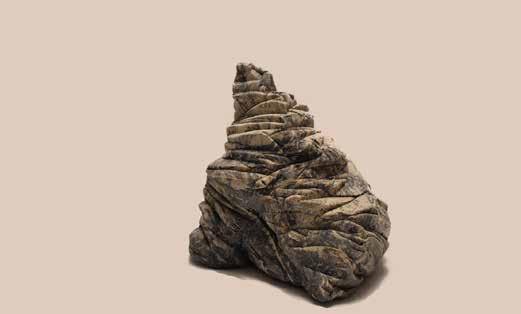
naeunkang94@gmail.com
South Korea www.naeunkang.com
Project Fleeters
My work is about capturing fleeting moments against their volatile and ephemeral nature. Moments of
non-dramatic suspense, silent collision of fragile things, and inconspicuous, gradual mutation – I want to contemplate and preserve them by painting them.
Thesis
Useless Devices
My thesis came from the idea that researching and designing useless devices would facilitate gentler acquaintance with our chronic
condition of (what Albert Camus refer to as) the absurd. The research involved seeking useless devices’ relation to the absurd, incongruity and humour, examining already existing useless devices and identifying what makes them provide inadequate solutions. And this research is reflected in the final section of the thesis, where I present designs of my own useless devices.
angiekorst@gmail.com
The Netherlands
Project “Het is de onrust die de mens voortdrijft.”
Gerrit Komrij
In de aanloop heb ik kleine handzame sculpturen gemaakt. Het archaïsche karakter van deze werken en de manier waarop ze
ontstaan dwingen me tot het maken van een groter gebaar.
Hoe iets wat je graag wilt zo ver weg lijkt te zijn en je hele wezen overneemt, je gedachten stuurt.
Als een constante boven je hoofd zweeft, de begeerte vergroot en de droom op zich, weleens de ware wens zou kunnen zijn.
Thesis
Het Kunstorgaan
Laten we voor een moment aannemen dat kunst, de kunstwereld een stelsel is. Een complexe
onlosmakelijke verbinding van verschillende organen, die met elkaar samenwerken. Er komt informatie in en uit en het heeft invloed op het grotere geheel, het organisme. Voor het gemak haal ik de spijsvertering aan. Een systeem dat bij de meeste mensen weinig geheimen heeft. Het spijsverteringstelsel, van kanus tot anus, is een actief stelsel. Het is dagelijks in effect. Het is de voorwaarde voor leven, het zet voeding in energie en bouwstenen om.
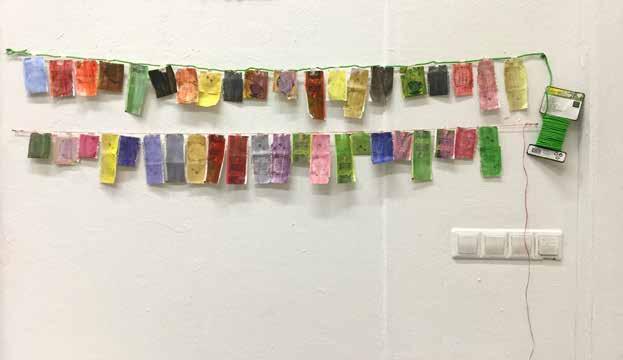

heleenkruijt@hotmail.com
heleenkruijt.nl
The Netherlands
Project THINGS
Why are they so attractive?
The shapes, the structures, The sounds
The colours
I want to hold them
To feel, to squeeze To hear
To admire
I cannot escape
The things define my life And I like it
This year my mother moved to a nursing home
The household that surrounded her for almost fifty years fell silent Suddenly abandoned the things could only wait
Wait for me.
Thesis
THE LIFE OF THINGS
“What is your thesis about?” People ask.
“About the emotion of things” I say quickly because I am not so sure myself.
People look at me puzzled “Things with emotion? Or do you mean “Things that evoke emotion?” It is still a question for me as well.
My thesis starts with these sentences.
In the thesis I investigate my relationship with seemingly useless things in daily life, ánd the role of (contemporary) art in this. Are the ‘things’ of value only in relation to us human beings? But why do ‘things’ seem to become more autonomous when they are stripped of their daily function?
The basis of the booklet that become my thesis consists of edited antique book pages, artist text fragments and my own prose.


infoluukkuipers@gmail.com www.luukkuipers.info
The Netherlands
Project CAP / CAW (Camels And Pyramids / Cold And Warm)
One of my intentions is to create approachable artworks (mainly paintings), because within this approachability, I’m able to find ways to communicate about things that somehow got lost or subjects that are not so clear (anymore).
Thesis
Taking distance as a pure form of involvement
Taking distance as a pure form of involvement is a research on a natural and automatic working process and its uncomplicated work. Even simple things can turn into difficulties, but I prefer natural processes to be redirected without losing its essence.


shanileseman@hotmail.com
www.shanileseman.nl
The Netherlands
Project
The universal animal
No, no, not yet, but we are getting closer.
I think we found their house, but they are not home. Here, like in a ritual, every object has a reason to be.
The dog is the only one allowed to be laying on the ground. He is not lazy but saving up his energy. He is resting next to the fire,
yet perfectly capable of handling any danger that might come up. The objects are marked by time. Making them, baking them, glazing them, time is passing as you do. They could break, before you know it, shattered into smaller pieces, eaten by worms, dissolving in the water.
Infinitesimal! Everyone leaves again, one by one they go. I open the door, greet the dog, I step outside, the dog greets me.


The Ritual of Art
In my thesis, I research the relation between ritual and art. I parse and analyse the concept of ritual to get a better understanding of it, and thereby a better insight of its components and remains to be seen in contemporary art. This thesis turned out to be a selection of four keywords: action, belief, communication, and function, which I found reoccurring in descriptions of ritual, using them as guidelines to formulate an approach to making and looking at art. In this approach, which I called ‘The Ritual of Art’, I am metaphorically experiencing making and looking at art as a ritual.
brigittelouter@xs4all.nl www.brigittelouter.com
The Netherlands
Project
syzygy in a negative leap second In the third act of my thesis, which functions as a script for the work, a character named and embodying ‘the purposefully useless’ collects the pieces of superfluous symbolism that were shaved off explanatory visuals and assembles them into a sequence of ideas and objects in a confined space that functions as a pataphor.
(The pataphor, popularly defined as:
“That which occurs when a lizard’s tail has grown so long it breaks off and grows a new lizard.”)
Creating a world of inflation and deflation, where formal elements from worlds with halos of seriousness stop referring to their original context, and become the matter of a nature in which curious, absurd and sometimes childlike laws structure chaos.
Thesis ON HUMANITY’S ATTEMPTS TO UNDERSTAND (AND POSSIBLY CONQUER) THE WORLD
A thesis in the format of a script for a play that is not necessarily supposed to ever be performed, in which ‘Humanity’, a robotic charac-
ter, tries to understand (and possibly conquer) the world.
Humanity encounters the characters Truth, Love, Consciousness and Reality, and attempts to make sense of them, employing tools of exact and objective measurement and interacting with archetypes of the scientific method.
These props and characters are dealt with in absurd manners and the play increasingly becomes determined by the slippery laws of exception and equivalence, that lead to outdated, pseudoscientific and metaphorical conclusions of world-explanation that are very disputable, but somehow resonate with Humanity’s deeply felt yearnings.

 Foteini Makri
Foteini Makri
fotinimakri3@hotmail.com www.foteinimakri.com
Greece
Project Play me I play YOU play HE plays SHE plays
IT plays WE play YOU play THEY play
Thesis
Either with it or on it
An insight perspective on our humanity , the way we sympathize and dominate eachother. The way we perceive and relate to unfamiliarity.
The way a character can matter
more for the viewer rather than the creator.
‘’Honesty does not need words to exist but relies on simplicity. It stands on the manner by which integrity is displayed. Even absurd words can somehow be spoken with truth by the manner in which they are told because they speak the language of the mind and not of logic.’’


florencemarceaulafleur@gmail.com
florencemarceaulafleur.com
France
Project
The formation of the physical landscape
It could be said that it started this way, in the life sculpture class, led by the chance of a day-time job as an art model. Sitting on the floor, the head bowed to the stomach, I considered the folded space. This field of vision was purely composed of skin, and yet foreign, disembodied. There was also this human urge, the
need to proportion the world to my vision and body. In short: there was the desire to make a landscape from the formlessness I saw.
As a matter of fact, it is possible to calculate the surface of the skin of a human body, as its weight and size are known. So I started a drawing, a 1,6549 m2 landscape. However proportionate, the surface felt much bigger than me. Drawing became immersive – just as posing was.
Thesis
} ·
Methods exist not to get lost; I could have employed them here.
To perform this research, I could have organised a defined field around a single question, hoping this
thesis to be clear and pleasant to read, like meadow grass is pleasant to watch as the wind forces it into one direction.
But I do not trust such clarity in art. Therefore, I needed methods to get lost.
This thesis does not start from a fixed definition, but in a collection of images, and notes I make about them. By this repetitive task, an order emerges. Images seem to morph into each other. Some fascinations return: landscape, sensuality, decay, gaze, cruelty... All the texts and pictures touch upon the same point, which remains undefined. Rather than a title, I needed a sign.
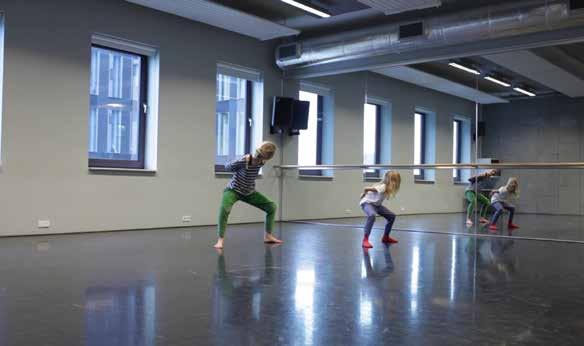



saulejuste@gmail.com www.saule.work
Lithuania
Project what do we do now, now that we are healthy No two living things are ever exactly alike. Obsessions don’t have preliminaries.
We exercise together and learn from each other, using each others weight, creating opportunities or situations where certain move-
ments, or movement possibilities could exist. In reality we are never really able to completely isolate a single part and move or affect only one part. The part we choose to isolate only exists and functions in connection with the whole. In this same sense, just the collection of parts does not produce a whole. Can we become aware of our physicality without using any extra effort?
The thesis discusses the shift of physical wellness from being a
radical action practiced in small communities fighting against capitalistic structures of society at the beginning of the 20th century towards something that can be bought, consumed and sold nowadays completely losing the aspect and importance of community. The second part of the thesis focuses on the way different aspects of the physical wellness are incorporated and contemporary wellness trends are questioned in the practices of the artists Lygia Clark, AA Bronson, Ivo Dimchev and Monica Bill Barnes company.
ntrijntje@gmail.com
www.trijntjenoske.nl
The Netherlands
Project A Monument for the Absence 2.0
The Netherlands is a highly structured country. Everything has its place and if not, something is done about it. My thoughts go to the moments where this structure fragments. Moments of flux. Building sites, for example, are places that are constantly changing with regard to structures and materials. I focus
on constructions that have been carried out by workers. However, because many of these constructions are no longer visible, in my opinion both the deployment and the construction process are not always appreciated fully. I focus on the heart of the construction and to take away the obviousness of a construct.
My installations are mainly installed by experts which is a tribute to these craftsmen and their knowledge.
Thesis
‘The non-studio artist’ (De atelierloze kunstenaar)
In her thesis, Trijntje Noske focused on idealistic artists who are critical
towards society. Artists who have been creating new, future-oriented visual languages. Trijntje looked at ‘non-studio’ artists. A non existent term until Trijntje appointed it. The ‘non-studio artist’ is used as a name for the artist working outside of the actual studio. For example the public space: an artist who enters a social cooperation. Trijntje has her own methodology. The idea of a ‘non-studio’ artist makes sense in her artistry because all over her work/projects got developed into different forms outside of the context of the studio.



 Julia Valentina Ester Olaussen
Julia Valentina Ester Olaussen
ubervalentina@gmail.com jveolaussen.com
Norway
Project Chora
Through my voice and by the sound of the harp created by Catherine Mooreland, a Chora will be staged. What is a Chora you may ask?
Chora is a mental memo, a place to remind you that you consist of
biological material, and within this packaging material, there is a space called consciousness.
This space is still a mystery for science but potentially, since it is universal, it is also accessible.
A non-judgmental space founded upon the inbetweeness for centeredness, humility and acceptance of the ambiguity of existence. There will be created a Chora.
Thesis
Nothing is given
“Modern life has alienated the individual from himself. The materialistic and rationalistic 19th century, with its emphasis upon all the bourgeois routines of life, has externalised the individual, has efficiently attached himself to its outward activities, that he has lost the feeling and the passion for his own personal existence; it will take nothing less than the presence of death to restore to modern man this sense of life.” –
William Barrett Gideon Oostengideonoosten@gmail.com
The Netherlands
Project
The small forest known as the Haagse Bos has a long and rich history. A lot has happened in and to it, but ever since WWII it had a chance to grow and develop in relative peace and quiet. That is, until I came to study here. In the second year of my studies I stole my first tree out of the Haagse Bos.
In total I stole six trees, with the help of a small group of accomplices. Now I have grown to regret my wrongdoings. I am trying to develop empathy for and understanding of the trees that I so brutally robbed of their lives. In an attempt to make up for my sins I crafted a gift to give back to the trees and forest. I can only hope it is the right one.
Thesis
Van wie is mijn kat?
In my thesis I researched the relationships between me and my cat and me and my mother and I
started with the question: “Can living things be property?” I tried to get into the minds of my cat and my younger self to figure out the unspoken thoughts and needs of these parties and other questions presented themselves: “How do humans relate to other living beings?” and “Who is from whom?” I looked for answers in Dutch law and the Bible, both being books of reference for large groups of people.


valters.palaps@gmail.com www.valterspalaps.com
Latvia
Internship: Bob Eikelboom
Project Poetics of Time
I am an observer and my work is based on my intuition. I leave my work open for individual interpre-
tation, because everyone has a different perception for life. It is a poem in which ingredients come from surroundings and experiences. My short film is connected with the installation of natural materials. It’s the special and wonderful things that I see, that I want to bring across.
I think communication doesn’t have to be expressed vocally or through words; emotion is another form of message. ‘’Art symbolises the meaning of our existence.’’ – Andrej Tarkovski

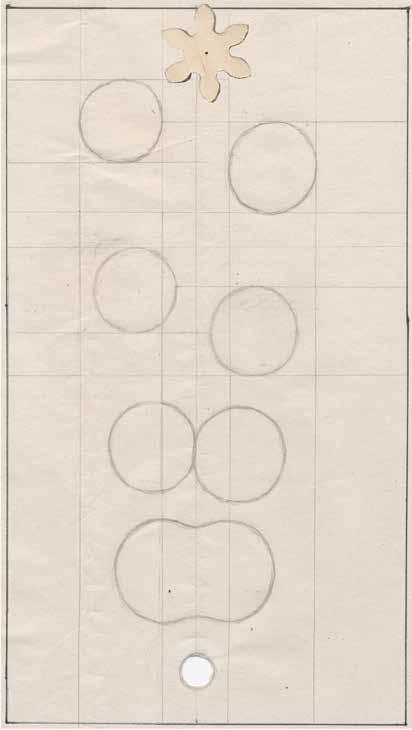
janneschipper@live.nl janneschipper.info
Thesis
Atmos Sphaira
What is Atmosphere? What creates Atmosphere?
In my thesis I explore senses and how they perceive surroundings. I am going through my own senses and experience. Thinking about how we or what creates a specific feeling of place. How a specific medium gives us a emotion.
The Netherlands
Project {\displaystyle f} f
To start with, there probably is no cadre. But at least somethings can be seen as one. Even in their most rigid shape, in their most measurable moment, they remain a momentary one.
An Island appeared. Not the tide made it appear, not the waves who pushed the sand. Out of the green water it appeared, bare, naked.
A tiny dot on the horizon.
It seems to move up north.
Over the next week, the dot became higher above the horizon of the sea, I thought it was a little house. It stood on the right side, all the way on the shore.
The tide almost took it down.
And then the roof disappeared. And also the walls. Then it was build again. Slowly it moved away.
Thesis
A Matter of Correct Distancing, a play written to be read
The distance between the bodies ‘artwork’, ‘artist’ and ‘viewer’, can be approached through the notions of
criticality, emancipation, morality, beauty and innocence.
These entrances I found particularly interesting, first, because each of these notions carry with them an opposition that expresses itself through the mutual relations of these parties. Secondly, the different scopes, distances and a feeling of –perhaps– responsibility changes the position that art and artists take, in the context of criticality, emancipation, morality, beauty and innocence.
In this thesis, through the format of a play, these notions are investigated whilst the tension between particularities is sought for to resist the creation of one dominant narrative.



 Leonie Maria Anette Schneider
Leonie Maria Anette Schneider
lschneider93@hotmail.de leonieschneider.hotglue.me Germany
Project Immortality Commune Anticipating the birth of the immortal civilization.
This is the future human, the technological, constructed by the engineer - man. He recycles.
The humanitarian part is completely removed, he is a construction.
Being a part of the mechanical doom, this family of golem is not just a bunch of machines, they are quirky personalities.
We are yet in control of it. Not long until we return to nature.
Thesis Is dread in control of our social and political actions?
In my thesis I analyze the production of a wall and its social and political mechanisms. When we protect ourselves from worst-case scenarios
and transform immaterial fear into a real physical element in space, then we create symbolic gestures that patronize prejudices. Fear remains fictional but alienation becomes real. A wall shows an imaginative anticipation of what could happen.
A current example in my home town Munich allows me to reflect on integration policy.
Nathaniël Scholten
cnscholten@gmail.com www.constantijnscholten.nl
The Netherlands
Project i still haven’t found what i’m looking for Soms dan kan ik toch zo genieten van een film met Gwyneth Paltrow
en/of Ben Affleck in de hoofdrol, of van mijn eigen voetjes als ik ze in mijn Uggs laarzen heb gestoken. En soms kan ik ook heel erg glimlachen als ik in een boek van Gerard Reve verzonken ben.
Maar naast mijn eigen voorkeuren ben ik misschien nog wel het meest gelukkig met andermans voorkeuren, de bestaande dingen in de wereld die zich voordoen in ons alledaagse.
Thesis
Nader tot Het
In Titaantjes schrijft Nescio het volgende:
“Het was een wonderlijke tijd. Als ik er even over nadenk, dan moet die tijd nog voortduren, die duurt zoolang er jongens van negentien, twintig jaar rondloopen. Maar voor ons is hij lang voorbij.”
En daar wil ik het voor nu maar bij laten.
sophieschulte@live.nl
www.sophieschulte.com
The Netherlands
Project The Power of Transforming
About a year ago I fell in love with the act of transforming – the physical act of transforming into someone else. People have been transforming themselves for thousands of years for various reasons: it has been used to pursue power, for entertainment,

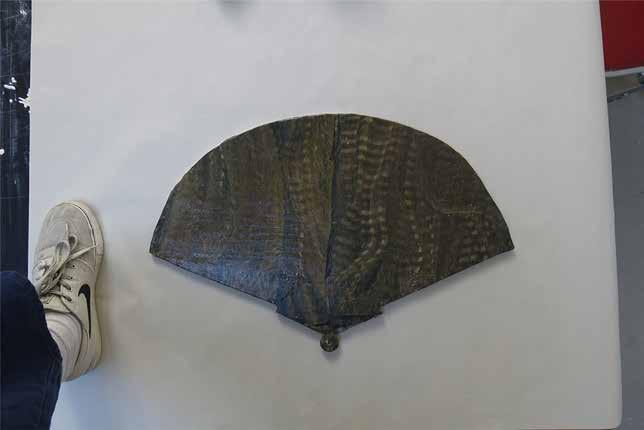

and, since a century, in the visual arts. The Power of Transforming dives into the world of transformation by exploring identity, dress, and costume, to unravel what the freedom of transforming is, and why becoming seems to be equal to looking alike. It shows that when transforming, by assuming physical characteristics associated with the donned identity, we can subvert societal expectations of the other, making transformation a powerful medium to navigate through society.
Thesis
Decaying bodies, boyfriends far far away, and cry worthy political developments make me want to cry, but make me sing - blowing them up into uncanny scenes. Now, fed by The Power of Transforming, I’m fascinated with the construction and the power of identity, and how it becomes malleable with the use of dress and transformation.
Nikki_selser@hotmail.com https://nikkiselser.cargocollective. com/
The Netherlands
Project Reincarnation is a metaphor
Like the children’s teeth fallen out of the mouth and placed back on sate sticks in a heart shape supported by green foam. Or two fishbowls that can stand for eyes and the fish in them are the pupils.
When you merge a classical tramp stamp tattoo with the outlines of mountains or volcanos.
The whole world is on your feet and you own it. Bring it closer to you, understand it.
Like going out on a night with waffle hair, forget what waffle is and mix it up with a fan. Accepting a waffle-fan is a thing now.
Standing under a bow to enter, finding pebbles in the shape of teeth on the ground. It’s all a metaphor somehow.
Thesis
Swimming, painting, glitterstickers
How can we interpret the question that Michel Foucault asked himself: why couldn’t everyone’s life become a work of art?
By giving meaning to life, as a direct reaction on a thought or action. See the art of life, as a summary of the total lifespan of a human. And optional. To use art, as a representation or fragmentation of life.
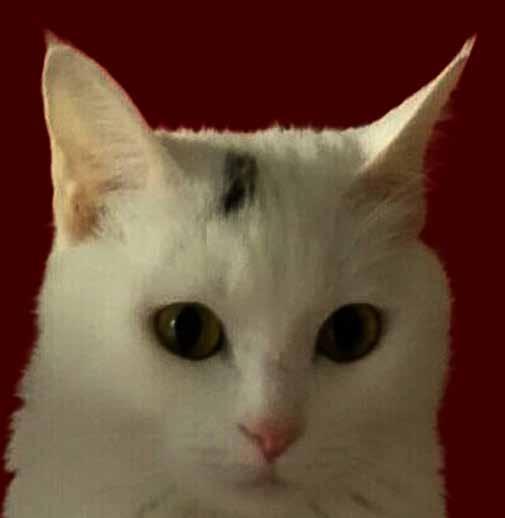


Mimi Shi
shihuilin940810@gmail.com mimishi.co
China
Internship: Mimi Shi Co., Ltd
Project PreMiere Festival
The PreMiere Festival is hosted by Mimi Shi Co., Ltd as a debut of the brand new multi-media corporation - Mimi Shi Co., Ltd., trading as Mimi Shi Group, was founded by Mimi Shi and Shi Bank, along with Mimi Shi Entertainment Group (MSEG) as
well as the non-governmental organisation Mimi Shi Foundation. Mimi Shi Co.,Ltd. investments include entertainment, catering, fashion, securities, and multi-media publications. The diversified businesses of Mimi Shi enable it to become a player across various industries. Furthermore, the interaction and collaboration among business groups have created synergy, enhanced efficiency, reduced costs and achieved resource-sharing, further improving the competitiveness of the Group.
Thesis
Between the Author and the Narrator
The collection of papers revolve around story-telling, proposing the examination of interplay between the author and his or her work by raising the central question of the role of an author: What position does an artist as the author take in a fictional artwork? Studying the author’s involvement in a fictional narrative, the paper is mainly based on Mikhail Bakhtin’s novelistic theory of polyphony and Heteroglossia, Roland Barthes’ theory of authorship work, and a case study of Franz Kafka’s novels among others.
daphnestandaar@gmail.com www.daphnestandaar.com
The Netherlands
Project
The invention of photography is one of the most sensational of all time. Without photographs, all

human history could have been made up. They count as evidence for everything that has ever existed. My base contains mostly of photographs from the beginning of photography in 1826 till around 1910. They make me wonder curiously about long outdated objects and vanished architecture. Springing from a belief that life in that time was authentic and uncomplicated, and the lack
thereof in the present, I am nostalgic for a time that I have never known. In my work I give lost entities back a sense of momentousness, as well as I nurture my longing to the past.
Thesis
Ingesleten Olifantenpaadjes
A research on modern myths




jansteenman_@hotmail.ch www.jansteenman.com
Switzerland, Sweden, The Netherlands
Project “On n’est pas bien là?”
An unusual encounter appears between entity and attributes.
A surreal scenery, where the human shell is facing its microscopic and macroscopic components. This confrontation exists in a plastic world, where originality has collapsed, under a pressure of repetitive production and consumption. However, the white plastic furniture has transformed and lost its initial function to become a support for an artistic expression. There is a shift in the system of hierarchy: our
human body cannot make use of this support anymore, only its physical depiction can.
Thesis
Physical Matter Matters
The role, the effect and the significance of clay.
dafnitrika@gmail.com www.dafnitrikatsoula.com
Greece
Project You walk around in the inmost, with some cracks of conscious that you vainly try to remember Sharing your space with a person who has limited self-awareness. You feel you have been part of this state of mind. You relate yourself to this
process of temporary disconnection from the environment and you dive into the feeling “I am lost”. Just an ongoing peripatetic experience.
A mental time travel. The inner voice is aggressive. Alone? In the search of an identity or the loss of one.
Thesis
Alzheimer’s and the Vesica Piscis
My thesis subject is about “Alzheimer’s and the vesica piscis”. The term ‘vesica piscis’, meaning ‘fish bladder’ in Latin, is used for the particular symmetric lens formed by the inter-
section of two equal circles whose centers are offset by a distance equal to the circle radii (Pedoe 1995, p. xii). The two circles represent two different spacetime(s) that we could call past and present. The intersection between these two circles, in other words the vesica piscis, is for me the schematic visualisation of the time and space experience of an Alzheimer’s patient. I imagine this experience as simultaneous realities, ‘overlapping’ each other. It’s about a sum/aggregation of two realities.


Cyrill Rafael Vasilyev olenisinelo@gmail.com www.thepresence.org
Russia
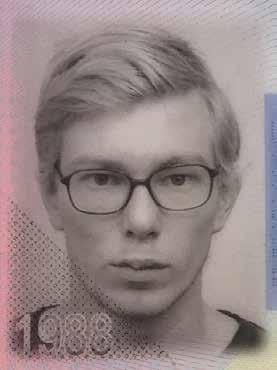

Project slime jewels from the subatmospheric apoptosis device
These are those other things, profound, difficult to understand, tranquillising, sweet, not to be grasped by logic, subtle, beautiful.
Thesis
instances of repetition
My universally departed Derelict mind, imagine
This happening to you Whole life lifted up by recitation of Ever-occurring, ever-present dignity How would you feel?
This present situation, Repeated over and over again Each moment filled with grace and presence
By your nourishing awareness
Each moment a celebration Of one way and of many ways.
contact@roryvanwingerden.nl roryvanwingerden.nl
The Netherlands
Project
Herinner me de dag (Remind me the day)
Imagine yourself entering the house where Ludwig Wittgenstein lived in Norway for some time during his life. I did the same and filled it with my own search for spiritual meaning, that found its right to exist in the history of art and the call for death.
Thesis
Een parodie op mijn eigen geweten (a parody on my own conscience) I took a dive in my own memories. Remembering what I remember makes me question what my memories say about myself. Why do I remember what I remember?
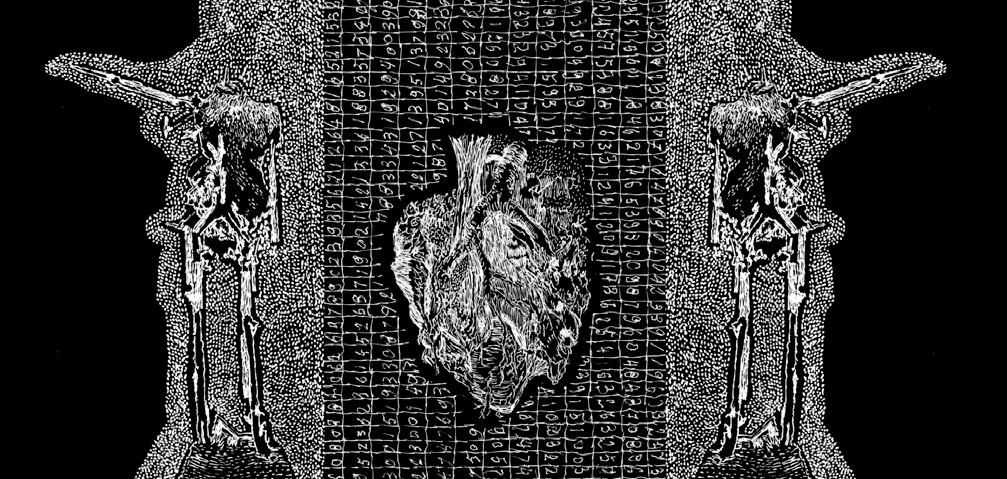

levina.levina@live.nl
www.levinadewolf.com
The Netherlands
Project
The Sandman (Where I Go to Sleep)
In een nacht vol van zuchtende slaap tasten mijn vingers langs vijandig ruwe muren en mijn voeten op een onverschillig koude vloer schaatsen mijn lichaam naar het varende bed dat nog net niet kapseist op de golven van geforceerd verlangen.
In a night, full of sighing sleep, my fingers run along hostile, rough walls and my feet, along indifferent cold floors, skate my body to the sailing bed that just not yet capsizes on the waves of forced desire.
The voices and props of my graduation work lead you into the border zone between sleeping and being awake. In my installation I bravely attempt to create a refuge for myself and all others, who wish to surrender to yet unknown dreams.
Thesis
The Metamorphoses, About Misshapen Bodies and Artisthood Ovid’s Metamorphoses was my Bible for the last months. I feel connected to this ancient epic about physical changes and deformations because of the small disability I incurred during birth. In my thesis I searched for the meaning of misshapen bodies in art. Through literature study and my own experiments with translation, illustration and poetry I discovered how art can conquer a place in the world for the abnormal body and its experiences. In this strife, the deformed or disabled itself transforms by becoming a powerful source of comfort, healing and hope.
khachapyri@gmail.com zalivako.fail
Russia
Project silver scanning When matter finally leaked out of its shallow faculty, the light have melted her ‘jellyfishdilemas’.

that feeling is magical, like the disappearance of eczema.i take my big suitcase and make a small step outside.the smell, the moist of the green. that sticker greengo on the aquarium. everyone’s heads gold. young, my is silver.you follow through the eyes, behind and may be you will see,the liquid brain matter he told me about,that shines with the moon light.wonders about and around,until it fades. until the thunderstorm makes you drop the shivers
off. until ginger has his greengo. until the open hours allows. until i can. until you will.
Thesis
internal burning.wondering fever It is about keeping your feet on the ground but looking up. and when looking up, be careful not to brake your neck.
The Graphic Design department of the Royal Academy of Art educates its students to become critical thinkers and versatile practitioners, who develop outstanding concepts for visual communication. Its worldwide reputation is fueled by thorough high-level education, the investigative and conceptual approach in teaching, as well as the excellent quality in the field of typeface design and typography. Here, students are encouraged not only to find answers to the problems of tomorrow, but also to bridge the past with the future by appropriating skills which we call ‘craft 2.0’.
Students at our department learn to address the challenges posed by the rapidly evolving media landscape and the shifts in political power towards neo-liberalism. The ideal graduate is an investigative designer who is aware of current affairs, chooses his medium wisely, and is familiar with both traditional and new media. The current generation of graduates display their extraordinary conceptual and visual abilities, extensive knowledge of the profession and the world, strong technological curiosity, and highly developed social engagement.
The Graphic Design department proudly presents its graduating students in ‘Cleansed, Peeled, Liberated’, a showcase of the extraordinary turn in the discipline of graphic design, where links between theory and practice, entrepreneurship and ethics, technology and craft, multidisciplinarity and specialization become apparent, and the role of the contemporary designer is being redefined.
Klap & Niels Schrader
Co-Heads of Department
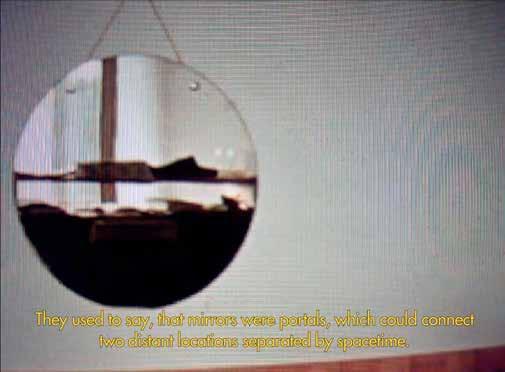


Nóra Békés
norabekes@gmail.com www.norabekes.nl
Hungary
Internship:
Richard Niessen & Esther de VriesProject The Unknown Planet
Which stories lay hidden in an archive? How to recall memories that you have never had? How to navigate through a stage-set which masks reality? The Unknown Planet is a metaphor for Hungary’s recent past, yet, it is a fictional space.
Archival photographs from the ‘60s, ‘70s and ‘80s are analysed and collaged together seamlessly to create a narrative labyrinth. A close-reading reveals the staged nature of the late socialist everyday life, and the recreations of iconic objects serve as props for this scene. You are invited to explore this excavation-site of collective memory, where methods of interpreting archivers and ways of curating the truth are examined.
Thesis
Reclaiming Wanderlust
Medieval manuscripts were produced between the 5th and the 15th centuries AD on diverse topics. Many of them attract attention
because of their lavish illustrations, others draw the reader with subtle visual sophistication. Even though these documents testify for a high potential in communicating messages, they are hardly ever discussed by contemporary graphic designers. What kind of visual strategies were used in Medieval manuscripts to communicate knowledge? What is the role of the specific elements in building narratives? How can historical research enrich contemporary graphic design practice? The thesis aims to answer these questions through a multi-layered visual and historical analysis of manuscripts.
paul_bille@me.com www.paulbille.com
Germany
Internship: Evan Roth
Project How Things Should Be Sorry! I was late for work. The page didn’t load, so it took ages to find a proper route through the traffic. I must have forgotten all my things in the store. And then I got into this fight with another rider. I don’t really remember what happened.
I think I fainted. Well, Whatever! I’m just gonna make the best out of it. Things can only get better from here anyway. I woke up at an undisclosed location. But I know where I forgot my belongings. I’m tired and I can’t go home. There are guests staying in my room tonight. Where is my phone? As I reach into my pocket, I find the key. But I don’t have a second pair. I guess I have to tell dispatch that there is an issue I have to fix before I can continue working. That’s the spirit!
Thesis
I think we can do better than that Growth is not only life itself – it is also a deeply embed process in
(Western) society. The desire to constantly grow drives your daily life. On a cosmic level it is the never-ending expansion of the universe. On an economical level it is the driving force of capitalism which produces a $600 wifi-connected-juice-press. And on a personal level it is the voice in the back of your head telling you that you had to buy it because that juice might be healthy for you. Time to look at growth from all angles. How does growth keep producing innovative juice presses, and can it still your thirst?




mail@thijmenvanbrunschot.com
www.thijmenvanbrunschot.com
The Netherlands
Internship: PublishingLab
Project
Deconstructing Perspectives
Many forms of bias are found in cartography, ranging back to the Middle Ages. Cartographers and mapmakers consciously and unconsciously alter and influence maps and their interpretation. Communist parties mapped out conflicts
one-sided, royal families were glorified, subjective and suggestive symbols indicated military deployment, and Biblical information was cited to spread ideology and pass on history. This project is an attempt to disregard the cartographer’s influence by stimulating people to understand conflicts better and thereby formulate an authentic opinion. Layering subjective information into the dynamic interface allows the spectator to explore the subjective statements and identify contradiction.
Thesis
Vooringenomen Cartografie Cartografen maken bewust en onbewust keuzes tijdens de productie
van kaarten die de interpretatie van kaarten beïnvloeden. In dit onderzoek is gezocht naar antwoorden op de vragen: “Welke grafische keuzes maken cartografen (bewust of onbewust)?”; “Wat voor nadelige effecten kunnen deze keuzes hebben?” en “Kunnen cartografen daar iets tegen doen?”
Ik concludeer dat cartografen en kaartenmakers voor tal van keuzes staan die direct en indirect effect hebben op de interpretatie van kaarten en dat de interpretatie van kaarten eenvoudig te beïnvloeden is. Vervolgens geef ik handvatten die cartografen helpen de nadelige gevolgen tegen te gaan.
rudivandelden@gmail.com www.rudivandelden.com
The Netherlands
Internship: Studio Remco van Bladel
Project Windows Without a View
If you could reclaim the missing third of your life, how would you spend it? Catch up on emails and work stuff?
‘Windows Without a View’ explores the bedroom as the new office cubicle, a place where people inexhaustibly complete HITs* as digital sweatshop workers or live stream
their sleep, altogether restlessly delving into potential new revenues of sleep. The merciless work ethos of the virtual economy has brought about a 24/7 labour of self-management making the disposition of every hour a matter of choice. ‘Windows Without a View’ fosters the commodification of time and obscures the distinctions between the virtual and the dreamed.
* Human Intelligence Task, Amazon’s Mechanical Turk
Thesis
The True Millennium Bug
The Millennium Bug; the first and last time I experienced collective fear and distrust of technology. The original Millennium Bug turned out to be a trivial bug causing small
scale involuntary time travel, the true Millennium Bug turns out to be the endless pursuit of virtual happiness with efficiency, comfort and control as ruling sovereign goods. ‘The True Millennium Bug’ is a research on the exploitation of sleep, looking into current efforts to reclaim the missing third of our lives, and the corporate potential of this loophole in time.


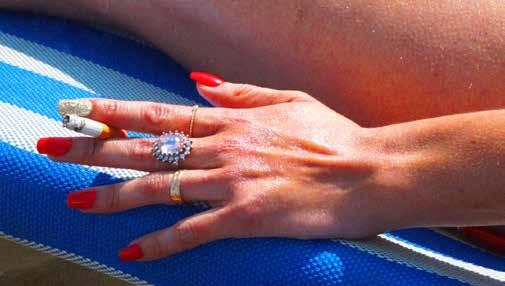
nielsvddonk@gmail.com http://nielsvanderdonk.nl The Netherlands
Internship: Lava
Project The Shocking Truth
Thank you for tuning in to TST news. The Shocking Truth is a literal fake news program, divided in 4 different media platforms. The first a state funded news program, second a spectacle news program, third a trendy Youtube channel focussing on youth culture and last a conspira-
cy, vlog based Youtube channel run by one individual. TST focusses on how much influence aesthetics and personality have on the credibility of news and the likely hood of a viewer to absorb the information. Although the concept of ‘fake news’ is widely known, fact checking still seems to struggle with the general public. We can not rely on a single news source anymore. The truth is out there.
Thesis
How To Sculpt A Crowd? Ctrl, Alt, Left, Right How can the approach and tactics of mass political and internet culture movements be used to create new politically engaged graphic design principles?
Looking at the outcome of Trump’s election, we can definitely see that memes and internet culture have had a high influence on the political views of entire nations. I believe that our current common identity is shaped by these memes. At school, graphic design students are being taught to apply certain communication principles to engage with a certain group of people, and communicate your specific political view towards them. We can now see that these principles don’t withstand against the easy, DIY style practice of propaganda and meme creation by Conservatives.
dusmetcarrasco@gmail.com carmendusmet.com
Spain
Internship: Metahaven and S†ëfan Schäfer
Project Good News
High probability of unemployment, low and falling incomes and no insurance in case of no income when incapable of work, are some of the defining attributes to 90% of self-employed visual artists in the

Netherlands. Designers perceive funding plans as a promised land to potentially overcome precarity. But what is a designer confronted with when presenting oneself to art policies? Applications present competitive market systems and increased demand for usability. Good News investigates the semiotics of funding and questions how neoliberal art policies promote individuality, whilst controlling individual behaviour. Through various visual narratives, the film unpacks the normative professional attributes prescribed by the creative industries.
Thesis
If It’s Not Alive, Then What Is It?
Design as a practice is changing. We are encountering design not only at a practical level, instead, we are starting to feel the autonomy of the discipline. There is an urge to discuss design’s life. The designer as a content-generator, the effects of this content and the fact that this content is alive when activated and understood by an audience is what gives design a soul. So, how exactly does something apparently inanimate—a concept—begin to be understood through the lens of life? The thesis explores the notion of autonomy in design practices and how institutional factors influence it.


info@lukasengelhardt.net lukasengelhardt.net Germany
Internship: Kévin Bray, Golgotha
Project
41 Shades of Blue
Graphic design is no longer subjective. At least online, every small decision can be tested: Chose the blue or the red button to optimise your conversion rate. A/B testing, formerly a tool used by a handful of tech giants to sell more products, has now become a product in itself.
With the help of a number of platforms you also can make your design decisions based on metrics—and you don’t even have to understand how it works!
41 Shades of Blue is a mostly-true documentary that explores the origins, the implications and the future of this new, evidence driven design practice. Between the Uncanny Silicon Valley and the Black Rock Desert of the Real it digs through layers of branding and looks at a world in which data has made design obsolete.
Thesis
PS: Magic 001
Despite it’s ambiguity, colloquially magic is everywhere. And it’s un-
graspable, not just as a term. Stage magic for example relies completely on the deception of the audience. Magic is something that cannot be explained—because one cannot (lack of understanding) or it cannot (inexplicability) be explained. Magic just works. In that way, it’s similar to technology or the economy—the things we believe in today, instead of magic.
Like these things, magic has been communicated through media throughout the ages. In these cases magic and design coincide; the designer and the magician could even be the same person. I’m wondering: what is the role of the designer in a world full of magic and can he use magic to create his own world?
a.g.p.evers@hotmail.com www.dreasevers.nl
The Netherlands
Project
Trans generational consequences of war
The papers are full of articles reporting traumatic events, war news in particular. There is however very little attention in the media on the consequences of war. Effects that are not limited to the victims who experienced these wars themselves. Every year, Dutch soldiers return from peace missions abroad that have been in war situations. In addition, traumatised refugees arrive in The Netherlands. Refugees that have been forced to flee their
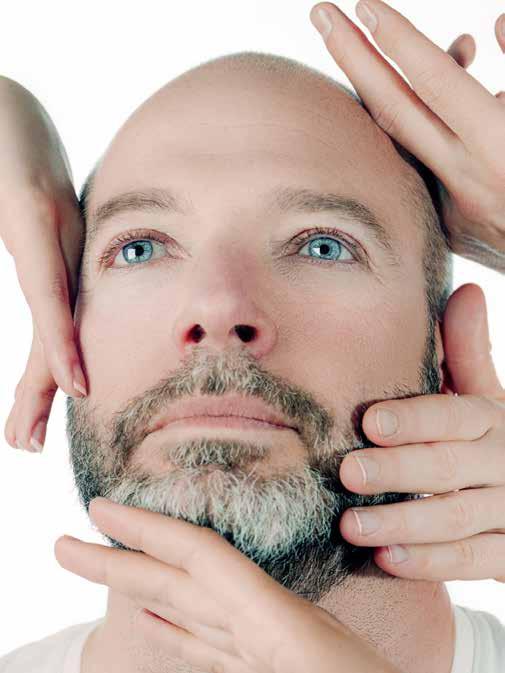
country as a result of war. In both cases we speak of first generation victims of war.
The Netherlands also has a large group of second, third and fourth generation victims of war.
Descendants of victims of World War II. Scientists and experts found out that the effects of war have a trans generational character. Two, three and four generations of family members experience influences by nature or nurture that determine their daily wellbeing. It is becoming increasingly clear that epigenetics plays a major role in this.
Thesis
Trauma, Design, Art: the possibilities
In this world, it is not uncommon for people to get traumatised. What are the possibilities a designer has with
regard to traumas and their consequences? The visual arts, applied art and trauma are the three notions that are at the core of my research, and that touch upon major topical issues as super diversity, slavery, colonialism, death, incest, war, terror, migration, sexuality, genocide, and religion. Through research, engagement, reflection and quality, a designer – in a dialogue with his or her environment – may transcend mere form. Form is only a medium to achieve higher objectives that are sometimes hard to quantify but that are extremely important for our vulnerable – occasionally traumatized – society to properly function.


gluhova.liza@gmail.com
http://lizaland.nl/ Russia
Internship: WOAU Rotterdam
Project Observatorium
Our bodies constantly produce data that can be measured, recorded, and analysed. On the surface, data seems like a magical box that makes decisions for you, but what can we truly learn about ourselves from it?
‘Observatorium’ stages the experience of collecting data, whereby
the visitor is asked to participate in order to be let in. This ‘payment’ grants access to the gathered data, the visual abstraction of which is prioritized over informative value. The visitor is confronted with numbers without units or reference marks; they are not judgmental, evaluative, or enumerative and in this sense they are pure. At the same time, this data doesn’t produce any knowledge, and only by applying categories or asking questions can one make sense of it.
Thesis
Inenarrable scenario
Throughout the history people had a desire to predict the future. It seems that if we foresee the upcoming
before it arrives, we can determine our present and therefore the future. Such attempts have even been reasonably accurate on occasion, but in general the technology still seems unreliable and rather confusing. Then how can we narrate our personal and collective future under the conditions of uncertainty and anxiety? The thesis defines the ‘future’ and investigates how we experience the present. It considers several possible future scenarios from the perspective of science, mass culture and art. These three disciplines help to create a broad overview of prophecies and identify the binding mechanisms between the future and the present.


amayahagelaar@hotmail.com www.amayahagelaar.com
The Netherlands
Internship: artless inc. (Tokyo)
Project
I still doubt about the title
Ever experienced sweat breaking out when you had to make a choice?
When decisions were tough, you’d rather turn around or let the decision depend on someone else?
In that case, you might have suffered from decidophobia. The fear of making decisions. Some people just have slight signs of anxiety, while other’s life are influenced immensely.
Every day we are confronted with
dilemmas and our choices are influenced by society. Even ordering in a restaurant can become stressful. So imagine choosing a study, decide what job to take or whether to marry or not.
However, it’s no shame to be indecisive. Not knowing what road to take is all part of finding our way through life. Like how I was trying to make the right decisions to get where I am now.


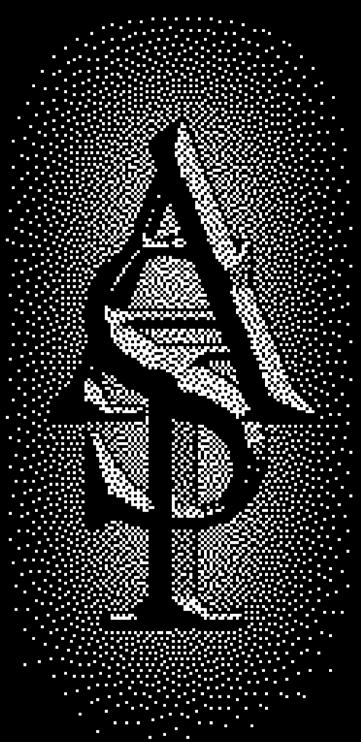

michielleihcim@live.nl michielheemskerk.com
The Netherlands
Internship: VOGUE NL
Project
The Family Pack
Welcome to our house.
A house where rules are broken, reconstructed and wiped off like smudged mascara.
The Family Pack is a home tour guiding you through several interpretations of family and their comfort-zones. The perfect, nuclear family is spread throughout culture in many ways. How do we digest this idea of family? This guided tour is guaranteed to give you a fresh, raw or new perspective.
Take a tour and binge eat a beefy, lasagna bolognese XXL, look for hardcore, masculine daddies and cleanse your skin with funky, powdery, wet baby wipes. Don’t you love the smell of it?
Thesis
Le Jardin D’Amour
The image of an ideal relationship is everywhere around us. The portrayal of the perfect romance in popular culture is mostly heteronormative. It is the ideal that a lot of people seem to aspire to. Le Jardin D’Amour looks into the elements that are used to construct this portrayal of an ideal relationship that implies an eternal state of bliss.
dhdzch@gmail.com www.danielh.info
Mexico
Internship: Knoth & Renner
Project Artificial Swarm Intelligence
Recent advances in the field of artificial intelligence have opened the door to many unforeseen possibilities. One of these is the ability to combine knowledge and data from vast amounts of people into a single
combined intelligence. Artificial Swarm Intelligence is an installation focused on content from reddit.com. Several chatbots were trained with data from certain subreddits, such as r/christianity, r/feminism, r/history, etc. This allows the visitors of the exhibition to talk to these websites as single intelligent entities. The bots become a representation of their respective website as a whole, and result in a new way of compiling and accessing information.
Thesis
Please be patient, I’m still learning
It is still very unclear what artificial intelligence will be able to achieve in a creative field like graphic design.
This is due to the fact that it is very difficult to emulate human creativity through code. This thesis aims to envision how graphic design can be generated through machine learning, and specifically through which methods this might be achieved. By experimenting with several models like deep neural networks, generative adversarial networks and genetic algorithms, the capabilities and limitations of these technologies are examined in detail. A deeper understanding of the potential of machine learning could point out how we could adapt to the major changes that are likely to occur to the discipline of graphic design in the near future.

 John Wei Liang Hoek
John Wei Liang Hoek
hell0@madebyjohnnie.com www.madebyjohnnie.com The Netherlands
Internship: De Kijm & Zonen
Project Airphone With new technology, comes new behaviour. We live in an era that
is constantly in contact with each other, all made possible by the smartphone. The device that is here interrupts all kinds of social interaction and leads to loneliness, FOMO, apathy, phubbing or even a digital burn out. Instead of physically connecting as in face to face conversation, we prefer to turn to our smartphone in social situations. This new form of behaviour that gives in to the attention demanding device, creates a fragmented, half focused and overstimulated life.
I aim to reverse this form of behaviour. Playing a physical game is the solution to experience real connection without the disturbance of the smartphone. Lets play in order to reclaim social interaction.
Thesis
Ik nog wel zeggen wat ik wil zeggen Satire in de vorm van spotprenten zijn een krachtig communicatiemiddel, maar er zijn grenzen aan deze vorm van de vrijheid van meningsuiting.
saver.javanmard1985@gmail.com
Iran
Internship: Studio Dumbar / 2016
Project
It will be a hard day for disbelievers When I was twenty years old, I burned the Quran in front of my mother’s eyes. I was extremely angry, but not particularly at the Quran. My problem was the contradictory face of religion. On one hand, the Quran as an important and poetic document that could help us to be better people. On the other hand, the religious authorities who

are exploiting their power for their own sake.
My mother, she cried and prayed desperately for her young son.
My project shows two different approaches to share my ambivalence. While one medium (painting) shows the aesthetic and poetic side of Quran, the other medium (performance) shows my self-punishment by reciting Quran and writing and erasing those verses over and over, a desperate effort for repentance.
My graduation is an attempt to make it up to my mother, even if it’s just a little, and also to the Quran.
Thesis
Gain can be loss, loss can be gain My thesis researches the relationship between text and typography.
Text is usually seen as just an ingredient that the designer needs to deal with in a visual way. But what if the starting point is the meaning of text? Does it change the way a designer works?
How do text and typography in design interact and how can they direct and influence each other?
My thesis reviews the works of two important text artists: Reza Abedini (from Iran) and David Carson (from U.S.A). Through their works I study the historical gains and losses of content and meaning within the technological achievements and eventually implement the outcomes of the research in a practical way (analogue and digital) in my own work.

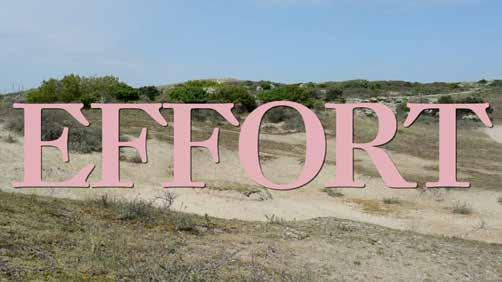

iesditsen@live.nl
www.yesditsen.nl
The Netherlands
How can struggle, pain and effort be glorified? In a society where tools and processes have been simplified in such a way that they can offer us instant gratification, we lack discipline and perseverance. We seek calculability, efficiency and profit and have a hard-wired desire for doing minimal effort with maximum results. However, it is precisely the
struggle, time, and effort that helps us to reach fulfilment and happiness.
Inspired by the Greek tragedy of Sisyphus, this project aims to trigger a switch between the results we desire, and the physical and emotional suffering that leads us to our goals. ‘The Perfect Struggle’ is a video-installation that celebrates struggle in a world that only celebrates succes.
Thesis
Mijn Sisyfus Arbeid Een fascinatie voor de doorsnee werkende mens, met huwelijk, modaal inkomen, hond en kinderen. Het idee van een opgelegde levensweg voedt mijn angst voor
de toekomst, maar is deze wel gegrond? Met de opkomst van zzpers, flex-werkplekken, kantooryoga en werknemers met extreem hoge eisen, verandert de norm. Burnouts, de bedreiging van robots, en doorwerken tot je 70e zijn geen uitzonderlijkheden meer. Door middel van een dialoog, geïnspireerd op de klassieke Socratische dialoog, onderzoek ik de factoren die het werkveld veranderen, en ga in gesprek met mijn generatie over hun toekomst. Of mijn angst gegrond is blijft een mysterie, en ik zal me moeten troosten met het besef dat niemand zal weten hoe het voor ons uitpakt.
info@daankars.com
www.daankars.com
The Netherlands
Internship: ATTAK • Powergestaltung
Project
I Hereby Pledge My Allegiance
The 2017 election programs of the Dutch political parties contain 41 statements which are in direct violation of constitutional articles.

‘I Hereby Pledge My Allegiance’ is a dynamic installation which portrays the impact and consequences for Dutch citizens of politicians ignoring the constitution. Presented as a game the installation invites the visitors to act as politicians and experience how their choices can either weaken or strengthen the constitution.
Thesis
Anarchism, Agendas & Pin Buttons
Nowadays, with many political events that include injustice and fascism happening all around the world,
the numbers of movements are growing fast. Where are we standing as educated politically motivated designers in this matter, and how do we react on it? During my research about the punk-rock movement I noticed that a lot of techniques and tactics, that were used to distribute the anti-fascist ideologies, are being used in contemporary graphic design practices. Are those tactics and methods still relevant in contemporary provocative and activist design projects?
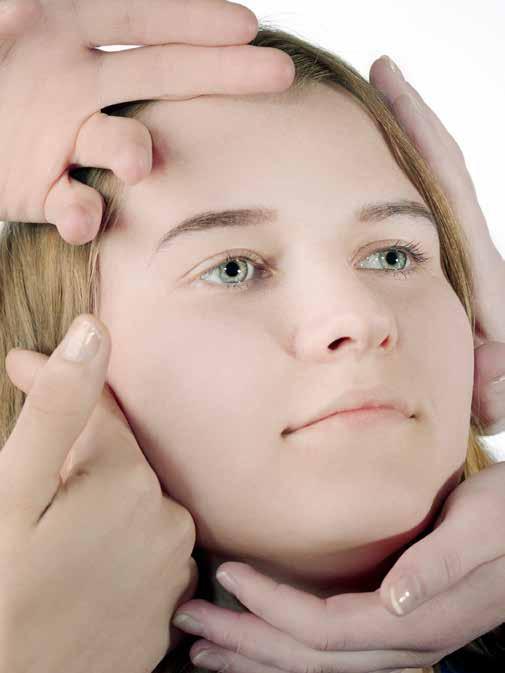



Dóra Kerekes
krks.dori@gmail.com www.dorakerekes.info
Hungary
Internship: Waag Society
Project Growing Decay
Growing Decay is an installation that monitors and depicts the process of entropy, showing how the socalled ‘once in a 10.000-year storm’ develops in the Netherlands. Based on the databases and prediction models of the The Royal Netherlands
Meteorological Institute, the installation visualises the cycles of different climate variables. Upon coincidental combination, they can create a storm of 0.0001% probability, which could possibly cause flooding in the country. The process is a metaphor of how the state of things gets more disordered over time as entropy increases.
Thesis
The Divine, the Human, and the Law of Entropy
The myth of the flood is familiar to most literate Western people, and more. Coming from ancient Mesopotamia, making its way from the Sumerians to the Babylonians then
to the Canaanites and the Israelites, the tale of Noah and his ark has not only spanned generations, it has also spanned civilisations, with only a few changes before ending up in the Bible, which hugely impacted the development of Western Culture. What is the modern cultural significance of such an ancient story? How does the story of Noah still affect us today? Why does the motif of the flood recur so often?
My goal is to examine the evolution of the flood tale, to conclude how it was perceived over time, and how its meaning has changed depending on time and space.
lagingrik@live.nl http://riklaging.nl/ The Netherlands
Internship: Babak Radboy, New York
Project AddOn.Quest_Helper
A series of first hand experiences that re-contextualizes/visits the stigma of video-games. This is done through the telling of three different yet equally relatable case studies that are home to the gaming culture
of today. These stories are translated into video format diorama’s. Diorama’s that will showcase a symbiosis of worlds that for these individuals merges real life and their video-game artificial counterparts. The goal is to provide a relatable insight into a rather unfamiliar way of mental healing that contradicts the common understanding of video-games solely beings a means for unprofound escapism.
Thesis 4K Rituals & The Children of Heaven
Outgrown and evolved. Many young eyes have fixed their gaze
on high definition digital screens, the more contemporary beacons of faith. Portals to the ‘likeness of anything that is in heaven above... ’, worlds beyond our own, not just to look at, but to immerse oneself in. Video games and their ‘magical claiming’ power have created their own forms of contemporary religion accompanied with new rituals and sacred vows. This new idolatry worshiping by younger generations paves a path that helps guide the young and lost in their real, and often complex and chaotic existence.



 Iris Lam
Iris Lam
irislam3@hotmail.com
The Netherlands
Internship: Circus Engelbregt
Project Behoeftebeheer
‘How to discover what your sexual needs are and how to talk about them with other people?’
Iris Lam asked this question to a very diverse group of people: three prostitutes, two asexual girls, students from the Minerva association, an
eighty-six year old lady, a tantracouple and she worked as a telephone prostitute for two days herself.
Lam recorded all these amazing stories and used the audio in her animations.
The contrast between the audio of the serious interviews and the ‘funny’ drawings is a bit alienating. It forces the viewer to think about the content in a different way, in a more light and humorous way.
Bloemkolen en Gemene Buiken
In deze scriptie onderzoek ik de beelden en teksten die vroeger en nu gebruikt worden om kinderen
over seks voor te lichten. Dit doe ik op chronologische volgorde. Hoe zie je de ontwikkelingen op seksueel gebied van 1890 tot 2017 terug in het beeldgebruik van seksueel voorlichtingsmateriaal.
Als er in de media aandacht wordt besteed aan een probleem rondom seksualiteit in de samenleving, ontstaat er behoefte aan voorlichting over dat onderwerp. Ik denk dat de aandacht in de media rondom #Metoo behoefte creëert aan voorlichting over ‘het stellen en aanvoelen van grenzen’.
jungeunri@gmail.com jungeunlee.net
South Korea
Internship: Sandra Kassenaar
Project Objects of Worship
How do we share the commonality through an object? ‘Objects of Worship’ is a collection of semiordinary artifacts that re-encounter between the boundary of familiar and unfamiliar culture or belief. Ranging from world’s largest religion
‘Christianity’ to parody religion
‘Flying Spaghetti Monster’, an object itself doesn’t function the way it was originally intended. By showing a different usage, it becomes not only representation of each belief or culture but it also shows the possible extension of an object that incarnates a specific system of belief.
A step-by-step instruction allows the viewer to find a new relationship between object and culture and open the spare space for understanding other cultures.
Thesis Is it Good for Nothing?
In this paper, numerous pieces of literature were used to explore
the past, present, and future of the book, leading to a question of its value and emotion toward all humankind. Throughout the research, the book is treated as a human-like object. The book, which had a such an eventful life, has been killed or even massacred because of political reasons or obsession of individuals; sometimes the book spends its heyday and is loved by people. Moreover, the book even laughs at people who predicted its future a little earlier. In fact, it is still doubtful whether which one is going to be the final survivor from a duel to the death between a paper book and an e-book. In the strict sense of the word, is this a worthy fight?


zuzannamarialoch@gmail.com www.zuzannaloch.com
Poland
Internship: SILO
Project Being Consumed Is a Tricky
Pleasure
Human is a commodity. One that at the end of the day everyone longs for. When all life needs are met by app-based systems like Uber, Foodora or Tinder, why don’t we have one that will cover all the functions a human has to offer? From
social interaction, sexual activity or intellectual support, ending with fertility and organ donation - a man can satisfy a whole range of needs. The video installation explores the wide areas of hyper objectification. In this sci-fi scenario a person is seen as a collection of assets and body parts, and their value is determined by functionality. In this parallel culture objectification is independent of gender. Hence, instead of being a tool of oppression it becomes an omnipresent way of human perception.
The work starts with the word sex in its title. The three letters provoke
a rush of blood to the brain. From there on, at the table of the imaginary readers we can observe a range of reactions - some positive, others annoyed, unfavourable. The audience allows itself to consider the author as a sexual being. It is fine. The author considers the audience as a group of sexual beings.
A similar phenomenon occurs when the three letter combination appears in a set, surrounded by other letters unintentionally (e.g. Middlesex, sextette etc.). For some reason sex has a larger responsive impact than other words that have also appeared in the foregoing text, like table, or blood.
The intention of this thesis isn’t to say that it’s a bad thing.
andreasvdmast@gmail.com www.andreasvandermast.com
The Netherlands
Internship: 032c WORKSHOP BERLIN
Project 0_0
I am researching the ‘hype’ phenomenon and how this movement reflects nothing but an empty image. With a satirical tone I will discover how to be the next big thing. “My

brand 0_0 is the going to take the world by storm - watch this space....”
With endless amounts of promotion campaigns and tools to visualize the madness that comes with the ‘hype’.
This will quickly show the formula of ‘the hype’ and that the value around the product is nothing but braggadocio. With this formula you can also be the next hype!
Thesis
Donatella Versace Is A Stage Designer 2018
In mijn thesis omschrijf ik hoe subculturen uit de jaren ’90 verdwijnen vanuit het straatbeeld, en er een nieuwe subcultuur ontstaat op het
internet. Met name op Instagram. Ik praat over mode-codes die opgebouwd zijn binnen het systeem, totaal ineen zijn gestort vanwege de opkomst van de sociale media. Als gevolg van het internet, is er een groep ontstaan die leeft in een wereld van eindeloze streetwear drops en collars die de aandacht trekken. Dit is voornamelijk te danken aan de Supreme-kid die zich op het internet bevindt. Wat deze Supreme-kid ziet als nieuwe waarde, en hoe diverse grote modehuizen meedoen en zich ook gaan aansluiten bij deze streetwear movement.


carlijn.moerenhout@gmail.com www.carlijnmoerenhout.nl The Netherlands
Internship: Mainstudio
Project Elderly Primigravida
Statistics show that elderly primigravidae are increasing fast. Due to fertility treatments it is possible to pause or reset the biological clock. It seems like the increasing numbers are the beginning of a new standard. But despite growth in amount, they face resistance from
society. Is this resistance justified?
Elderly primigravidae raise ethical questions regarding social pressure, age limits and artificial reproduction. The project introduces different elderly primigravidae as a reflection on the developments and questions. Throughout the documentary the statistics become tangible. By including factual research, different aspects are highlighted from the debate surrounding artificial reproduction and the rise of elderly primigravida.
Thesis
Hoe word ik een Grafische Superheld?
Wat wil je worden als je groot bent? Een vraag die vaak gesteld
wordt aan een kind. Elk kind wil op een moment in zijn/haar kindertijd een superheld worden. Terwijl ik ouder- en wijzer- werd is die droom vervaagd en werden levensechte beroepen steeds aantrekkelijker. Op dit moment ben ik hard aan het studeren om grafisch ontwerper te worden. Een breed vak met vele mogelijkheden en, langzamerhand, kom ik erachter dat mijn kinderwens om superheld te worden gelijktijdig aan het uitkomen is. Een goede grafisch ontwerper kan een Grafische superheld worden. Een flinke uitspraak die niet iedereen direct snapt. En als ik je vertel dat grafisch ontwerpers kunnen tijdreizen zul je dit niet begrijpen of, nog waarschijnlijker, zul je mij uitlachen.
A voice-user interface (VUI) makes human interaction with computers possible through a voice/speech platform in order to initiate an automated service or process.
A VUI is the interface to any speech application. Controlling a machine by simply talking to it was science fiction only a short time ago.

kay.pisarowitz@gmail.com www.kay.pisarowitz.com
The Netherlands
Internship: 75B Rotterdam
Project George.io
The coming years promise the advent of the voice interface era. This technology is being implemented everywhere such as our cars, fridges and the things we wear. This causes high user-expectations. Every voice assistant comes with misunderstandings since they are
still unable to fully understand our evident invention called language. Especially with spoken language. Introducing: George.io. A voice assistant that helps you with very basic design tasks. In this particular model, you can design your own business card, a very basic design entity that might become obsolete in a few years. George.io emphasizes the flaws in natural language understanding between human and machine and covers issues like privacy and surveillance that come along with that.
Thesis
Cross Modal Design
We live in a visually oriented culture. Especially for the people who pursue
the job of a designer. For those whose practice consists of almost only visual purposes, it is crucial we question the importance of that particular sense organ we use the most. Are our eyes a necessity or just an advantage? Can I still be a designer when I become blind? Graphic design is usually described as visual communication. However we use vision in combination with hearing in order to interact with one another. Seeing is part of a collective unconsciousness we all share. The eye is at the top of our sensory hierarchy. In this text I will explore different techniques and tools to circumvent the way we use our senses. Can limiting our focus on vision make us see better?


taisiia.reshetnik@gmail.com taya-reshetnik.nl
Russia
Internship: Kummer&Herrman
Project
The Undesirables
Privatisation and securitisation of public spaces change their political meaning and turn them into ‘non-places’, where the entrance is not by right, but by permission.
On one hand current solution–supervision and enforcement– is aiming to make the urban environment safe, but on the other, it’s turning it into a space of increasing discrimination, where every individual is treated as a potential criminal.
Based on the research of one particular non-place, this project tells a story of constant resistance between ‘The Station’ and ‘The Undesirables’, which starts in 19th century and continues till this day, when new security measures like wi-fi trackers, security cameras and turnstiles are being used to find the Undesirables among us.


Thesis
Cathedral of A New Era
Societies have always been shaped more by the nature of the media by which men communicate rather then by the content of the communication. Electronic media has a direct physical impact on the way our brain functions. Thus the way we think and perceive information is being changed. I want to point out that the influence of graphic design goes out of the 2D canvas and has a substantial, tangible effect on the architecture of public spaces.
lauraderijk@hotmail.com www.lauraderijk.nl
The Netherlands
Internship: Studio Vrijdag
Project Naturalization
Laura de Rijk wants to raise questions around the normality of exoticism in the Dutch society. This project started from Laura’s fascination for the beauty, the unknown and the richness of form, color and
mechanical properties of exotic plants. With this project she wants to invite the visitor to look at exotics in a new way. The complexities of human migration will be visualised through a plant-story video installation. The topics include established exotics and naturalisation.
Thesis
1+1=3 , De hybride ontwerper Ik beheers 2 disciplines die continu nauw verbonden zijn met elkaar: Fotografie & Grafisch Ontwerp. Deze Hybride Ontwerper is het startpunt van mijn scriptie. De hybride ontwerper wil op de witte lijnen tussen twee vlakken staan. Ook moet deze
ontwerper er vanaf durven te stappen om deze tussenlijn constant te vervormen en de twee disciplines samen te laten voegen tot iets speels. Het kan een Ying-Yang scheiding zijn, een vertroebeling tussen de 2; een limitatie of een outof-the-box benadering. Door de twee polen bij elkaar te brengen geeft het je nieuwe inzichten. Hoe noem je iemand die meerdere disciplines beheerst? In welke stromingen werden zij op een krachtige manier samengebracht? Wie zijn de hybride ontwerpers van nu? En wat is de meerwaarde?


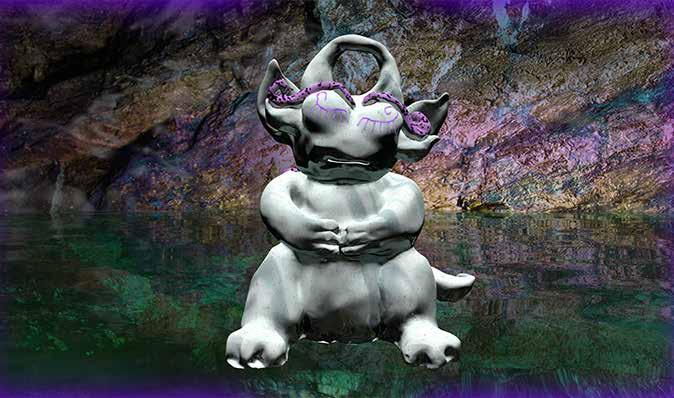
 Rebecca Rui
Rebecca Rui
reru@tuta.io rebeccarui.com
Denmark / Norway
Internship: Slavs and Tatars
Project Manufacturing Habits
How we interact with technology is determined by its design. Consider the design of the smartphone. Its products and services come in form of applications. We interact with the device through predefined motions on its sleek delicious surface. These gestures are performed with ease,
and the applications are easy on the mind to use. What is the intention that guides the design and dissemination of the smartphone? The incentive is simple: tech companies profit off of users attention. The more time spent scrolling and tapping the more ad revenue is accrued. One robot creature, one touchscreen device, and one interface, are used to reveal how manipulation works on the user through interface design, and to question dominant designs of technology.
Thesis
This is a Project, Not a Product This text investigates the relationship between humans and technology in the process of the becoming
of the individual. Consisting of three parts, wherein PART ONE outlines two theories: Gilbert Simondon’s concept of ‘individuation’ and Matthew Crawford’s argument on the necessary conditions for the becoming of the individual. PART TWO gives an analysis of dominant designs of technology, contending that it is applied through a consumer ethic, placing the designer/creator at one end, and the user/consumer at the other. PART THREE outlines designs of technology and methodologies which facilitate the process of the becoming of the individual, aiming at a deeper and more integrated relationship between humans and technology.
josephinevanschendel@gmail.com www.josephinevanschendel.com
The Netherlands
Internship: Anna Solal, Marseille
Project Witches Brew
An investigation into one of the fuzziest magnetizing fringes of our society: witches. We live in a period of pop culture re-enchantment, revival of celestial journey seekers and a regained awareness of our spiritual essence.
Through employing spiritual signs and characters to hyperbolic ends, WITCHES BREW is a first introductory dip into the witchy water. Inspired by five encounters with beautiful spirits who have given their concrete views upon contemporary witchcraft, five fictitious pets have sprung into life. A cyber coven gets brewed, and the taste is bitter-sweet.
#BabaYagaBabyWitch #NeoZen #DigitalMystic #AvatarLab #UrbanHealing
Thesis Gaia’s Triad
An allegory of the New Wild, Primal Being & Fleshy Hardware. Unraveled as a mythological dialogue
between three children of mother Gaia, different outlooks upon the relationship of humans with nature are proposed. The children - the Silk Gardener, the Pigmented Cavewoman and the Crystal Dusted Witch, all seek alternatives within the physical, the mental and the virtuel sphere: from introducing an unfamiliar urban laboratory green, to finding strength in mankind’s primal energy, to foreseeing the biologization of technology to sidestep the toxic uncanniness of machinery’s glabrous appearance. Lastly, the relation of mankind with mother Gaia gets questioned by the Monstrous Mother herself: the big things always win.
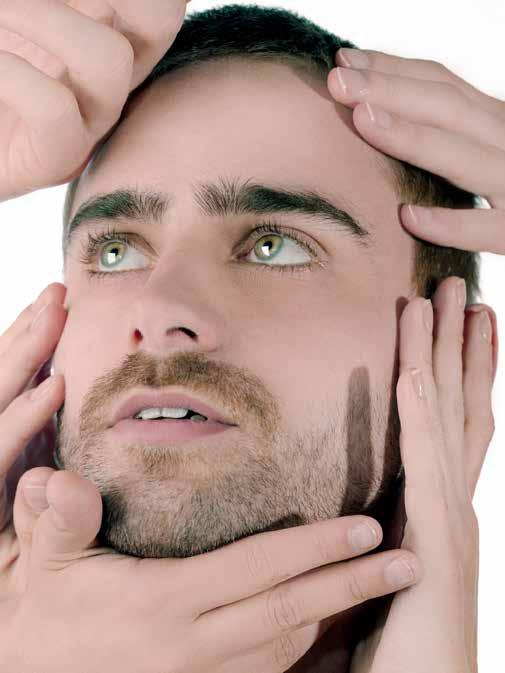


 Joop Schroën
Joop Schroën
mail@joopschroen.nl www.joopschroen.nl
The Netherlands
Internship: RAAAF [Rietveld Architecture Art Affordances]
Project
Survivors of the Nostalgia Loop
The smell of burned flesh and melted plastic is penetrating your
nose at the moment you wake up from what seemed to be a foolish nightmare. But the surroundings tell you something different. While exploring the area you encounter zombie-like creatures who are haunting the streets.
Together with other survivors, you find yourself inside a 90’s apocalypse world. Identical to your dream everything around you, including the zombies, shows a clear sign of 90’s appearance.
Did it really happen? Has the overconsumption and recycling of 90’s pop culture led to a nostalgic feedback loop with fatal consequences?
It sounds like there is a sign of survivors. There are rumours about a shelter, that contains some crucial information.
Thesis
Lets Gaze, Let’s get lost in Space “…Millennials Don’t Exist”
marika.l.seo@gmail.com www.marikaseo.com
Japan
Internship: Lesley Moore
Project
The Ghostwriting Collective
We write now more than ever. Text is a substantial part of constructing our persona and our relationship to the modern world. Yet writing is a mysterious craft — an alchemy of sensibility, emotions, memories casted into the form of letters — that often carries an effect beyond the
writer’s imagination. The strive for control over the effect on a reader, or Unity of Effect as Edgar Allan Poe once called it, has been a lifelong devotion for many writers.
The Ghostwriting Collective, formed by infamous writers, is here to assist you in your everyday textual creations. As complex as writing often becomes, this tool’s functionality is neither replaceable nor reproducible with algorithms; it reflects, it communicates, it transcends.
Thesis
One day I will find the right words, and they will be simple
The purpose of this text is to investigate words — their capabilities, effects, limits — with an underlying
plea for ambiguity in communication. To be the precise medium to communicate our abstract ideas seems to be a specific demand for words, which imagery or any other modes of expression seem to face less. Textual quarrels and nitpicking take place online as if we are in denial of the void between sender and receiver. Can ambiguity and allowing space for interpretation possibly enhance communication? Looking into the mode of communication of Japanese copywriting, where commercialism meets poetry, I attempt to call attention to what can happen when words are embraced as mediation, and allow the affect to hold equal importance to the intention.




valieswarren@gmail.com www.seanvalies.nl
asukhorukova@inbox.ru asyasukhorukova.netlify.com
Russia
Internship: PWR
Project Engineers of the soul
On March 18th, 2018, Russian presidential election took place. Vladimir Putin has become the president for the fourth time, breaking the previous record with 77% of the votes.
His campaign didn’t include much personal involvement or presence, –Russian media has been working on his popularity for years.
‘Engineers of the Soul’ is an investigation into the news reports shown by 4 federal TV-channels within a week before the elections.
By collecting and categorising this footage I am able to paint a picture of how state propaganda occurs on television, hiding behind supposedly objective narratives. Just like social realism painting in the USSR, it creates a scripted version of reality that works in the state’s best interests.
Thesis
Manipulative canvas
This thesis is about the social power of a two-dimensional canvas. We live in the world, ruled by images. A man-made image is a language, that emerges within a specific culture. It always follows a certain structure and intention, and lacks the possibility of being entirely objective or autonomous. A graphic image is the way we put the tangible world in order, as well as give a shape to abstract ideas. I believe, that this language can and should be studied, taught and used thoughtfully.
The Netherlands
Internship: VBAT Project Augmented Colonization
As of the past few years Augmented Reality (AR) has been introduced and accepted in our society. However, it’s not a part of our daily routine yet. When AR becomes a norm, corporations and governments will be fighting for our attention in our own augmented space. This technology adds the
possibility to show us more content, give us more information and influence our choices and behaviour everywhere we are and manipulate the consumers’ attention.
This speculative project takes form as an installation that demonstrates what a simple trip to the supermarket could look like in a world filled with an augmented war for your attention.
Can our augmented space be colonised by corporations and governments though the use of packaging?
Thesis
Handle with care! (The potential future of packaging)
As tea product being sold in a supermarket, the important function of
the packaging is to attract consumers’ attention and trigger their desire to buy the product. The exchange of information between tea and consumer also relies on this layer of information. We know that good packaging not only improve sales, but also enhances the brand image by a visual experience through design. Implementing a digital display enhances all these factors, will give packaging design almost unlimited possibilities and a whole new layer of meaning. But what would be the potential added value of an interactive digital display? And will this evolution even happen in packaging design?

Lin Ven
linven93@gmail.com www.linven.nl
The Netherlands
Internship: Subbacultcha, We Are Public
Project
A Sequence of Actions Revealed
There are a lot of standard ways in which we approach systems, people, objects and situations. Repetitive routines make up a large part of our daily lives. If you think of how many hours you spend on routine activities you do absent-mindedly, why not
spend time creating these routines to be more extraordinary experiences? To break them, so you can start to create them.
My project proposes to find potential in the ordinary and create space for the unexpected. To expand given frames and consciously create structures yourself. By looking at how you approach the basic routines, you can start extending this to other aspects in life and go about them more creatively.
Thesis
Great Concept... Now What?
Nowadays, graphic design education places great emphasis on conceptual and theoretical aspects of design.
However, this rarely results in a real design (strategy) positioned in our reality.
I have the desire to implement my designs in the real world and see if my ideas actually work. Therefore, I researched the ways graphic design is applied in practice. How can design skills be used to generate a positive impact in the real world? To have an impact, designers should put their design ideas out there, in the real world, and see what happens.
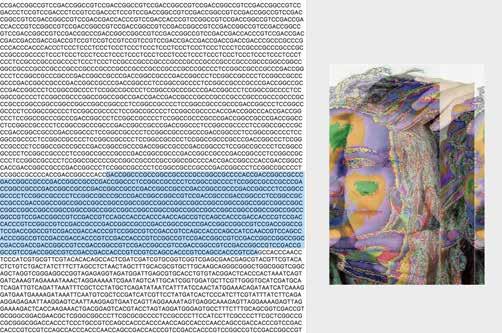

echomaize@gmail.com nataliavish.com
Russia
Internship: W0W, Tokyo
Project
Thought Experiments
Yearning for escape from our imperfect human bodies, we called for Prometheus to bring us the divine fire. We are not supposed to be weak. Our current physical state is a system error. We will liberate ourselves as soon as we find the right tools. Since the first laboratory
manipulations of human genes in the ‘50s, the passion for escaping our limits has not ceased. It still can be seen in contemporary biotechnology and life extension projects. Paradoxically, transhumanistic anticipation of the future evokes similar kind of nostalgic feelings as the optimistic scenarios of earlier visionaries. In
Thought Experiments, placed in the time right before the Singularity, you will be looking back at stories about a future that has never happened.
Thesis
Omega Point
This paper is a collection of stories in the form of a diary, written from the perspective of the Observer. His perception of time is not linear; he
has always lived and forever will. He is one and he is everyone. His aim is to dive into humans’ experiences, feel as they feel, separate into fragments, and come back together. The Observer longs to find a key to the human consciousness and discover the binding element between mind and body. Maneuvering between materialism and spirituality, he seeks to investigate how technology affects this complex harmony within each and every person. Prepare to embark upon an exploration of humanity, but be careful when you reach the last frontier— by reaching the end, you will close the circle.


nana.artgrafika@gmail.com www.wrswstudio.nl
Poland
Internship: Rytm.org
Project Imagined Communities
“Because homeland is one of the magical fantasy words like unicorn and soul and infinity that have now passed into the language.” in White Teeth by Zadie Smith
What means nationalism and what is the complex meaning behind it?
Intrigued by the recent changes in the connotation to the word migrant we may witness how it turned from positive and heroic into negative and threatening.
Countries in which radical parties are gaining more power, are the countries that are sending the most of their own citizens abroad. US, UK, Germany.
The concept of a nation as an imagined phenomenon played a fundamental role. In my view national identity is never pure. I hope by this interaction people might get an overview on our mixed origins and variety which shapes our identity.
Thesis
Transcending Territories
In past times, prior to television and internet, boundaries between countries were more solidly defined. This also applies to the boundaries of style, art and design, which less frequently crossed borders, making each country’s visual language more recognisable than this day. It was easier to identify and locate an artist’s origin based on their work, than this day and age. Throughout time, progressive development of technology altered the concrete nature of boundaries, erasing the solid idea of borders, which now have fused into a blurry shade of interconnectivity.
Designers today are increasingly at the centre of social, economic, and cultural change, providing ‘human-centred’ creative solutions for complex issues. A focus on technology and process alone does not create designers of sufficient calibre to meet these needs. Rather, the new breed of designers of the future must not only master technology, process and traditional design skills, but must additionally bring artistic sensitivity – curiosity, desire, flexibility, intuition, and independence. Such a multifaceted critical thinker adds a new, deeply socially relevant dimension to design practice. This is the new breed of designer, which IMD at the Royal Academy of Art aims to educate, and which, indeed, is well represented and reflected in the 2018 graduating students.
These students are all strong individuals, critical thinkers, with their own broad set of skills, diverse expertise and mode of expression. As such, they explored and ‘pushed’ the boundaries of the domain of Interactive / Media / Design, ranging from applied and focused practical design to imaginative areas of autonomous art. At the core of all their work was a sound basis of research. The high standard and diverse nature of the work bears testimony to their quality as the new design professional.
Janine Huizenga Head of Department
ellen.vdassem@outlook.com
The Netherlands / France
Internship: JipPiet
Project
Conversations with a torso - ACT 3
Touch plays an extensive role in building identity and the ego, determining our relationship with love and the extent of our ability to empathise. It is used to heal the mind and body, to reconnect with the surrounding world through a relation to the self.
Physical contact has an impact

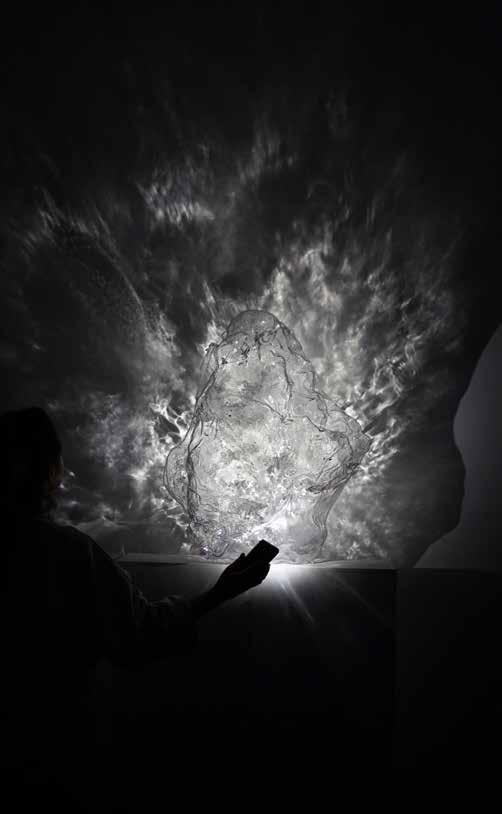
that is either feared or banalised by our Western society, too fixated on science, logic and technology, intellectualising experience. The world is seen as a machine, and therefore every aspect of it is a mechanism that is understandable and controllable. This mechanistic society fulfils its own material needs, resulting in comfort, security and complete autonomy of the individual, spreading physical isolation. So what does the future of touch feel like?
Thesis
To what extent can the mechanism of touch enhance our experience
of the world outside and inside the limits of our skin? What is the role of touching in a rational and mechanistic culture? A return back to human-to-human tactile interaction can offer an opportunity to progress into a wisdom driven human consciousness. In the embrace of the Integral structure, touch could be experienced in new perceptions that value wisdom over rationality. Touch gives us a sense of reality, and forms concepts of what exists outside of us. It permits a connection to the self, generating a connection to the external world, and thus exceeds the individual. In this sense could lie the cure to a deep rooted isolation within the modern mechanistic society.
ivberkovic@gmail.com
Serbia / The Netherlands
Internship: Fiber Festival
Project Rituals for Silence
In order to reduce contemporary oversaturation and induce peace and introspection I am offering a

carefully conducted landscape.
A landscape focused to inspire an insight into the inherent animism of objects and morphogenetic fields they generate.
Thesis
Deep Sonics- Crossmodal Perception of the Hypersonic Effect
The research is suggesting that our ability of perceiving frequencies above our audible range is an anatomised probable signal of a perceptual feeling (intuition).
Namely, that we unconsciously ‘hear’ each other and the objects around us without verbal communication. The thesis is build upon the study of the Hypersonic Affect, followed by topics of silence and noise relation, oversaturation, crossmodal perception, synesthesia, Acoustic Ecology, New Materialism and psi phenomena. Leading to a new model of communication, ‘Deep Sonics’ are a tool for unlocking perceptual potentials.
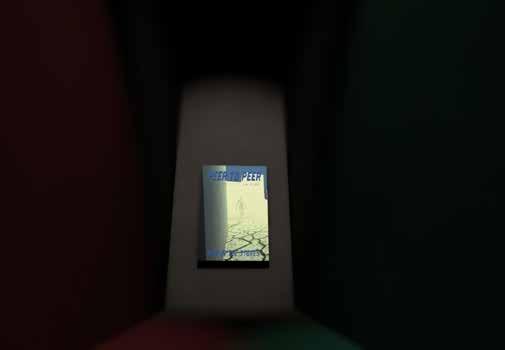

bruijn_e@msn.com
www.alyster.vodka
The Netherlands
Internship:
Studio Robert Henke
School of Machines, Making & Make-Believe
Project Peer to Peer
You were a little curious when you saw the label. “Virtual Reality, I want to try that!” A little nervous you entered the room. As you settled yourself inside of the small space you felt swallowed by its
pitch-black walls. As soon as you installed yourself, you could feel your world melting away and merging with something else – artificial but organic – and before you knew it you arrived in a different universe. Your wandering hand felt the walls next to you, assuring you were really still there, playing. Sliding into your role, an array of questions followed you around: “What are the rules of this game? Am I playing it right? Who else is involved?” The questions linger as you exit the game. On your way home, you wonder: “Am I still playing?”
Thesis
If one Sheep Leaps over the Ditch
Stories can help people to deal better with reality and train our


social intelligence. If you know what is going to happen next, you can predict your chances and learn lessons of survival. Sharing stories with each other will unify thoughts about a certain topic, conforming common thought, so that we can do what we are programmed to do by default: survive. Our stories can influence us in such a way we can agree with something we would not in the first place, just because it is put in a certain way. Our own tools are being used for and against us, and we mostly all go with it in an organic, healthy way. But what happens when one party gets more power than the other? And is our society still fit for us living in unison?
farid.guzman91@hotmail.com www.faridguzman.com
Colombia
Internship: ReFunc
Project Dodecatonic
This installation explores the concept of making spaces make sense, when we put a learning subject at the core of it. Spaces and their design can be useful tools to let people explore different subjects through different perspectives.
This allows us to design the space in correlation to the subject matter, making the space somewhat interactive.
This installation explores the connection between space and music, taking into consideration the aesthetics and attractiveness/ aversiveness of spaces and music, and attracting people into learning something new. The space itself sets a stage for the audience and they therefore will feel a sense of challenge and curiosity, by continuously experimenting with the installation.
Thesis
Space Schooling
Can we use spaces as a method for learning? This thesis explores
what the uses are of aesthetics and design within spaces, and how to use these factors to make learning easier.
Learning has a wide set of applications, but we can narrow the set down by giving spaces a subject matter given by the artist, so people can experience learning through the eyes of the artist.
An aesthetic experience can spark a chain of interpretation in an individual, and teaches us how the use of design and aesthetics in spaces can enhance our perception of it through interaction and experimentation.


jrs.hammer@gmail.com johannahammer.com
Austria
Internship: Ulli Gladik Filmproduktion
Project Matter of Interpretation
It is known that. Reportedly. The source said. How do I know that news content is based on facts and not on
ideologies? Matter of Interpretation
is a multimedia installation to improve media literacy. It is an archive of vague content verifications used in news media as a strongly biased point of departure towards devaluation and new revaluation of exposed content. This archive is being exhibited through media in which the news is distributed, meaning broadcast, print as well as an online tool for direct news consumption. matterofinterpretation.info


Thesis
24 Opinions per Second
The BA thesis ‘24 Opinions per Second’ elaborates on the recent trend of populist politics in the age of post truth and over saturation, exploiting and creating especially the present day scapegoat phenomenon about refugees. It is being investigated on how opinions are being manipulated through the media, especially news makers and how contrastingly, a truthful and objective image can be suggested using documentary filmmaking as an artistic medium for objectivity.
pimkerssemakers@gmail.com
The Netherlands
Internship: Studio Kartel
Project The Ludens Show
The large colourful machines of the Ludens Show represent the ridicu-
lous inessential activities of modern Western human life. By showing the elements in a lubricous way, the work embraces human’s function of play, rather than a utilitarian function.
Thesis
Human Versus Machine: A Search for Value beyond Quality and Quantity
Due to the ever-increasing capabilities of technology, one could assume
that technology will take over more and more human duties. However, there are multiple examples found in entertainment, games, crafts, sports and competitions where technology seems incapable of doing so. By analysing specific examples, the research tries to underline the future of the function of humans, when the human can’t compete anymore with the capabilities of technology.



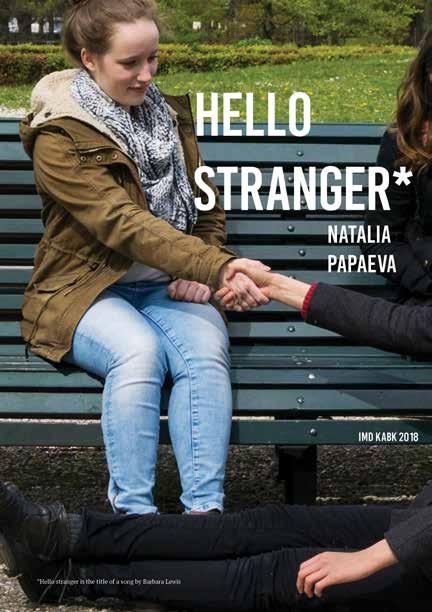
asamikiuchi@gmail.com
asamikiuchi.com
Japan
Project AWASEed
(A: I don’t like you. B: Me too.)
‘AWASEed (A: I don’t like you. B: Me too.)’, is a mixed-media installation that challenges the status of ‘self’.
The installation depicts multiple layers of AWASed, which is a strategy that I developed for coexistence without mutual understanding. The strategy evolved through work-
shops where participants use body movement and linguistics to explore contradictions at both personal and social levels. Here, resolution is not the goal. Contradiction is seen as potential, not a problem, and perspective is broadened. The installation expands upon the workshops, utilizing the AWASed strategy to unpack our sensibilities towards space and expose contradictions between the inside and outside of ‘self’.
Void Virtualized
The relationship between ‘self’ and ‘other’ differs throughout cultures. In Western society, the idea of self is
independent, concrete and actual. On the other hand, in the Eastern hemisphere, the idea of self is a fluid and dynamic relationship. In my thesis, Void Virtualized, I discuss the concept of self by focusing on the contradictory relationship between the body and space. I also introduce my creative activities with a philosophical inquiry to test a new framework for understanding the ‘self’ through real experiences.
aryatsagan@gmail.com http://cargocollective.com/ natashapapaeva
Russia
Internship: Videomatic, WORM
Project Yokhor
I forgot my mother tongue. And I am not the only one. Many people in my native Buryatia (Siberia) are losing their language. The Buryat language
is one of nearly 2600 languages likely to disappear. Of all 6000 languages in the world, 43% are endangered and I am going through this process myself. In my performance, I will be singing two sentences from a Buryat traditional song. The only two sentences I remember.
Thesis
Hello stranger
For my thesis, I investigated the figure of a stranger from different angles: political, philosophical and cultural. In the first chapter of my thesis, I conducted a research on fear of strangers from a child safety
education point of view to political campaigns where a foreign stranger becomes the main enemy. In the same chapter I also investigate into the concept of hospitality, in order to oppose hospitality with the fear of strangers.
In the second chapter I researched the concept of ‘the other’. I analysed who is considered to be ‘the other’ and why. By the end of my research, I discovered that I became a stranger to my very own culture, while also being a stranger in a different country: The Netherlands.

jiajiaqi777@gmail.com
https://www.behance.net/moyaqi China
Internship:
Sandwich Creative Platform for Contemporary Art, Kyoto, Japan
Project The Baron in the Trees
Every person exists by continuously turning the unfamiliar into the familiar. That is by unconsciously bringing one’s surrounding into a socio-historical context, or matrix of the familiar. Yet, as long as people do not break their habits, not force themselves

onto their stomachs they will remain trapped in the ordinary. This work is not about creating new things, rather, attempting to make the ‘bridge’, in hopes to help people to look from a different point of view. The vantage point that is always there, but easily ignored. I am creating a labyrinth space, turning the familiar into the unfamiliar in order to break the balance of the perception of one’s body and self.
Shifting perspectives from “Where am I?” to “What is going on?”
Thesis
Shaped by the Labyrinth
People start learning when they begin to act ‘ridiculous’ and break their habits. We do not understand things


by ourselves, but rather from the perspectives of how we were taught to understand or use certain things. This thesis discusses the particular dynamics of the architectural space, the Labyrinth. In the Labyrinth, the focus falls on exploring the potential of the body and bringing it back to its natural way of experiencing the space. A place which takes a stand against one’s own automaticity, where distance and experiences do not match anymore. Throughout the exploration of the space, people may continuously ask themselves “What is going on?” instead of “Where am I?”
samira@audiokult.at www.samirasaidi.com
Austria / Ghana
Project
‘Who Has Told Her That We Belong To Her?’
‘Who Has Told Her That We Belong To Her?‘ is a performance installation that discusses notions of the body as the archive and the archive in the body. Through the recollection of family stories the work attempts to unfold the archive that has man-
ifested within the body. Language and migration as the uncommon denominator, yet the foundation of family it revolves around the search for belonging and identity.
‘Who Has Told Her That We Belong To Her?‘ explores the reconnection of histories within the body through the act of listening.
Thesis Inviting Silence - Gaps In The Contemporary Western Archives
The foundation of the archive was rooted in hopes of preserving history, yet with the progression of time, it was corrupted through the
perversion of memory and history. This thesis is composed of a collection of essays discussing the issues that arise through the imposed Western concept of the archive and explores how this leads to the (mis) representation of systematically marginalised people. The arguments are made through an account of archival spaces in the context of Ghana - extended onto the Global South. While breaking down dimensions of power and oppression, the objective of this exploration is to shift the perspectives of the archive and propose ideas within the magnitudes of the arts.

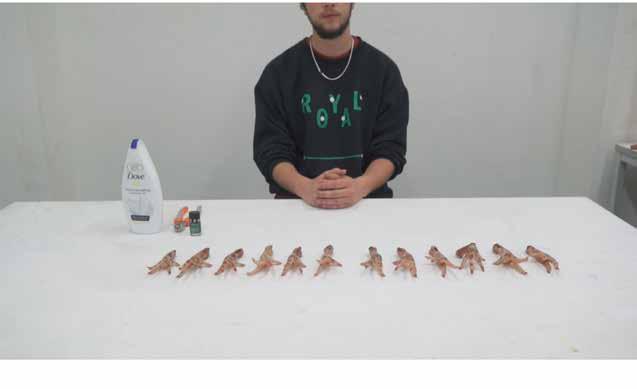

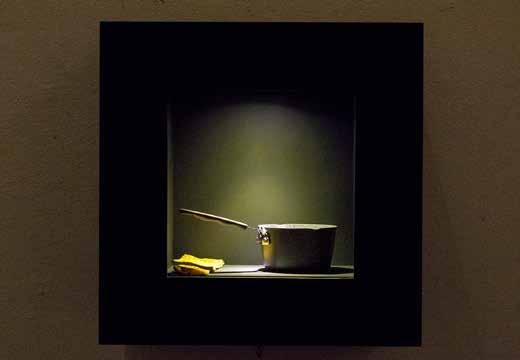
tamara.stanislaw@gmx.at tamislaw.com
Austria
Ari Levi Snow ari.snow94@gmail.com USA
Internship: Nafasi Art Space
Project Every Dead Bird Deserves to Feel Pretty
‘Every Dead Bird Deserves to Feel Pretty’ explores the interdepend-
ency of violence, vulnerability and power. In the concept of liminality the work exists in between fiction & documentary, discomfort & vulnerability, installation & performance. Through the performance the audience themselves become a part of the work, therefore the work exists in moments. Each moment undefined, explores the expressions of vulnerability through resistance, and resistance through vulnerability.
Thesis
Tracing Violence
‘Tracing Violence’ questions the role and affect of the artist; economically, geographically, & epistemically. How does the art institution perpetuate oppressive ideals and economics such as white supremacy? The question of responsibility of the artist and their respected institutions is posed to challenge the attitude in how we collectively respond to violence.
Internship: Stichting Nest Foundation & Museum Kranenburgh
Project Choose One And Be Both Most of us are born and raised with a strong national identity. Yet, especially the Millennial generation strives to be global citizens and contribute to a bigger community. Though, here also lies the struggle many are facing at the moment:
How can we combine these two superior identities — The National and the Global? Choose One And Be Both pulles the national and the global into extremes, which evolve as ‘Alter Egos’, as fictional characters. Resulting in a sound installation, National and Global are attending couples therapy hoping to find unity and harmony. Though, as in each human relationship this can be a tiring and confusing journey. They are facing a dilemma or better said a crisis: an identity crisis.
Thesis
Dear History: On Identity, Art & Possible Futures
‘Dear History’ depicts the question of “How do history and art shape
European national identities and thereby our progression towards inclusiveness?“. This thesis investigates the impact of art on the definition of national culture and identity, claiming that redefining national identity is the most progressive step of coming to terms with your past. This paper is an attempt to encourage a critical view on the past and highlights simultaneously how such a change of perspective can break up profound, Western national identities.


lisa.tellekamp@hotmail.nl
The Netherlands
Project Makeco play Makeco Play is an ecological toy kit made from biodegradable plastic moulds. Each mould can be filled with bioplastic in order to make your own toys. Through exploration and creative play children can learn about sustainable material, as
each toy shows the life cycle of the material.
In addition to the toy kit, the moulds can be found on an open source platform where they can be downloaded and 3D printed at home. People can share and contribute self made moulds in a quest to share the toys and knowledge!
Lets play for the sake of our planet!
Thesis
Intruders of a strange world
A big difference between what nature has given us and what the
digital age provides us with, is the manner in which it passes. Nature gives birth and when this life comes to its end, it unites back with the earth. When technology breaks and is being replaced it will still need energy and space. The precious space that nature has given us will now be filled with yards of junk and smelly piles of unwanted stuff.
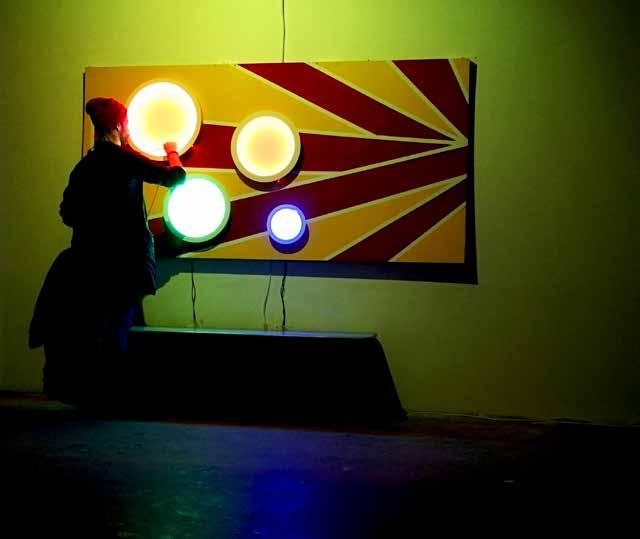

chiaraveenstra@gmail.com www.chiaraveenstra.nl
The Netherlands
Project HUE HUE translates. HUE controls. HUE moves you around. HUE is the junction between an installation
and a wearable that lets you perceive color through rhythmic vibrations. HUE explores the boundaries between the biological senses and the way technology influences our perception.
Thesis
Please don’t mass produce me ‘Please don’t mass produce me’ discusses the merging of the human body with technology. When
technology becomes part of our physique will it be able to match our personal needs, desires and individual perception? And even more, what role will the developer play? The thesis touches on the topics of individuality, control and open source development.




Katharina Voit
http://cargocollective.com/ katharinavoit
Austria Project Symptoms
The 5-channel video installation is reacting to the slippery definition of the ‘self’ within the almost obsessive control over (digital) attention. A symptom of the dominance of tech-
nology but also a tool of survival. It encircles themes of instability in subjectivity, isolation and connection. The story is about the lost control through distribution of time. Converting this loss into a performance that culminates with the relation of constant exchange and reversibility of sender and receiver.
Thesis
Suicide as Medium
This research hypothesises that as human progress is attained – not
only in the technological sense –the self-induced death population will simultaneously grow and nourish from it. Furthermore, it locates the problematic categorisation of suicide as well as the question of who it belongs to, the masses or the person? Mapping social relations on platforms that shape collective identities and generate attention towards the increasing self-determination.
vysniauskaite95@gmail.com www.mildamakes.com
Lithuania
Internship: Surfana Productions B.V.
Project Mimosa Pudica
This body of work explores the subject of power dynamics and balance of them between artwork and its audience. Can the audience feel empathic towards the art piece? Can we show compassion towards
it? It depicts an idea of a piece of art/design work having a character, opinion, temper and exposing it to its audience in order to protect and preserve itself by using such media as light, sound and inflatables.
Self-preservation and willingness to be explored are combined within this installation. The intention is to let the audience explore the space and the installation by keeping balance with it (or pushing the boundaries).
Thesis
Enjoy beauty responsibly Can the audience like the creation without worshiping the creator?
Creating beauty also has its privileges and responsibilities. The audience has a responsibility to judge beauty, creation, and arts according to their (social) morals. Staying moral and not abusing the power of having or being given beauty is a great challenge. It is a great responsibility to use this power for the audience and self-satisfaction without exploiting it and without disbalancing the power dynamics between creator, creation and the audience.


atocgraphy@gmail.com www.sandrazegarrapatow.com
The Netherlands
Internship: Paperboats.me & Jasper Abels
Project Senses of reality
This installation is an experiment which lets you play with the relationship between reality and virtual reality.
I invite you into the frame of the artwork where you can enter my personal space. You become from the observer and an participant by
interacting with several symbolic references.
Through this experience, you become part of the work, by remembering it, you take it outside of itself.
Thesis
ATMA
The meaning of ATMA: noun, Hinduism.
1.the principle of life.
2. the individual self, known after enlightenment to be identical with Brahman.
3.(initial capital letter) the World Soul, from which all individual souls derive, and to which they return as the supreme goal of existence. Important aspect and dimension if I am talking about symbols: I am a spiritual being having a
human experience. We are all experiencing the condition. Our challenge in this condition or experience as a human being is to do something meaningful with our lives. Obviously in a way and yet so hard to reach an agreeable consensus of the concept of meaningful which is shared, experienced or understood by others. Others are needed to share and to connect because meaning is meaningless when kept to self, the search to meaning starts with connecting even in solitary we try to connect to something higher to reach and search for (self-transcendence. Maybe the meaning is searching for a meaning and sharing. Making art.
We are the new Generation. We do not function as a collective, speaking with one voice. No, we are aware of being part of multiple voices, different perspectives and opinions. We respect the other and otherness. This is our basic attitude; it is what drives our curiosity and what will make us find our ways.
So, watch out! We will infiltrate.
We work with what is given: a material, a system, a gesture, a memory, a place. From there we start a new narrative, reframe the context, introduce a new perspective and activate overlooked qualities. Our objective is not necessarily utopian. One might even say that we are kind of old-fashioned in our quests since we do not believe in ‘newness’ for the sake of the new. We build upon our diverse cultural heritage. We are practical and sometimes naïve.
We react on what is missing.
We have learned to find the potentialities. We observe. Interior Architecture and Furniture Design are not bound to strict rules. Nor is the outcome certain. It just defines the scale on which we operate. We all use different tools to create and communicate. Some of us are more process-oriented, focusing on organic or repetitive methods. Others bring in the senses, like smell or sound, to enrich an experience. Some of us play with form, scale and color to generate new ornamental elements, or use surprise as a tool to design.
We design new narratives.
You shouldn’t always take our work literally. There is a blurred line between what you see and what it is representing. Could it be that the chair is a reflection of humankind’s genetic and cultural revolutions? Does a frozen gesture entice observers to make up their own story?
Is the focus on a group experience not actually a moment of personal reflection? Could this human processed material be seen as nature? And do you realize the moment that you forgot where you are, you are actually in the moment?
We can be critical.
We like to contribute to society in a positive way. Our work sometimes raises questions beyond its material or spatial appearances. It could be understood as objects or situations for discussion about future developments. We rethink the way social housing is developing; how the overload of images we receive every day has an effect on how we see things; and we take interest in forgotten rituals or construction methods to show what we have lost. The built environment opposed to the natural environment is also an important theme. Could redefining the boundaries between them help us to understand the future? We do not believe in one solution, there are many and we provide just a part of them.
We craft experiences.
Starting out from our own personal curiosities, our own wonderings - sometimes sparked by an eagerness to learn, sometimes by a romantic notion of life - brings about many surprises. In fact we define our own truth, we design our own ‘Wow’-factor and this is what we like to share. We always create for somebody: the observer, the collective, the general public or an individual. In the end the experience, the moment of connectivity between what we have created and how it is perceived, is what matters.
Long Live The New Flesh in collaboration with Joanna van der Zanden (interview) & Ernie Mellegers (graduation year team leader of the Department)


rachelborovska@yahoo.com www.linkedin.com/in/ rachel-borovska-45a313157/ Slovakia
Internship: Superuse Studios
Project A Tale of the Emerging Landscape
A three dimensional study/story about an evolution of the environment. A walk through three phases of configuration and reconfiguration: ‘The Land’, ‘The Cave and Tent’ and ‘The Hut’.
‘The Land’ is the beginning, the source. One gets to explore the
irregularity of a newborn terra, where the differences between manmade and natural elements remain unanswered and blurred.
‘The Cave and Tent’ tackle information harvesting throughout the patchwork of various contexts and express the effect on the land.
‘The Hut’ finalises and encapsulates the complexity of the modified land. Typology grows from the characteristics of the terra. Here is where settlements appear and the irregularity of the Land meets the strict, straight lines of Man.
Thesis
First Encounters: Landscapes and Morality
What is natural and what is artificial? The conceptions of nature have

been steadily changing over time, and it is important to understand that the human world and the natural world are both continuous and complementary. Since man first encountered his environment with a conscious mind, he began classifying, organising and using the natural world to fulfil his needs. This notion has not yet managed to fully disengage us from the attitudes that see nature as separate to human life. In this paper the natural landscape and the city are illustrated. By flowing through these two contexts, the separation between the artificial and the natural is quelled. Here, nature is defined as an all-pervasive system, with man as its element and morality as his drive.
yamilebueters@hotmail.com
The Netherlands
Internship: Studio Manon van Hoeckel
Project Cross-Breeding Program
I choose to look at the chair as if it is a species coexisting in the habitat of humankind. Looking at it in this way poses the question whether it has a DNA like we have. Is it affected by its surroundings and external forces?
Taking a chair out of its natural surroundings and placing it in another, seems to cause differences in the further evolution process of the chair. The inspiration derived from new paths of development result into next generations with small mutations or entirely new breeds within the chair species. Each path of development consists of multiple cross-roads leading to unlimited variations.
Thesis
The Cultural DNA of a Chair
The chair is not an object in isolation, but rather conforms to its context. Types of construction and
perception of beauty have appeared to be fluid and determined by developing technological inventions, references in architecture, nature and developments of other furniture pieces. Is the presence of the chair influenced by changing cultural perceptions about moments of gathering and the arrangement of space? Could it be the case, the chair is a physical reflection of humankind’s genetic and cultural evolution?


kornelija.chaleckyte@gmail.com
Lithuania
Project Irregular Wall
Through the advancement in the production technology of building materials, all the elements have become standardised and perfect. When building walls, the human behind the building process becomes almost invisible.
’Irregular Wall’ is a project that analyses the boundary between technolo-
gy and craft. It investigates the most regular and unchanging building element - a brick. By interfering in the production process, when brick reaches its standard shape but is still wet and flexible, I start the building process of my wall. By having a dialogue between the material and me, I turn the regular blocks into irregular fitting elements. By doing so, I bring the lost human touch back to the wall’s building structure.
Thesis
The essay focuses on different material walls and the messages they carry, and marks the cognitive shift
of the term ‘wall’ in the past century. With the use of glass, the Modernist architects altered the term of ‘wall’ to a still physical but invisible boundary. Today, with the advancement in security cameras, we have reached the same transparency and visual control with bricks as the Modernists have done with glass. We can observe the outside by sitting in a space with no windows through our screens and security cameras. They are capable of enclosing spaces with immaterial and invisible walls.
rf.dashti@gmail.com
Iran
Internship: Studio Knol
Project
I have a dream free from gravity “It is equally fatal for the mind to have a system and to have none. It will simply have to decide to combine the two” - Friedrich Schlegel There are two elements in defining the static of my work; the grid and the freeform. Through their relation to each other, space in-between,
time, movement and the positioning of the inspector’s eye, the two languages collide and confront one another. The defining space is a choreographed space and an homage to the poetry of architecture. The objects are neither a reference to a building nor to an object as they are a collection of scaleless abstracts.
Thesis
Simulated Ignorance
In the ‘post-truth’ era there is a need for an element of objectivity and truism.
This has been my motivation behind addressing a secret lingo that voices the oscillation between subjective
and objective. A secret lingo that is essential in retinal art and design communication. I define the secret lingo as a form of ‘Irony’. In the research into the work of artists and designers, I have reinforced the idea that Irony is most effective when manifesting itself in architecture.
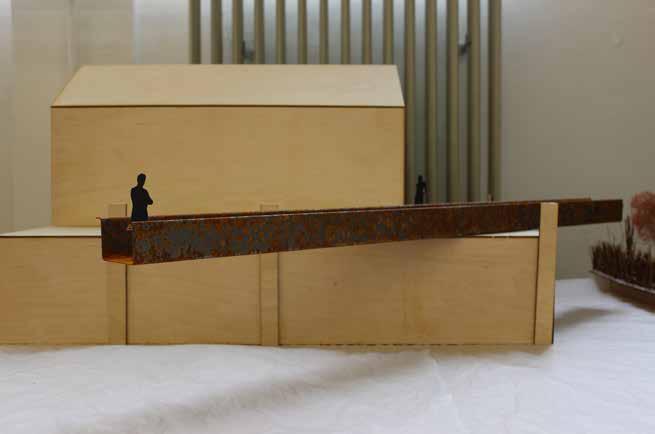
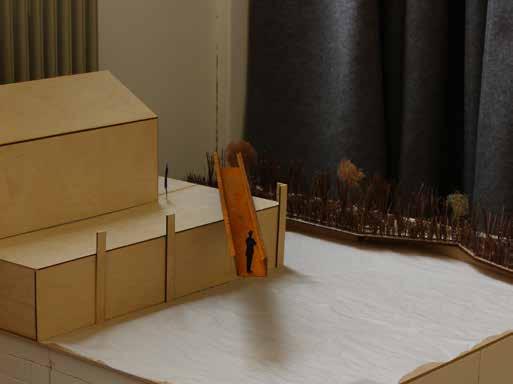
juliettegroenendaal@live.nl www.juliettegroenendaal. wordpress.com
The Netherlands
Internship: STIPO Team for urban development, Juan Nibbelink, Herso circular furniture makers
Project
Bridge to No w here
‘Bridge to Nowhere’ is showing the beauty of voids and makes the visitor aware of these unique places within the city. Ten bridges are
forming a family in the landscape along the borders of the Nieuwe Maas in Rotterdam. The bridges are located in ten ‘voids’: places that are not yet totally filled in and regulated. Places still open for interpretation. The bridges are placed in such a way that they focus on their surroundings. They don’t go anywhere but they invite the visitor to walk down to the end and experience the environment from a point of view that normally can’t be reached.
Thesis
The Inclusive City. Preserving the uniqueness of places in our cities.
“Everywhere in a city there are hidden possibilities. An empty plot
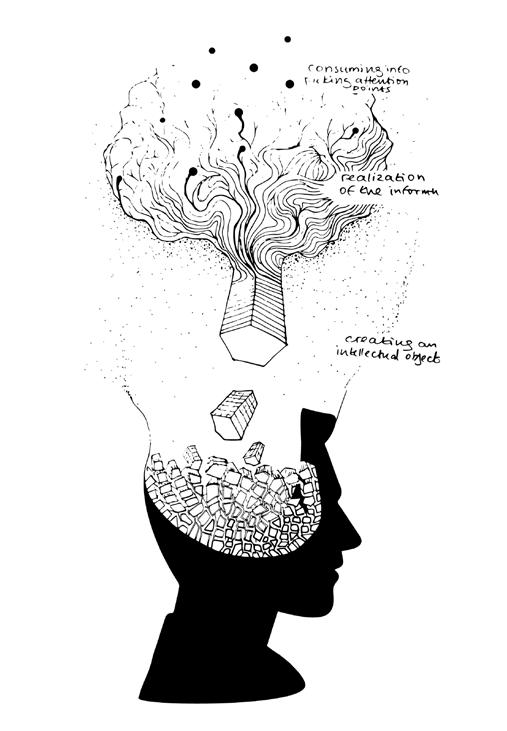

could become a small city park and an ordinary street close to the city centre can become a lively promenade for pedestrians. Those possibilities of spaces pop up at every corner, as long as we are looking closely at our environment and focus our attention on the potentials of those spaces. Constantly asking ourselves to imagine how our cities could look.” The paper evolved out of a fascination for places that already have an unique and special character as well as by places that have unused potential.
madamtapka@gmail.com izotovanastasia.com
Russia
Internship: Hollandse Nieuwe studio, Amsterdam
Project Monument to the Intellect “The real voyage of discovery consists not in seeking new landscapes, but in having new eyes” –Marcel Proust
Where is a path that leads to ‘new eyes’? I suggest that the Thinking path will bring you to the knowledge
and the knowledge will bring to you a new vision. In the culture of ubiquitous media when we only passively watch…when will we take the Thinking path to gain a knowledge? I consider thinking as a way to shape a three-dimensional vision on the world.
Monument for the Intellect is a translation of a thinking process into a spatial experience. The effort that people take in order to climb to the top floor is a metaphor for the effort we take to think.
Thesis
Trip-tych
Today we live in the epoch of digital Renaissance where every day we get overloaded with ubiquitous
visual information. Due our inquisitive nature we get addictive to consume more eye-candies, we get ‘’hungry’’ for new images. I consider watching as a passive way to travel, a way to reach stars without leaving the couch.
The outcome of my research is that visual life experience builds a different personal invisible inner world. By staring at the screen we build up a flat past, a two-dimensional state of mind. If you build an active life experience, you create a threedimensional volume of the past.


christianvdklooster@hotmail.com www.linkedin.com/in/christian-vander-klooster/ The Netherlands
Internship: Schoots Architecten
Project Recreating Circulation
Already from my childhood, nature and systems intrigue me, causing my interest to grow towards sustainable systems.
It’s yet not the highest priority to integrate sustainable systems. Therefore I want to show that a sustainable system can be used as design tool. As case study I use the algae tube farm. Algae tube farms don’t only use co2 to create clean energy, but reuse own waste as well.
To give public exposure to this tool, I am going to design a form of parasitical architecture attached to NH hotel in Utrecht, with the purpose to add value to the NH hotel itself, its surroundings and at the same time to promote the algae farm as design tool.
Thesis symbolic influences
In my thesis I researched how iconic buildings combined with green technology communicate, how public support can be optimized and how it becomes a statement for a new way of thinking, creating new opportunities, and redefine the notion of representation. Therefore, these new design tools can be deployed with as much exposure and support as possible.
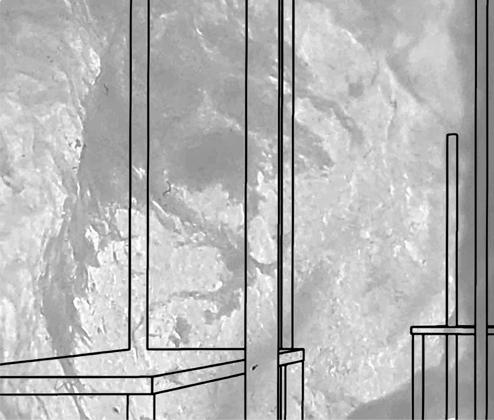

Designkoowookoo@gmail.com
South Korea
Internship: Studio Barend Koolhas
Project The City Caravan
Strict urban planning and the desire for all space to be regulated, has led to the rapid decrease in street culture. In order for a city to maintain a healthy informal public life, a fluid and openly accessible platform,
a third space, needs to exist. This is an aspect of the city that I have greatly missed in the past couple of years, along with the freedom to participate in this experience anytime I want. In order to improve the degrading informal public space, there needs to be more use of interventions that allow for a growth in street life.
Thesis
Point Zero: The Third Place
In every person’s daily life, there exists a brief moment of hesitation that is created when they are wandering the streets of the city. Within
this hesitation there exists an innate desire to belong into some kind of… some sort of… difficult-to-pinpoint... place. My interests lie within this vague context; the development of architectural design and the potential impact that it can bring.
Through the consequences of modern day industrialization and urban development, many of these places have slowly disappeared and the importance of their value forgotten. Replaced with hubs of capitalism and walls of hierarchy within our society.
 Dann Kuiper
Dann Kuiper
info@studiodnnk.com
www.studiodnnk.com
The Netherlands
You might be seduced by the appearance of Between Curtains, but do not let that happen. The aesthetic experiment is about the creation of a veil around the individual in today’s society. A veil that is created and constructed by the individual itself.
The closed-off facades captured
during photographic research in Mariahoeve are a physical example of this phenomenon. Where the representation of the Self on social media could be seen as a metaphorical example, do these filtered images represent real life or fictional life? Between Curtains, is the translation of this observation. Where in today’s society we rather are seduced by the aesthetics than to confront and dive deeper.
Thesis
The Individual & The Group
The thesis is an exploration of Dutch social housing and Dutch detached housing and what we can learn from
both through the ages. By taking social housing as a metaphor for the group, and detached housing as a metaphor for the individual, I tried to find an answer on what is more important: the individual or the group. My visits to each social housing project found in this thesis, served as a starting point of the graduation project. What surprised me, is that where there is a certain idea of creating a community, most individual houses seem more turned towards the inside than having an open connection towards the community, mainly created by curtains and blinds.


Eunice_TW_Ma@outlook.com https://eunicema.wordpress.com/ Great Britain
Internship: 100 architects
Project Everywhere Nowhere Here Being the stage hosting the acts of daily life, public space has always been shaped by its citizens, with markets, discussions, performances or even idling. Nowadays, planners who still follow the modernistic ideal try to regulate public life by getting
rid of it altogether. As citizens have gradually lost their rights to use the public domain, this has led to the rise of digital alternatives.
My project explores the possibility how these disparate layers of modern cities can reunite. Together with an online community, users can “program” and manage their own public spaces to suit different purposes: shops, gatherings, food vendors etc. Nothing is permanent here and everyone has the liberty to claim and dwell.
Thesis
Fractured City Spontaneity is a collaborative dance, free spirit within order,
the Macguffin of side street life. The level of spontaneity contributes greatly to a healthy city. In the quest to unveil the causes of either lifeless or over-congested public spaces, my thesis has explored the catalytic role of public spaces in propagating civilisations in the past, which in contrast has become marginalised in the present. This may sound like a dim future for public space, but as a consequence of this marginalisation it leads to the flourishing of virtual networks as alternatives. Therefore, it is worth exploring how designers can exploit the omnipresent digital network as a tool to reconnect people in physical public space.
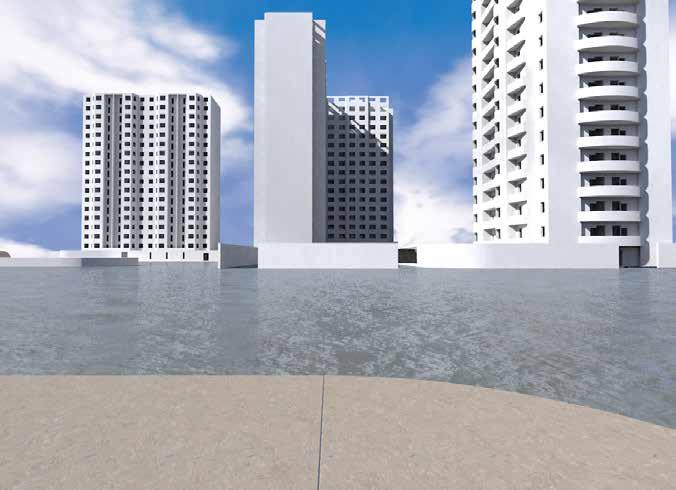

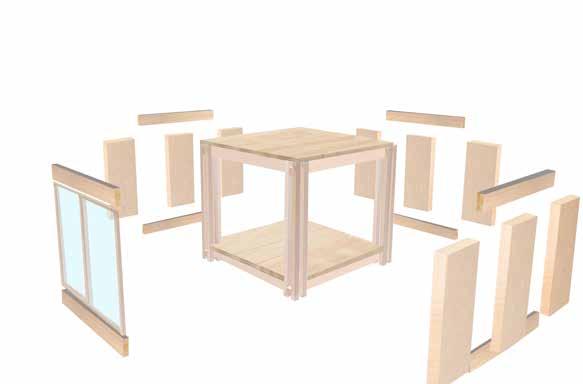

charlotte.meijerink@gmail.com
The Netherlands
Internship: Studio Floris van der kleij
setyan4@mail.ru
Russia
Internship: June14 Meyer-Grohbrügge & Chermayeff
Project TRG district
An attempt to make an immersive and coherent experience from fragmented architectures of postsoviet housing typology
Thesis
End Game
A search for an optimal way of an aesthetic appreciation and understanding, so it can be developed into a design method.
Project
The ever-changing home
Celebrating diversity and change Modular systems have been around for a while, creating a more flexible and adaptable alternative to conventional housing. The downside is that many of these systems feel temporary and miss a sense of personality/ home/ warmth/ character.
With my modular system I attempt to combine the comfort and personal sense of a conventional home with the flexibility and possibilities of a modular house, using a Japaneseinspired wooden construction. The wooden construction is part of the aesthetics of the house and is easily adaptable, so you can increase, extend and change your home over and over again. The parts are interchangeable, stimulating people to engage in collective building and re-using materials.
Thesis
When wood meets architecture Architecture is one of the few art forms that engages directly with all
of our senses. It is not only about constructions and lay-outs, it is a form of expression as well. The beauty of wooden constructions is in the details, the joinery and the finish. Because wood is so widespread, many different cultures developed their own way of using this material.
I want to see the differences between techniques, aesthetics, the symbolic and historical meaning. By looking into Dutch and Japanese constructions I expect to find out what influence a population has on the use of wood, not only as a building material, but as a form to express a culture.


petra.popangelova@hotmail.com
Bulgaria
Internship: Studio Judith Seng
Project Plane of translucency
The reciprocal contact between us and objects or environments occurs on the surface. In interior design, surfaces are not only decorative elements but can be perceived as independent entities. In Plane of Translucency, I explore
this mediation and create a material intervention that uses surface design as a method to generate space. Transparency asserts a transitional effect and becomes an integral part of the wall.
Shaped within the existing architecture, it allows multiple understandings of what a space can be.
Thesis
The abstract communication of a message
How do we visualise the immaterial?
Ever since primitive times, man has found his way to record time and send messages to future generations. Within time, cave drawings


partly disappeared. They didn’t remain in the past but left a suggestion that they are not only evidences but a type of visual language.These evidences evolved into a concept in contemporary art. By choosing three different mediums: painting, photography and performance art I researched ways of perceiving imprinting and tracing as a technique to define this language. Further on, different systems and immaterial tools are examined to determine the form of the work. The final chapter gives a global example of how this method could be applied outside the parameters of visual arts.
Sarah Anne Rootertsarahrootert@hotmail.com www.saraaahannne.com
The Netherlands
Internship: Burgers Architecture Inc. Vancouver
Project Amboina
My quest through different cultures is a topic that has always interested me and with which I personalise my works. I am in a continuous search
for interaction between people and material refinement. Materialisation can be a visual connection to the value of culture.
The project Amboina visualises South Moluccan culture by means of a pattern. Using my research on Art Deco, these patterns are a tool to tell the story about my cultural heritage at large. The marquetry technique I apply is the craft in order to execute the patterns within the design of a set of tables. With the use of modern technologies, the marquetry will reestablish its cultural value.
Thesis
The line and coloured surface composition Lines, patterns and colours! That is what I’m looking for in a space; the relation to the abstraction of art. It is all about the legality of reading abstract two-dimensional art. My paper is a research about the visual affect and the experience of adding two-dimensional lines, forms, surfaces and colours into a space. My paper covers works, ranging from Art Deco to Modernism.


bagdat.sert@hotmail.com www.bagdatsert.com
The Netherlands
Internship: Hozan Zangana Studio
Project Cosmo-Rhythm
‘Everything is turning as a sphere, the moon, the sun with his own motion and we are a part of this sphere with our own motion, experiencing each given time and moment differently. What stays the same is the sort of action and repetition.’
Cosmo Rhythm consists of a series of ritualistic objects, with which I perform conscious repetitive actions. I use them as tools to experience the pure duration of time and given moment. I use different varieties of repetitive action, by performing different directions of movements, such as rubbing, turning and dipping into liquid or sand. As a result the traces on the objects becoming traces of experienced ritualistic actions.
Thesis
Compos mentis manufacturers
We are thinking constantly about what needs to be done (future), or what was happening yesterday

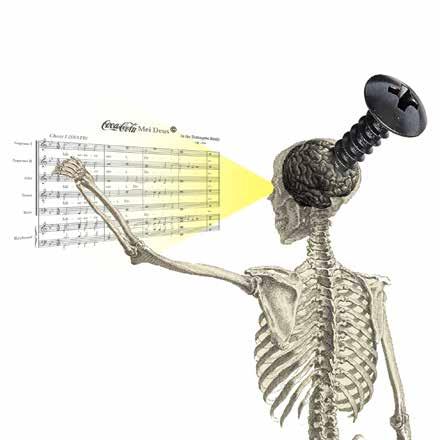
(past), all while we are in the middle of a performance (ritual) of actions which we do not even realize (present). What if we see the dialogue as the actual goal instead of the object?
There is a spectrum of different kinds of rhythms where you can go to different kinds of rituals. Depending on where you want to be placed in the spectrum, from the spiritual world, to daily rituals, you position yourself in all of them mentally when you go through those actions. My goal as a designer is taking advantage of this idea, that there is value in the way how you experience rituals.
mcslof@gmail.com www.maartenslof.nl
The Netherlands
Internship: Studio Floris Wubben
Project People’s Pavers
People’s Pavers is a project in which anybody can take part in designing. It is a system which gives everybody the tools to both shape and create the very streets they walk on. Through a CNC-like machine, anyone can leave his or her impact. Only instead of computer controlled, the machine is fully powered and
controlled by the participants. One person is restricted in its freedom and can only move in one of two directions, or control the flow of material. This means that with more people participating, more freedom is obtained, and more expressive designs are created. The system’s purpose is to capture people’s collaboration, conflict and consensus in the design, and celebrating the collective as a designer of the public space.
Thesis
The public adaptation of intellectual property
In order to protect artists and inventors, and accommodate innovation, intellectual property rights were created. But intellectual property is
much more than a set of laws. It is a human phenomenon emerging from our perception of ownership. It seems so logical today, but the protection of intellectual work hasn’t always been omnipresent. The ownership of an idea became a concept and now even a commodity. Instead of materialised work that has a physical determined position, intellectual property can multiply and change ownership at any moment.
What role does intellectual property play in the creative field? In ten examples different aspects of imitation, inspiration, copying and stealing are exposed and dissected into its social relevances, and questions the relativity of property.
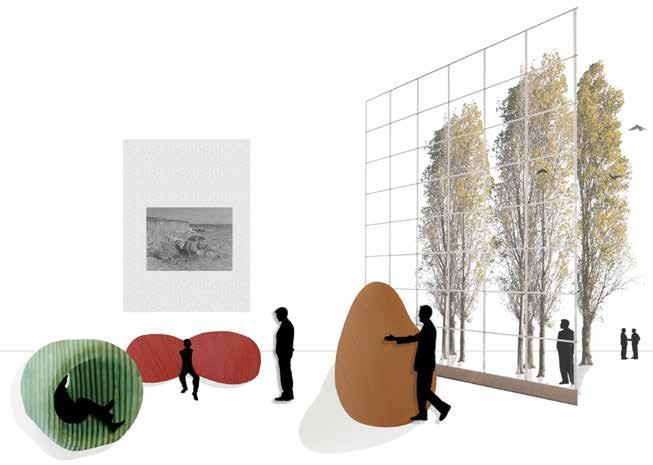

fabiennevansteensel@gmail.com faabvansteensel.nl
The Netherlands
Project Intimacy
We all desire at any given time to have physical contact.
Physical contact ensures us that we feel satisfied and calm, and we experience less stress. We don’t realise how important it is, it gives us a good feeling and a sense of security.
In Intimacy, I give the adults an opportunity to experience the physical
part of a sense of security through three different actions that give a tactile experience. There are three ways to experience the basic principle of a sense of security, namely: hiding, safe haven and embrace. I defined those words and created a family in which each object has its own character, tactility and function to express the physical part of a sense of security. Everyone desires at the right time that special feeling!
Thesis
Het onbegrijpelijke leren begrijpen
The key to my work took shape during my study. I learned that people could experience a sublime moment,


which can have a big emotional impact on them. Normally, our mind is in a neutral position, but we also need something that arouses passion (Edmund Burke). Pain and lust play a big role in this. In my research, I wanted to find out how people experience emotions and how they can be influenced. People first have to experience pain and fear, before they can experience happiness (lust): the sublime moment for me. Within my work, the focus lies on the awareness of pain and fear, which eventually will lead to happy feelings.
mstoeltie@hotmail.com www.manonstoeltie.nl
The Netherlands
Internship: Martens & Visser
Project
Freeze frame
“The relation between what we see and what we know is never settled.
Each evening we see the sun set. We know that the earth is turning away from it. Yet the knowledge, the explanation, never quite fits the sight.” – John Berger, Ways of Seeing
Thesis
Freeze Frame:
Every spectator interprets images differently. Freeze Framing at exactly the right moment amplifies the suggestion of movement. The process arouses curiosity and nourishes imagination.
Frozen moments and open ends spark a dialogue between my objects and the spectator. This invites spectators to explore, to use their imagination and to finish the action mentally. The visual exploration of Freeze Frame, allows for questioning intentions and functions, and sparks imagination.
Freeze Frame
An investigation into how we see things and what our imagination does to finish the unfinished actions.


luuk@luukwezenberg.nl
The Netherlands
Internship: Renato Nicolodi
Project Headroom
quote from Saint Augustin, “Images of two tones in my memory I measure impressions, modifications of consciousness”
Headroom is a multi-faceted installation that focuses on the
experiential understanding of space – approaching and moving through seductive and, at the same time, suppressed volumes.
The narrative of the installation consists of six overlapping phases –recognition, approach, reaching, arrival, orientation, and monitoring.
This configuration creates a unique script which is manifested in both architectural and sound composition.
Tension, release, depth, and reflection, encountered in this spatial journey, are translated into accompanying audio installation.
Thesis
Ultimate Mass Composing. The Analogy of Architectural Modulation
An architectural manifestation by itself has no dynamic fundament. It is fixed for a set of time. The observer is the opposite. Observation evolves and is therefore dynamic. The confrontation between fixed and dynamic environments generates expression. The analogical confrontation between architectural manifestation and observation generates understanding. Understanding needs therefore expression.
arjen_witteveen@hotmail.com www.atelieraw.nl
The Netherlands
Internship: Studio Thomas Vailly
Project Antroporosion
In the world of Antroporosion, the objects emerge from natural processes simulated by mankind. Inspired by the action of Erosion, I blend two worlds: the one of natural

processes, and the one of processes and materials generated by man.
Antroporosion exhibits a new field of tension between natural and artificial erosion.
Man has been building his own environment for centuries. Cities, buildings and interiors belong to the temporary human landscape. Here, materials extracted from the earth’s surface are transformed by complex chemical processes.
Antroporosion is a landscape of furniture that represents the mix between the natural and the artificial. The Erosion of Man upon his own interventions.
Thesis
Groei / Snoei
Through my fascination for growing and shaping bonsai, I question the differences and similarities between men and nature and how this relationship has changed. Both in the bonsai method and contemporary design practice, organic and manipulated growth are central elements.
How did the balance between these two evolve, and is there a symbiosis going on or does man dominate the entire process?

 Yi Zhang
Yi Zhang
zhangyiyexuan@gmail.com
China
Internship:
Studio Snorhaar and Dekoffiefilters
Project Pet Furniture
When you enter the living room, suddenly the furniture becomes strange. None of them are stable and independent as usual. Right now, they are either lazily against the wall or hanging from the ceiling to find a stable point. The furniture seems like pets or children, who could not finish
their mission on their own and need your help and attention. Because of the soft and flexible material, the furniture reacts to every movement and emotion from you: it triggers interaction or even causes a clash.
By breaking the original character of furniture and using the power of exaggeration to highlight the exchange between furniture and humans, Yi Zhang is going to re-define conventional furniture in our everyday surroundings.
Thesis
Intriguing Surprise: surprise as a tool in design
As a person, who is easily surprised under the dull surface of our world,
some of these surprising situations make me confused and amazed. I start to ask myself: “What is surprise? How is a human being affected by surprise?” Therefore, the research focuses on exploring the power of surprise.
By analysing the usage of surprise elements in the design world, for example in material, color, symmetry and harmony, I found out that the effect of being surprised is more powerful than we realise.
A few decades ago, the making of a photograph was mainly reserved for professionals and a few wealthy amateurs. At that time, there was an immense need for the visual documentation of reality around us in photographs. Obviously the professional photographer focused on that task with a great deal of dedication.
Today, more than 100 million new photos are being uploaded to the Internet every day. We don’t need professional photographers any longer to document the world around us. The question is justified whether we - professional photographers – still have anything to add to this visual information overload. This existential question for photographers has been discussed many times by this group of graduates.
The medium of photography is undergoing rapid change. And wherever there is change, there is also opportunity. We, at the Royal Academy of Art, The Hague (KABK), find it hugely exciting to see new ways to engage the medium. We teach our students to invent their own paths and be an author. What is the story you would like to tell? Apart from being creative in the field of making work, you also need to be creative in finding your audience and creating new business models.
The opportunities for the new generation of photographers are boundless. However amazing that may sound, learning to deal with these infinite opportunities is one of the greatest challenges faced by this generation of photographers. In his essay Two Concepts of Liberty, British photographer Isaiah Berlin drew a distinction between negative and positive liberty. In this context, negative and positive should not be seen as value judgements.
Negative liberty focuses on external influence – in this case, the limitations of photography as a medium – which transforms into unlimited opportunities in an incredibly short space of time. Positive liberty, on the other hand, focuses on the freedom to act independently, on your own
will or ambition. The stronger someone’s reason for doing something, the more autonomous and freer they are.
Negative and positive liberty are interrelated. It is only possible to experience the new unlimited opportunities of the medium as positive if the user is capable of dealing with it, by virtue of having strong motivations – or a strong will. The challenge of photography education lies not in simply demonstrating and teaching about the endless opportunities of the medium, but in encouraging students to develop a strong ambition and a strong will. This enables them to take full advantage of the new, unlimited opportunities in technology and the other changes within our profession.
The final-year cohort of the photography department reveals a superbly eclectic mix of photographic expression and a celebration of liberty and freedom. They nurture photographic thought, although it may not necessarily lead to a photograph. This group of photographers no longer think in terms of traditional formats. What they all have in common is their deep-rooted ambition to communicate and to share. They make their own decisions, have developed a strong will and, through it, prove that they are ready to take their place in the professional world.
Rob Hornstra & Lotte Sprengers Co-Heads of Departmentvan der Aar

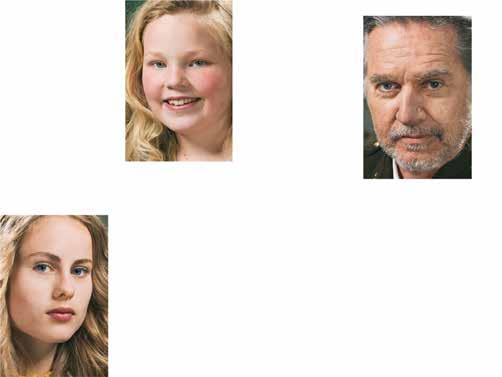
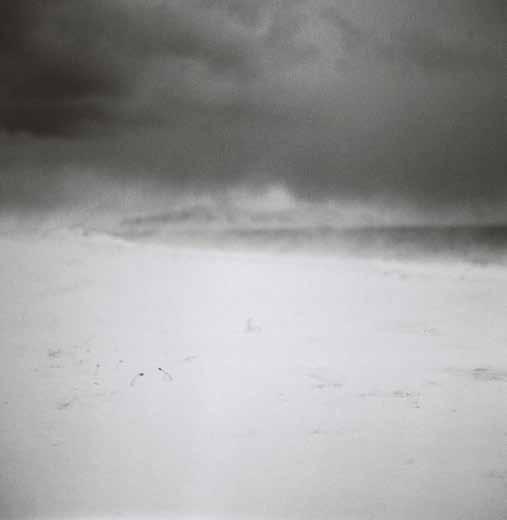

iris-sanne@hotmail.com iamirissanne.com
The Netherlands
Internship:
Julia Fullerton-BattenProject A Peculiar Day
Every truth has a million versions.
When a family gets asked about what tore them apart details get forgotten, lines get confused. What happened on the 25th of June, 12 years ago?
Something that started as a birthday party turned out to be the start of the end. But the audience was waiting and the show must always go on.
In a multimedia project including interviews, a tableau vivant and several photographs we ask ourselves the question: What is the truth?
A project exploring family dynamics when domestic peace has been disrupted and never had the chance of being restored.
Thesis
After a dramatic visualisation of a teenage suicide became popular among teenagers I wanted to research how we visualise mental
illness in popular media. It started with the movie ‘One Flew Over The Cuckoo’s Nest’, who had a permanent effect on the healthcare system in America. This was in 1975 and we came a long way from then. Things need to be more shocking and sensational in order to have impact but there are reasons we should not be showing close ups of people cutting their wrists. There are media guidelines to follow but as with every art form there is a freedom of expression and as long as people are willing to fund shows like ‘13 Reasons Why’ will stay on Netflix. If showing a suicide the way it is, is not the way to go, then what is?
huldasif@gmail.com www.huldasif.com
Iceland
Project Jafnvel lognið er hvasst / Even the calm is stormy Looking at our societal structure, there is little space for failure and imperfections.
This is especially true in the reality of mothers. My sister has been diagnosed with bipolar disorder. This however does not take away from her the desire of carrying her
own child. Although more problematic procedure than for most, she decided to go ahead with a pregnancy; this meant taking a risk and going off her medication.
The work discusses not only my sister’s condition and her becoming a mother but also how society sees, reacts to and faces the taboo that comes with mental illnesses and motherhood through mental illness.
Thesis
A matter of choice
With my thesis ‘A matter of choice’ I reflect upon my own reality within my environment, as a mother and as a woman.
Motherhood. My reflection had me
questioning the relevance and necessity of researching motherhood within contemporary western society in relation to the woman as an artist and a mother. As my research continue to develop it became clear to me that not only is it important as a research but also that it is important to open the dialogue in an attempt to continue breaking down the still very predominant patriarchal reality.


Marwan Bassiouni
marwwan@gmail.com
www.marwanbassiouni.com
Switzerland
Internship:
AdamBroomberg & Oliver Chanarin
Project New Dutch Views
Today, six percent of the Dutch population is Muslim, and the Netherlands counts more than 400 mosques. Islam is no longer foreignit is a part of the national landscape. In the ‘West’ there is more to say about our perception of Islam than
about the Muslim religion itself. In response to numerous negative depictions of the Muslim religion, New Dutch Views positions itself in the perspective of a Muslim who is looking at his country from inside mosques. By focusing on a space of coexistence between ‘East’ and ‘West’ these photographs affirm the existence of a growing and new Western Islamic identity.
Thesis
10 000 Trees in a Single Glance ‘10 000 Trees in a Single Glance’ evokes the capacity of a simple form to instantly communicate beyond verbal language. This study is the result of a research
on how photography can better engage in light of our growing numbness towards imagery. The paper suggests that documentary photography practice should focus more on aesthetics, and on the sincere intentions of the photographic author (ethics). Through the exploration of Islamic ethics and Zen gardening aesthetics this thesis provides a study of how art can be functional, ethically driven and communicative on sensory and more universal levels. Finally, the artist Hiroshi Sugimoto is analyzed in-depth and identified as the embodiment of a ‘Sublime Documentary Photographer’.


evaborsboom@gmail.com http://cargocollective.com/ evaborsboom
The Netherlands
Internship: Studio Carlos Alba
Project Awaiting Chances
In fencing, you need to wait for chances to show up or you need to take the lead.
This is the story of Quincy Dualeh, a 16-year-old boy growing into manhood. In the past, he lived with his mother but that was not the
best place for a child to grow up.
For 9 years he has been living with his foster family, together with his brother and sister. Quincy is a top fencer who is making the best out of his life. He is very aware that his life would be quite differtent if he had not been placed in his current family.
Struggling, failing, fighting back, starting over and at some point, win, when one is growing up. That is what growing into adulthood is also about, it is about trying to find out who you are and what you want. Even if you start with 10-0 behind.
Thesis
Seeing is understanding
Do images make a difference, do images exist within the documentary photographic field that can help cause a social change. How do these images make a change in society?
In three chapters, I approach this question in various ways. To get more grip on the meaning of the photograph and the impact it may or may not have on the public and the one being photographed. What does it mean to make a picture of a person or about a person’s life or situation? How can a photographer say something with personal images that will also interest an outsider? How do these images make a change in society? Does a method exist to interest the outside public?



pbulfo@gmail.com
Italy
Internship: Andrew Phelps
Project Flex Kurz
There is more to bodybuilding than narcissism and testosterone, in Austria it has become a form of cultural integration. Austria, enclosed in a dense system of mountains, has never been naturally open. Its traditions and folkloristic rituals serve the purpose to maintain an old vision of its secular identity, yet
in more contemporary times the popularity of one single man has paved the way for the birth of a new tradition. Arnold Schwarzenegger has influenced, due to his fame and career, many generations who want to follow his footsteps and seek a model of ambition to succeed in society.
‘Flex Kurz’ is a good reason to follow the deeds of different bodybuilders, to understand how a selfish practice can become glue that ties people together.
Thesis
The recurrent ambiguity of a sculptor
With all of the possible movements and exchanges brought from a
fast-growing globalised world, to represent a nation with a type has become a utopical idea, yet this premise will continue to linger as long as people will prioritise racial appearance in society.
During the short existence of the Weimar Republic, photography through the use of physiognomical studies, intended to understand what was the feeling of the nation, by photographing as many types as possible. This experiment, altered by both left wing and right wing pre-conceived political intentions, resulted in the exploitation of the lower classes and the invisible.
mail@maloubumbum.com http://maloubumbum.com/ Denmark
Project CHANCES ARE I MIGHT DISAPPEAR
I am a brain fart. A tiny sand-corn. Nothing. I am a little piece of space on this planet. And yet I do matter. We all matter. I have photographed myself obsessively for over a decade now. It is nothing special, you probably have also done it. That is not the point. The point is, I do not want to disappear. I want to be remembered. Not necessarily for anything

special, just remembered. Not forgotten. Like we all want. Imagine we all suddenly die of something; an epidemic for example. A new life came to earth and they found all our remains. Including my book of self portraits. Imagine they started worshiping that, as much as we have done with other books we have found. Then they would also know what it would be like to have been a woman in this day and age.
Thesis CHANCES ARE I MIGHT DISAPPEAR
My thesis explores the metaphorical aspects of the act of taking a photograph of yourself.
It includes the following chapters:
The memory; Where I will be talking about the memory, and how it works with self -portraiture. The mirror; Where I will be talking about the mirror, and our fascination with it.
The true portrait; Where I will be talking about the true portrait and if such exists.
This thesis has given me so much knowledge about why I photograph myself, that I thought I would find through my photography, but ended up finding through writing about it. The chances are I will disappear, but not without leaving a mark.




tamar-anne@hotmail.com cargocollective.com/ tamarvanhaastrecht
The Netherlands
Lois Cohen loisycohen@gmail.com
The Netherlands
Internship: Robi Rodriguez Project Metamorphosis
‘Metamorphosis’ is an editorial series in which photographer Lois Cohen and stylist Indiana Roma Voss attempt to change the dialogue of 12 outdated female icons and figures. By changing single elements within the classic imagery the meaning of
the image itself changes. The intent is to acknowledge the arbitrary hypocrisy of the original images as well as create new archetypes of empowered females to look up to. This work is another building block in the grand scheme of creating an inclusive society for this generation.
Internship: Niels Stomps
Project ondonopo
There is an imaginary world that exists beneath the ice of the North Pole. It’s called ondonopo. Born out of a bedtime story told
to me by my father, ondonopo has grown into a large universe of my imagination in which you can enter ice caves by jumping barefoot into geysers. But as I grow older, the universe slowly starts to melt away, which makes me afraid that I will turn into an adult without imagination. How do you keep seeing the magic in our reality just like kids do? Can we keep our childhood eyes?
Thesis
almost our world
In this thesis, I discuss why you would use an alternative reality as a storytelling device and how specifically Black Mirror and The Circle
use it. I started the thesis off with an explanation of the term ‘alternative reality’ and why the focus lies on stories dealing with technology. Next is an analysis (and comparison) of the two main sources, based on theme, visuals, style, and impact on society. I concluded that in order to share a relevant message, it is more effective to use an alternative reality that is further away from our own reality since it leaves the audience room for imagination. Furthermore, by using a fictional world, the maker has the freedom to exaggerate certain elements to make his message come across more effectively.




Trees Heil
trees_1993@hotmail.com
www.treesheil.com
The Netherlands
Project Interim
How can we protect ourselves from information overload?
An underestimated cause of mental and physical distress can be seen in the ever-increasing and continuous
stream of information that surrounds us. I created moments, in which I show alternative ways of protecting ourselves from this overwhelming phenomenon. My images show a visual quest for finding modes of relaxation through exertion.
Thesis
The directed spontaneity In this research I analyse how artists work with direct or indirect instructions towards the participants of their works. How can these
limitations facilitate spontaneous reactions among the participants? How do these created situations lead to moments of expressive communication?
I introduce the text with a personal, photographic experience. Here it becomes clear that I have the primary need to create intimate interplays between myself and my subject(s). To achieve this, I use my camera as a mediator.
jonathanvincenthielkema@ gmail.com www.jonathanhielkema.nl
The Netherlands
Internship: Prospektor
Project
The Millenial Maze
I am Jonathan, I am worried. I have spend five happy-go-lucky
years at art school, but now I have to graduate.
I always wanted to be an artist, But never quite understood it. Is this what I want?
Thesis
The Artist, The Entrepreneur, The Leader: A Plea for Applied Collaboration
This plea aims to reveal the uncertainties as well as the advantages of collaborative efforts in the artistic field. Together with a science journalist and a set of specialists,
the author tried to uncover the fundamentals of working together effectively and discusses the essential nature of successful collaboration. Written to inspire and support people in becoming flexible, collaborative leaders, this plea offers a practical guide that helps you to shape, build and maintain strong collaborative relationships that contribute a meaningful attitude in times of constant change.

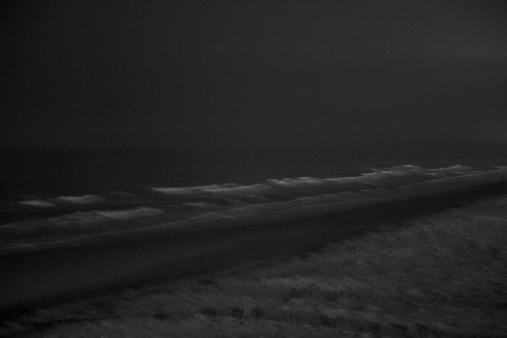


Evita Hinneman
evitahinneman@gmail.com www.evitahinneman.nl
The Netherlands
Internship:
Daniel Gustav Cramer
Project Out of Time
For years lighthouses have been shining their light oversea to guide the ships and connect the land with
the sea. It is a beacon of hope and orientation. Today, lighthouses are verging on the edge of obsolescence. By preserving the architecture we keep our identity and the connection to our past. What remains is the notion of our maritime heritage.
‘Out of Time’ is an associative journey on the disappearing function of lighthouses. Following the idea that it can be simultaneously seen from a historical and emotional perspective.
Thesis
De eeuwigheid van het ogenblik
In my thesis, I have investigated how contemporary video-artists use duration as a notion of time in their work to experience a passing moment as eternal. It is an attempt to understand how their work can bring me another consciousness of time. An interim moment where the clock is not present.
joelhunn@gmail.com www.joelhunn.com
Switzerland
Internship: Zed Nelson
Project Standards & Classes
When I was growing up, I heard the sentence “How things should be”. many times, but who is actually defining how things should be, and what are those definitions based on? We measure, evaluate and judge –referring to the accepted norms and standards.
‘Standards & Classes’ deals with the definition of the cucumber and the question of how this seemingly simple fruit should be, taste and look like. In order to have the variety of two identical fruits in the supermarket, the once natural plant has to be controlled and corrected by science, technology and regulations.
Thesis
Why Kim Jong Un’s photographs are more credible than your fake Instagram smile.
We have learned what makes a good picture. Similar to how we interpret photographs, we do not question our own poses in front of a camera. The result of this is generic photographs that are carefully picked
elements that work as a best-of of our lives. We are creating a photographic facade. “Why Kim Jong Un’s photographs are more credible than your fake Instagram smile” questions our competence of reading photographs as a construction of the photographer and the photographed. When we look at Kim Jong Un’s photographs we make a clear association with the constructed environment. On the contrary, we have been used to entrust high credibility to the photographic content that surrounds us daily.
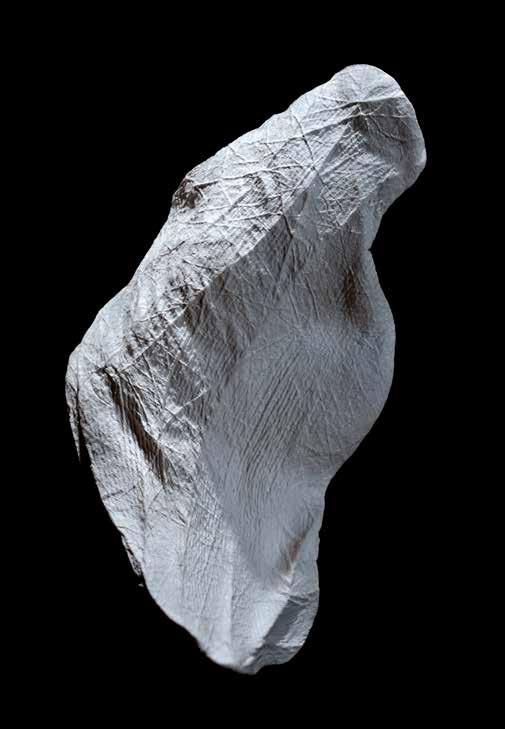


 Ani Sevdinova Kehayova
Ani Sevdinova Kehayova
ani.kehayova@gmail.com anikehayova.com
Bulgaria
Internship: Reynold Reynolds
Project Fractured me
I am here as a composition of approximately 40 trillion cells, which carry my own unique genetical code. I am here as one unique, finite and fragile organic machine. I am here as a human body. Inspired by Forensics
I study my unique genetical code in order to create a form of a self-portrait, a fragmented experience of me, not as a person, but as a human body. In an age of artificial body parts, bionic technology, and genetic modification I feel the urgency to address my organic human body as a fractured puzzle. I am thrilled that each piece of it, which I consider unique today might become replaceable and easily reproducible in the future.
Thesis
Living in the loop I live in an environment, which is saturated with visual information and I have become more conscious
about it. In my paper, I elaborate on my personal experience of visual data overload. I define it as one big loop, a finite infinity, an endless process of massive production and consumption of digital data, which makes me feel both overwhelmed and fascinated. What I am witnessing is actually a great consequence of digitalization and the internet. The roles of consumers and producers of visual content have merged and the actual exchange of cultural knowledge is under question. As a visual artist, I am evaluating my role in ‘the loop’ and if there is any way out of it.
info@anselma.de anselma.de
Germany
Project Full Of Son
Four years ago my son Ingmar was born and until today I am struggling with being a good father to him. It is the first time I live together with a man that is as well family. The foundation of every good relationship, especially between parent and child, is trust and participation. How do you overcome your insecurities, when you have failed as a father
already once. How do you orientate, when there is no experience in the father-son-relationship at all.
In my graduation work, consisting of an audiovisual work and a photo book, I am exploring on an emotional level what lurks behind the facades of concepts as “man” or “father”.
It is my aim to emphasize the importance of a father’s presence to his child.
Thesis
Obsession And The Inevitable
Starting point for my thesis was my own assumed obsession with photography in terms of producing large amounts of images. While diving into it I discovered far
more layers than just quantity. Using the surface of a text to investigate the triangle of photography, obsession and myself accelerated the inner debate about my position within photography in general. I came closer to formulating an own photographic universe by setting some of its borders and understanding its language a little better. These dynamics let me as well narrow down my many fascinations to a reasonable set.
The framework of the thesis are my two case studies ‘Nobuyoshi Araki’ and ‘Garry Winogrand’ with interluding chapters about the notions of obsession, time and death.

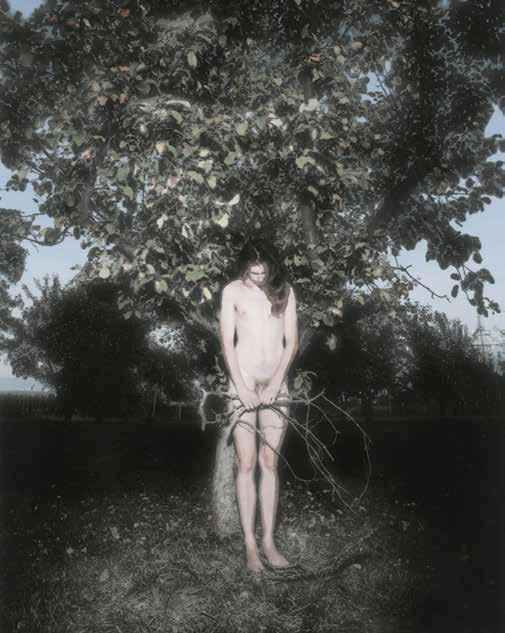


kieblesz.anna@gmail.com
annakieblesz.com
Poland
Project
This is not how we brought you up How do we deal with getting independent from our families? How do we deal with their expectations?
Religion was never a my choice. With a strong Christian family background, going against it would mean also going against my closest ones. This ambivalence I am struggling
with brings me to fundamental frustration. Escaping is not an answer. Can we find a way working for both sides? Can our differences be mutually accepted?
As my family becomes part of the stage, I follow their lessons but on my own terms.
Thesis
Fun-damental pain: Merging art and life with all the tears and blood it implies
What is the relation between disappearing and art? Can it be an answer to our existential issues? This thesis is a journey through different topics, focusing on the importance
of ones emotions and oscillating around subject of ‘Conceptual Romanticism’.
Going through art and life of two artists – Bas Jan Ader and Sophie Calle, I focus on treating those two essential components equal and dependent on each other. The creative part gives them control and leads to initiating intense and often dangerous situations.
I explore the troubled inner-self in the existential search of meaning, ending up on the certain emptiness. This void I see as fundamental pain, rooted deeply in everybody.
steven_de_kok2@hotmail.com
The Netherlands
Internship: Thijs Groot Wassink
Project
Wiping Out Loud
I interviewed several couples who recently bought a house together about how the household tasks where divided. I found out that there was only one task which was done very systematically and on a daily basis: wiping out the shower
after they took one. No one likes limescale on their shower and the best way to avoid it is to use the window wiper everyday after taking a shower.
In my work I often focus on the banality’s of daily life because I believe that our identity is hidden in our daily routines.
I would like to thank al the brave people who participated in my project.
Thesis
Ons Glorie
My thesis consists of a bundle of self written opinionated essays. In the whole thesis I describe my vision
about photography. All the essays are very subjective and not always written polictially correct. I hope that the reader agrees with me or hates it and makes up his or her own mind. I write about photography projects, I give examples of what kind of projects I like and dislike and obviously I say why. This comes from a frustration that I have towards school and I also explain why my work is about everyday subjects.
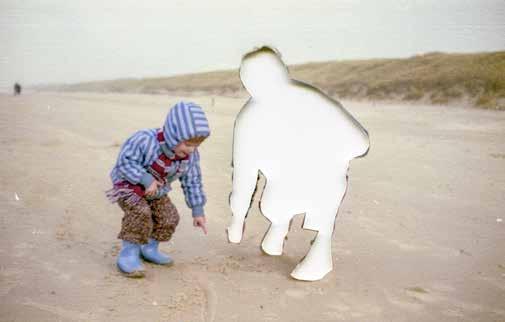

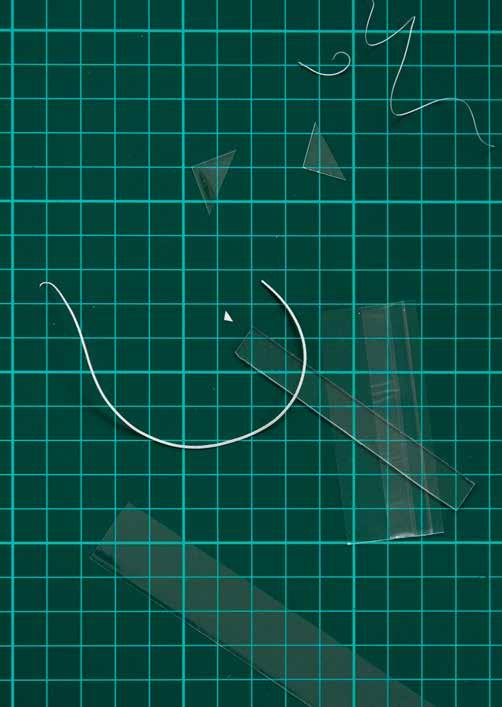

mjkuijper@gmail.com www.marijnkuijper.nl The Netherlands
Internship: Regarding You & Me
Project My father’s death in 1983 stopped time He will always be 36 years old, and I will always be his three-year-old daughter.
In Regarding You & Me I am researching how he and I connect
in the present, by collecting and examining traces he left behind. On many occasions I have missed him as a father figure and role model. I have never been able to tell him that I am transgender. Now that I’m about to become a father, the wish to get close to him becomes even stronger. In order to define myself, I need to define my father and the ways in which I relate to him.
Thesis
Warm ardour and cool appraisal
What happens when photographers direct their camera towards their own family members? I researched several dilemmas using the work
of Sally Mann, Nan Goldin, Leonie Hampton, Larry Sultan and Robin Cracknell as case-studies. It might seem easy to use ones own family as the basis for art. The subjects are close and probably willing to cooperate. But as the case-studies show, it is a constant balancing-act. The photographer has to switch between the role of family member and artist. This is not easy, as the photographer will be challenged by their family members when it comes to showing the work and attributing meaning to it. In order to make the right decisions, the artist has to have a warm heart with a splinter of ice.
marijnleeuw@Hotmail.com www.marijnvanderleeuw.nl
The Netherlands
Internship: Sjoerd Knibbeler
Project
Meanwhile, a solid rock can become incoherent sand and then a caslte Certain events in life can rock the foundations of your convictions. When life took an unexpected turn, I expected to be reduced to a blank
paper. Yet this paper turned out not to be blank but a 0,5 college ruled (graph) paper. The ones on which we, from primary school on, learn to write between the given lines and do math. I strongly felt the urge to create some elbow room for each individual line and get rid of the predetermined pattern.
This act of ‘ventilating’ was the starting point of a project in which I try to loosen up fixed structures and fixate what is coincidental.
Reviewing objects in their multitude and play with their versatility. A reminder that a solid rock can become incoherent sand and then a castle (and vice versa).
Thesis
Where clouds become animals
We sometimes tend to see things as being a natural phenomena instead of acknowledge its constructed origin. In four individual yet complementary essays ‘Where clouds become animals’ subjectively looks into different ways of eliminating automatic perception and defamiliarisation with what is so well known, this in order to take our time and be amased by the present instead of what is already experienced.
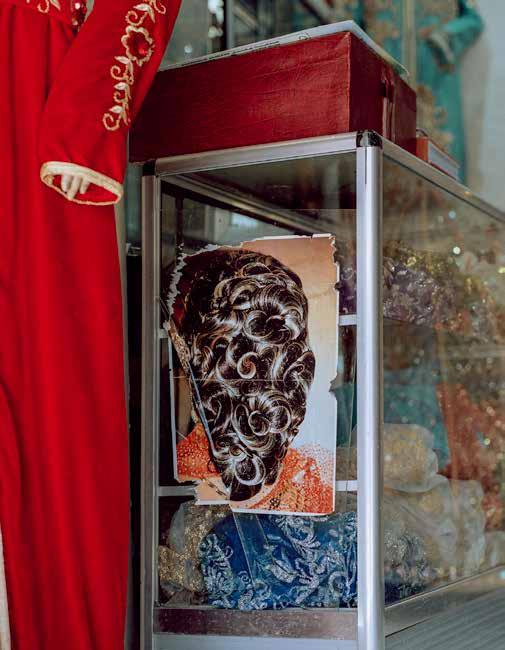


mail@hananelouardani.com
www.hananelouardani.com
The Netherlands
Internship: Morad Bouchakour
Project The Skies Are Blue, The Walls Are Red
‘The Skies Are Blue, The Walls Are Red’ contemplate the different layers of a diasporic identity. How does one reclaim home, without falling
into cultural clichés? How can one represent their roots without feeling alienated from their own culture?
The project studies the visual culture in Morocco. It stretches the notion of identity from the point of view of someone who has lived outside of it, it questions its validity, and creates a conversation between the artist, and the place she calls home.
Thesis
Snowy mountain tops and waterfalls
‘Snowy mountain tops and waterfalls’ is a research about the photo studio backdrop used in the triangle
of the Arabic, African and SouthAsian area. The thesis is a more nuanced view on the taste, social, cultural and religious context on the identity of the backdrop. The role, the function and the importance take a indispensable part.
It continues on the aesthetics and the tradition of the setting. How is this tradition fading away and how is the digital invasion on the medium photography responsible for that. Not only does it have impact on the loss of tradition, it also effected on the hierarchy and craft of the photo studio.
gpalmieri3@gmail.com www.giovannipalmieri.net
Paraguay
Internship: Olya Oleinic
Project
If home is where the heart is, does the heart then reflects home? Bearing in mind the fulfillment of a life, the actors of capital undertake lifelong journeys of constant displacement. The result of this process is the alteration of the idea ‘home’ as a transitory instance of time and space, more likely connected to

an encounter between past and present, inner and outer worlds, the essential instance of being. If ‘Truth’ as the ultimate antidote to the law and power of capital is to be found in being rather than having, it is necessary to inspect and redefine individuality and subjectivity in the “hic et nunc” (here and now). With this project I blur the encounter of my identity constructs linked to time and space, diving into the research of being as the sum of scattered frames or instances of oneself.
Thesis
“Alea Iacta est” – Success on the opposite bank of Capital
“Alea Iacta est” comes from my discomfort and questions within
the structure of capitalism reflected in the relations among individuals, behavior and institutions. The guiding question of my research is how success can objectively be defined, regardless of norms or ideals constructed through the emergence and establishment of the market society and its consequences on the conduction of life. The answer I set is that success is to be found within the attempt to reach ‘Truth’, a term that here stands as the essence of being, being instead of having.

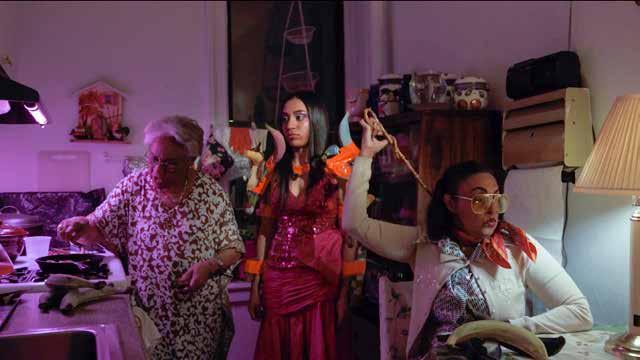

sydneyrahimtoola@gmail.com
Instagram @quavosmommy123 USA
Internship: Melanie Bonajo
Project
I Forgot How to Speak
Spanish (film)
“What is our identity in modern day America?” My name is La Babosa (cry baby). I was born and raised in Junction Boulevard, Queens, NY - full of migrants coming from Latin America. My family is from the Dominican Republic. They moved
to the U.S. for a better life. Life here is a mini island, dense with cultures immigrants left behind but maintain here. I am also American with American values. There is confusion about my identity. I know I am not alone. That’s why they call me “cry baby” - I am confused, alienated about my identity. This is the result of my world. How I perceive this community as a member; using my family as actors, giving them a platform in this story. Yet, I play the role as an outsider: reducing them into caricatures.
Thesis
Undo I identify and research the dilemmas present in the representation of people of color (POC) in photogra-
phy. These dilemmas include the “primitive” semiotics that we identify in our imagination with POC, hindering our experience with the visual content at hand. I go in depth with how the semiotics of the primitive came about, using the colonial past as evidence. The key element to demonstrate these points is through African-diasporic hair, formulating an in-depth analysis to J.D. ‘Okhai Ojeikere’s Hairstyles archive, and the consequences to post-colonialism and identity. Keeping hair as the focus point, I attempt to analyze how POCs today counteract with these stereotyped implications using image and black folklore as tools of reclamation.
info@murielschouten.com www.murielschouten.com
The Netherlands
Internship: Pieter Hugo
Project Ways of Understanding, Voodoo/Vodun
‘Ways of Understanding, Voodoo/ Vodun’ looks into a variety of representations of Vodun, the official state religion in Benin, West Africa. This religion became known under the general term ‘Voodoo’, and occurs in our commonplace thinking as something that relates to primitive
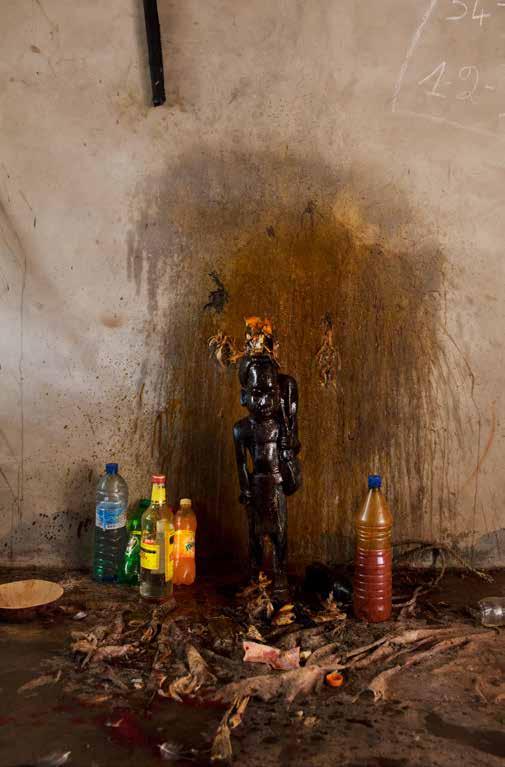
belief, human sacrifice and black magic.
I researched the Western representation of Vodun from three different perspectives: colonial archives, anthropological museums and Hollywood films. Next to that, I question my own presumptions by engaging in conversations with Alfred Quenum, a high priest in Vodun. Followed by a journey into his personal practice in Benin. This project deals with the complexity of understanding a culture strange and unfamiliar to my own.
Thesis De Cultuurbarriére
The aim of this thesis is to get a better understanding of the potential problems and interests
when representing “the Other”. It researches how our Western culture and representation is shaping our personal identity, and how this influences the way we look at others. By using the Rwandan genocide of 1994 as a case study, this thesis analyses the cultural identity of six Western photographers, followed by their personal motivations and intentions to make a project about the Rwandan genocide, and the resulting projects of this situation.




danielsiegersma@hotmail.com danielsiegersma.com
Melissa Schriek
info@melissaschriek.com www.melissaschriek.com
The Netherlands
Internship: Petra Stavast
Project Promenade
Have you looked around lately? Did you notice how some street poles slightly bend towards each other, as
if they are reaching out for contact?
A plastic bag shimmering by the sunlight, red bricks carefully aligned into an accidental sculpture. The city is constantly moving and interrupting the mundane, but daily routines have put a blindfold over our eyes.
‘Promenade’ explores the interruptions of everyday life and how daily environments can be perceived. It aims to create an awareness of elements and situations that are usually considered ordinary or common.
I wonder about the mundane and intent to see it’s significance.
Thesis
Tête-à-Tête
‘Tête-à-tête’ is an exploration of the camera as a tool and the role of the photographer while exploring human relationships in contemporary society. By implementing performative roles on certain photographers, I discovered what these roles can mean whilst creating work about human relationships. For instance, I have explored how a photographer can work as a choreographer, director, and participant.
The Netherlands
Internship: Donald Weber
Project
It wasn’t set in stone My family has no tradition. Yet, my region is full of them.
I have never really thought about this when I was growing up, but that’s just the way it was. The decorations in my house are relics of my
ancestors that are mainly there to commemorate them as people. The relics belong to the rural traditions primarily practiced in Twente and partly over the border to Germany. Seeing those relics as a kid made my curiosity about these rural events rise. The relics become a form of latent traditions that I try to be involved in.
Are we by default participants of our regional traditions or do we need to gain it actively?
Thesis
Second Rebound – A self-critical realm in documentary photography
In my thesis, I am researching the close ties between the personal ambition of a photographer and
the distribution of a photographic documentary project. I would like to clarify to what extent the author of a work can find a purposeful outcome for a project. This includes the right audience, a well-communicated message, and a certain satisfaction from the author. Are they happy with the result and if not, why not? Why does the photographer choose to present their work in a certain manner and does the photographer understand the communicative value of their work for the chosen audience?


avotitn@gmail.com
Russia
Internship:
Moscow Museum of Modern Art
Project Home
I always identified Russia with my family, childhood, and identity rather than its government. Yet, despite all efforts, the government and its politics tend to seep into one’s private life and home. This project is about my attempt to reconcile my family’s support of a system that I detest.
The photos depict my family members and their everyday surroundings, situating them in their Russian context. They are expressions of my love toward my closest relatives, in the minds of whom the country, its government, and family are closely interwoven; and my frustration that criticism toward the government is taken as a form of betrayal by my family. Unable to separate politics from our relationship, I am split between my convictions and my family.
The contemporary Russian art community is under constant scrutiny by conservative activist groups and
the government. Self-censorship is the norm. The question at the heart of this study seeks to learn how the Russian government’s policies, from 2012 onwards, influenced artistic life in Russia and contributed to artists’ perceived need to self-censor their work. The thesis examines changes in the Russian government’s relationship toward artists, its methods to exert influence over artists, and linkages between present-day policies and censorship in the USSR. In addition, the thesis draws from the author’s and other Russian artists’ own experiences with self-censorship to capture this phenomenon’s mechanisms at both a macro and micro level.
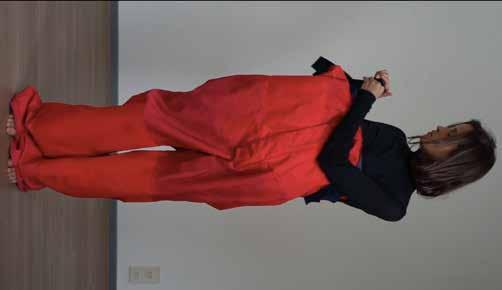

mayawingerden@gmail.com www.mayavanwingerden.com
The Netherlands
Internship: Olivia Arthur
Project Dear Dad, Three and a half years ago my father disappeared at Sea. Afraid my memories about him will disappear I was looking for ways to evoke them. That was then when I saw his sailing suit hanging carefully in the wardrobe, at my parents house.
By wearing it, I became aware of the power of the clothes and how it became a medium for shaping and sharing memories.
While dealing with my loss, two people close to me lost their fathers too. They both are girls and we share the same age. Therefore I wondered, what would wearing their fathers clothes mean to them? What memories would it evoke and what is the elicit power of clothing?
Thesis
Without a story you fall silent, without a story you disappear
As a photographer I often use my own memories and experiences as a starting point. Intrigued by the
way photography is often used to document the present, which will turn into a memory, I am interested in how photography and moving image can become a power to recreate memories. I begin to analyse the memory and the question how different artists approach visualising it. This thesis contains three essays in which memory is related to time, space and the sublime experience.
We are very proud to introduce our 2018 graduates.
It has been a pleasure witnessing and supporting their endeavours in developing their intuition and personality over the years in our department. It has resulted in a contemporary, professional and distinctive design attitude.
An attitude that is undoubtedly manifested in their work presented to you now.
Work that also reflects the department’s unique character and ambition in providing the best knowledge and skills concerning both Textile and Fashion, but also in encouraging an unconditional experimental artistic approach.
All designers are about to establish their own parameters in the field of design. They demonstrate the courage to understand and question the past, experience and provoke the present and to define the future.
With bold enthusiasm they will confront you with a future of boundaries stretched and fantasies triggered, open minded and unconventional.
It requires great social mobility to master and communicate a relevant and authentic design vision that will stand out. Our graduates are now committing themselves and becoming part of the daring context of Textile and Fashion design.
But they are ready to face that challenge. We believe they will use their self-confident and open mind to make strong personal statements and leave their mark.
Good luck, Yasmin, Yani, Yuchen, Marijn, Yuki, Timothy, Joana and Laura!
Gerrit Uittenbogaard Deputy-Head of DepartmentYasmin
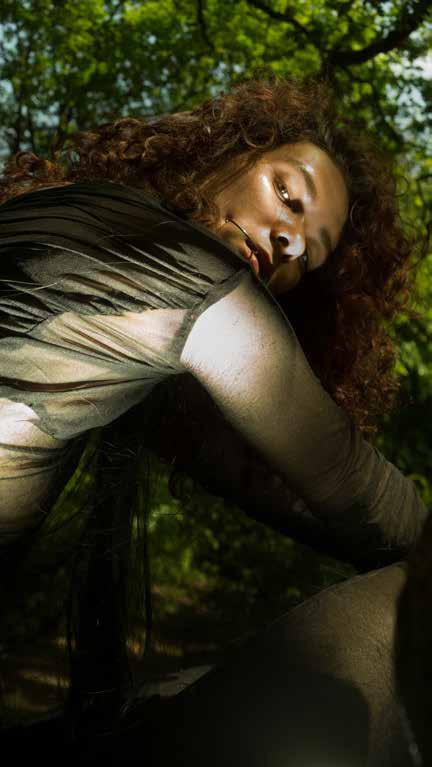


yasminboomsma@gmail.com
The Netherlands
Project
The Equal Rite
For my graduate collection, I was inspired by ‘The Rite of Spring’, a ballet piece that tells the story of a Pagan ritual that culminates in the sacrifice of a young woman.
I am fascinated by the piece, however, the aspect of the victim needing to be female without any explanation as to why sparks anger inside me. I chose to research this aspect and create a feministic version of The Rite in which the
depicted society exists in a postpatriarchal setting; one that does not hang on to a sex/gender dichotomy. The concept behind the sacrifice itself in my version of The Rite also becomes more holistic: a meeting between the divine and mortal, a meeting between strength and fragility.
Thesis
THE EQUAL RITE: The Blatant Misogyny in ‘The Rite of Spring’ & The Conception of a Feministic Rite “For the society in my version of The Rite to exist in a post-patriarchal setting, for women to be viewed as equals, the concept of gender categorization itself needs to be deconstructed.” [...] “The current
construction of the sex/gender dichotomy leads people to believe that sex is defined by biological aspects and gender by cultural aspects; nature versus nurture. However, both sex and gender are socially defined constructs.” [...]
“Humans decide where the category of ‘male’ ends and the category of ‘intersex’ begins, where the category of ‘intersex’ ends and the category of ‘female’ begins, not nature. So, the cause of women’s interpreted inferiority to men lies in the current misconstruction of sex and gender.”
yanichuang@gmail.com http://yanichuang.wixsite.com/ mysite
Taiwan
Internship: Byborre
Project
The Domestic Landscape
The Domestic Landscape is a reflection of how we use our everyday objects. By deconstructing, reconstructing and adding textile designed values, I want to highlight the potentials for our used materials. This series of sitting objects
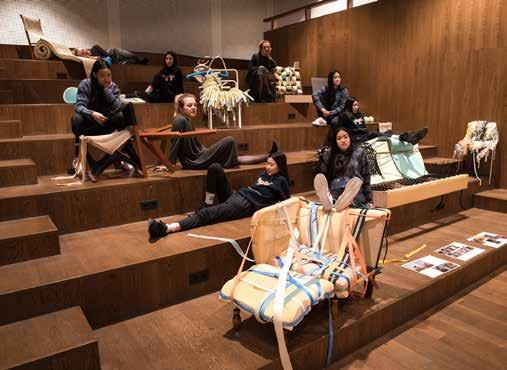
presents the possibilities of how we can re-use furniture in a textile characteristic. Chairs can be seen as a beneficial object in our daily life. It has a physical suggestion of bodily action, and form. The project focuses on experimental household objects, knitted textiles with the combination of polyurethane foam. I believe by enhancing our emotional connections with the designed textiles, I can create a new way of sustaining our existing resources.
Thesis
The Second Aid to Our Domestic Landscape
We are surrounded by emotional values that vary from person to person, experience, society, and
culture. The word ‘second aid’ speaks of a new form of possibilities and a richer, deeper experience of life. It is a reflection of our abundance of daily used objects, and obsessive desires to obtain more. Emotional value can be the second aid to our domestic objects. Fascinated by perception and cognition that one has, I would like to create a conversation between man and object, which brings ease, creativeness, and comfort. This is concluded in the Textile Guideline which shows how a textile designer can incorporate emotional values in one’s design.

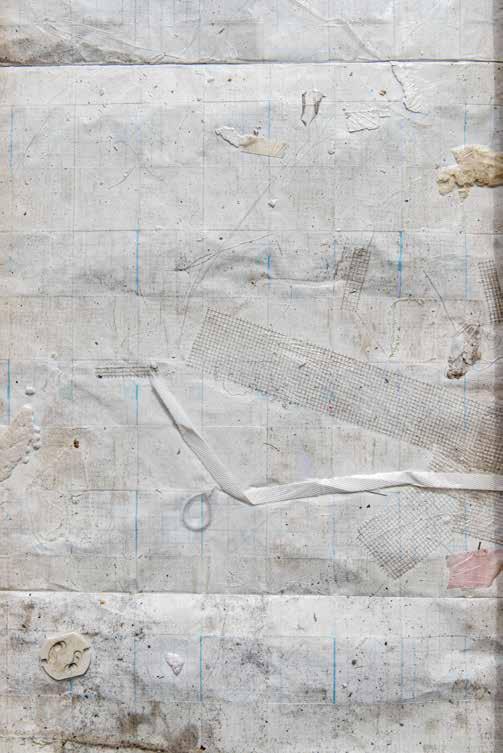


marijnvde@hetnet.nl
The Netherlands
Internship: Krijn de Koning
Project Perceelnummer 3927
Perceelnummer: 3927 is inspired by the pure connection between a boy named ‘Jack’ and the objects in his room in the movie ‘Room’ (Lenny Abrahamson, 2015). A connection in which all the objects around him are meaningful. This we do not experience to that extend in our daily surrounding that tends to exist only as a background behind our stories.
In my project that background is the story itself. I am building a house out of the ‘normal’ materials that are around us everywhere. All objects that do not have a decorative function but do decorate space. I am searching for a new connection to the materials and spaces that are already surrounding us. I want to reveal the three-dimensionality and detailedness of our surrounding.
Thesis
The subjectivity of scale
– The boy Jack: ’There’s so much of place in the world. There is less time because the time has to be spread extra thick for all the places like butter.’ – (Room, Lenny Abrahamson, 2015)
In my thesis I compare our percep-
tion of the surrounding to the way in which the boy Jack perceives his surrounding in Room. He experiences a strong connection to all the objects in a limited space. How are we connected to the physical world we inhabit and how do we experience its dimensions? What is the influence of time, geometrical knowledge and the possibility to build on this experience? Our mental world is endlessly connected to this physical surrounding that we can sculpt. The scale of our surrounding is subjective and we can create its dimensions.
yuki.ito.yuu@gmail.com
Japan
Internship: Aitor Throup Studio
Project
False Perception -The power of mixing symbols in one’s identityWe perceive others at first sight based on what they wear and how they dress. I want to falsify these notions of stereotypes and prejudices, by creating counterfeit. I mush-up multiple traits of existing garments. Every object/garment has its function, but what happens
if you deconstruct conventional patterns of a sleeping bag, a pair of pants, a military vest or a prison uniform? Once you have done that, all that’s left are fabrics. Placing these fabrics in a different context that I roughly stitch together and mush them up in order to reconstruct new complex garments. That makes symbols/traits of garments blur, giving a surrealistic view and falsifying ones perception. I create my own chimera.
Thesis
False Perception -The power of mixing symbols in one’s identityFashion plays such an important role in today’s society. The clothes one chooses to wear say a lot about the individual. It is a part of human behaviour to look at a person and perceive how this person is by the way they are dressed. But how did human beings form this tendency to use clothing as a tool of identification? And how did this create an implicit prejudice upon the meaning of clothing? I conducted this extensive research to prove how prejudice works and how these old notions could be transformed. By embracing all these stereotypes and using many signifiers together, can this create an image that will give a false perception? An image which will surpass the stereotypes.



 Yuchen Jao
Yuchen Jao
jaograce318@gmail.com
Taiwan
Internship: Bless Berlin
Project Mice on Mars
I intend to install a crash on Mars.
Crashing a car represents the destruction of a value. The value of constantly seeking for progress, a vain act of seeking to prove that humans are powerful enough to alter another planet. Once a vehicle has
crashed, the added value must be to distract from the machine itself , it becomes merely a piece of metal.
Through the use of miniature and mitate, I desire to construct a landscape that is free from the restriction of the geological space- earth, a scenery I wish to create with my textiles that exists merely in texts.
A new world that lies in my imagination of the distant future.
Thesis
Mice on Mars
Mars, a land that no one has ever set foot on, yet a place that has been designed, narrated and idealised. A place that might prevent humans
from extinction, a place awaiting to be explored, a place that is only reachable with future technology, yet a place that still conforms to the disparity of economical and political power. This thesis is my reflection to a wealth driven society and an anthropocentric one. It is impossible to design outside of the social regime. We breathe economy, politics and social structure. Thus, one’s work must reflect his or her own mentality and consciousness. Textile, as an agent of conveying my sentiment.
A dilemma of living in a society that I do not agree with, a society that is constructed on inequality.
jsthehague@gmail.com joana.work
Germany
Internship: Claudy Jongstra
Project Pluis
The idea of my project derived from ‘Pluis’. Pluis is the material that is used by the netmakers and fishermen to protect their net from sharp stones and friction on the bottom of the sea. It is supposed to surround the net with a soft layer Polyethylene threads, that will wear
off during deep sea fishing. The Pluis on a fishernet lasts for about two weeks, then most of it has worn off and it has to be replaced. I was very intrigued when I first saw a Pluis netting, it reminded me of a festive and luxurious tapestry, due to it’s richness in texture, technique and the royal blue, yet I felt repulsed by the idea of this non biodegradable material consciously being thrown into the sea in order to maintain our fishing industry.
Thesis
(CON)TEMPORARY MEMORIALS: COMMEMORATING IN THE DIGITAL AGE
In my thesis I explain how the commemoration rituals of our contempo-
rary western society are shaped by collective memory. Alongside with the theoretical framework for the term ‘collective memory’ I elaborate on its importance and explain the technological as well as political transformations based on the history of Germany. I furthermore go into depth with the contemporary phenomenon of temporary memorials. Lastly, I relate my findings to my artistic practice, elaborating on how I can use the way of experiencing time and human’s urge for belonging to an imagined community to stabilise the transcendental spheres of collectiveness.

 Timothy Scholte
Timothy Scholte
t.s.j_scholte@hotmail.com
https://www.instagram.com/ thiemothu/ The Netherlands
Internship: SADAK
Project Become a Mary-Ann, Change
Your Body for Desire
My graduate collection is about changing the body for desire based on the story of ‘Fanny&Stella’, two men who dressed themselves as woman to attract the gaze and sexual desires of other men in Victorian England. The collection is focused
around one female object in particular, ‘the crinoline’. This is a circular metal constructed hoop skirt that created the illusion of wider hips to gigantic proportions. In my collection I explore the idea of creating metal constructions that change the shape of the male body, creating surrealistic but recognizable shapes and applying this to the body. Each constructed metal object is combined with an archetype clothing piece that is mainly associated with male social criteria.
one’s Oats,
How did they come to the decision to change their outward appearance? And what are the psychologi-

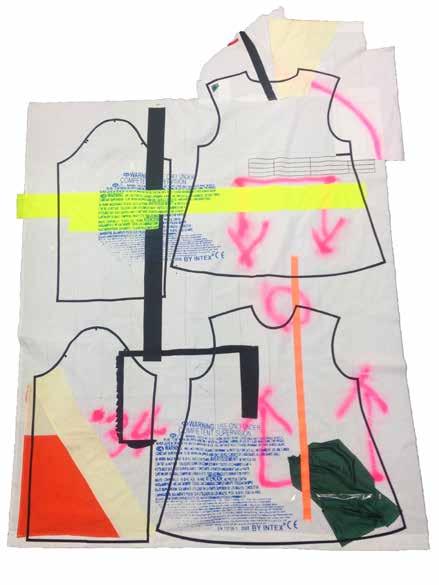
cal effects of these alterations to the body? I recognise a lot of myself in ‘Fanny&Stella’. When I was younger I dressed like a girl, I covered my face with my mother’s make-up and begged her to buy me dresses and female clothing. I also remember the shame I felt and the awkwardness of shopping in the girls’ section for clothing. But when I was alone in my room wearing my denim dress and red lipstick I felt very beautiful. This is an exploration in understanding why I, Fanny and Stella, felt the need to change our body. And how this inner feeling, relates to a certain image of ourselves.
laura.s.snijders@gmail.com https://www.instagram.com/ panthalau/ The Netherlands
Internship: BLESS
Project That’s not possible
My collection is about a new (nonexisting) fashion system that is based on change through place
instead of time. In this system people should change something about their clothes every time they enter a new social area during a walk through the city. The obsession with change is directly linked with the obsession of belonging and not standing out; every street requires another action in order to belong and blend in.
Thesis
The paradoxical importance of Fashion
I am interested in fashion itself and how a chaotic system like this can
function. I tried to find structure in the disorder of fashion. One of these structures is groups; a structured and organisational phenomenon like groups does not seem to fit in the irrationality of fashion. This thesis has given me a better understanding of myself and my love of examining systems that people have created to make their world more manageable.
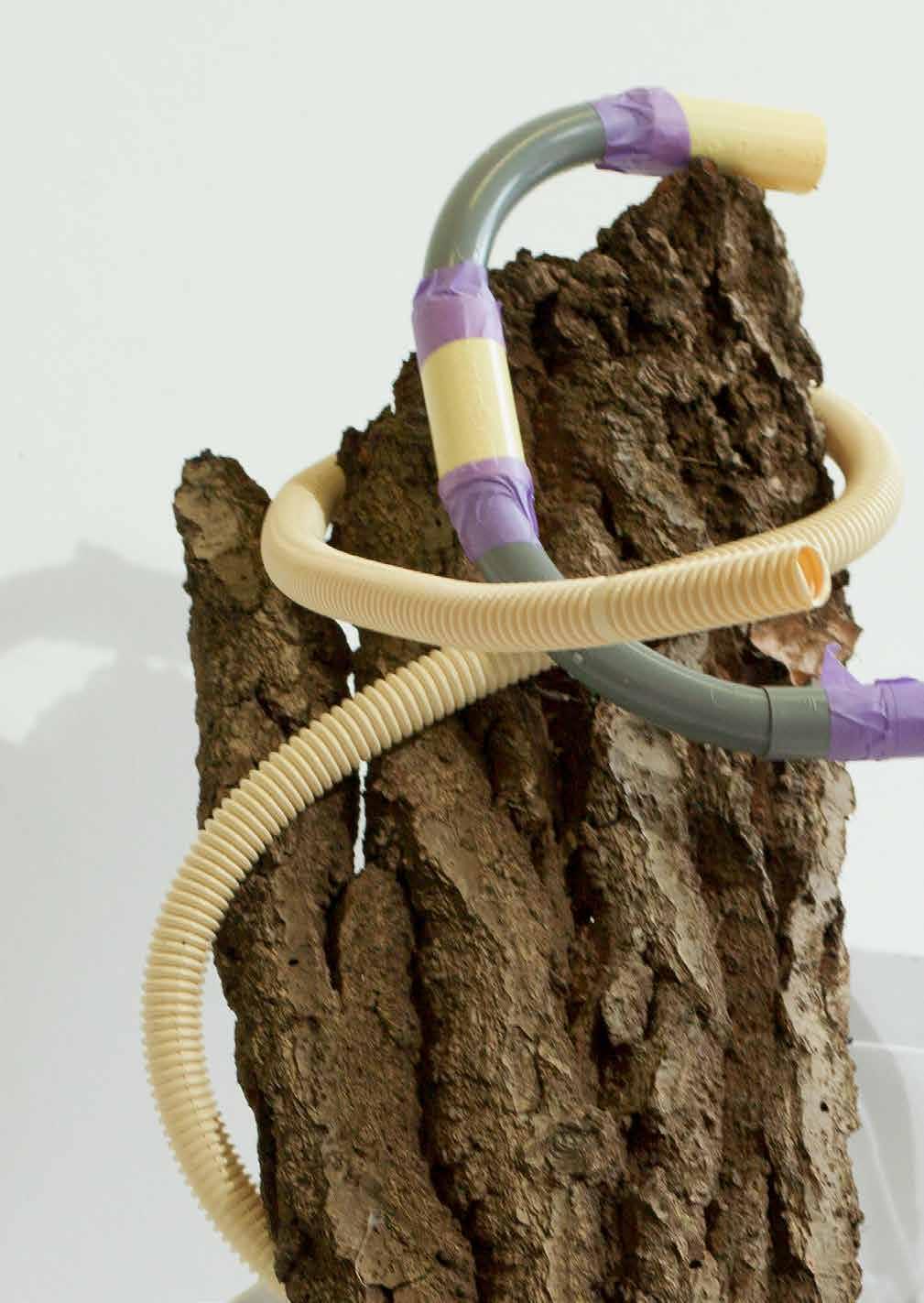

If there is a theme that connects the works of this year’s ArtScience Master, it must be communication. In some works, communication is the driving element: in Nele Brökelmann’s audience-participatory performance we are confronted with different attitudes towards each other that are looming in all of us. Maarten Brijker created different musical characters that converse with each other through the sound. Manuel Beltrán shows us new ways in how to organise ourselves in the social media world of Facebook, Twitter and the likes. And the selfbuilt instruments of Veerle Pennock present us with the question who is talking to whom: are the machines talking to each other or are they talking to us? Or maybe it is Veerle talking to them? The other two works show us conversations that have fallen silent. Koenraad de Groot presents a large, brittle installation in which we experience the action that has taken place: a world of past sounds of destruction. In Leandros Ntolas’ installation we are puzzled about what we actually see. Is it a communication device or is it just for eavesdropping? From the far past or the fare future? And from humans or aliens? In any case, all these new ArtScientists show confident work — we are sure we will hear much more from them in their future careers.


Manuel Beltrán
mbeltran@protonmail.com http://speculative.capital
Spain
Project Institute of Human ObsolescenceData Production Labour
In a job market in which humans are rapidly getting replaced by technology, the ‘Institute of Human Obsolescence’ investigates how the production of data is a form of invisible labour. The installation offers you the chance to reveal your production for the Big Data industry by scrolling through your
social media feed. A sensor records your hand movements as you scroll through your timeline, while emotion-recognition software registers your visceral response to what you see. The installation problematises the social inequalities established by companies like Facebook through their exploitation of our production of data. We propose a structural change in how to understand our position: instead of being the users, we see ourselves as workers.
The logic of the production of data performed by humans increasingly influences how power structures
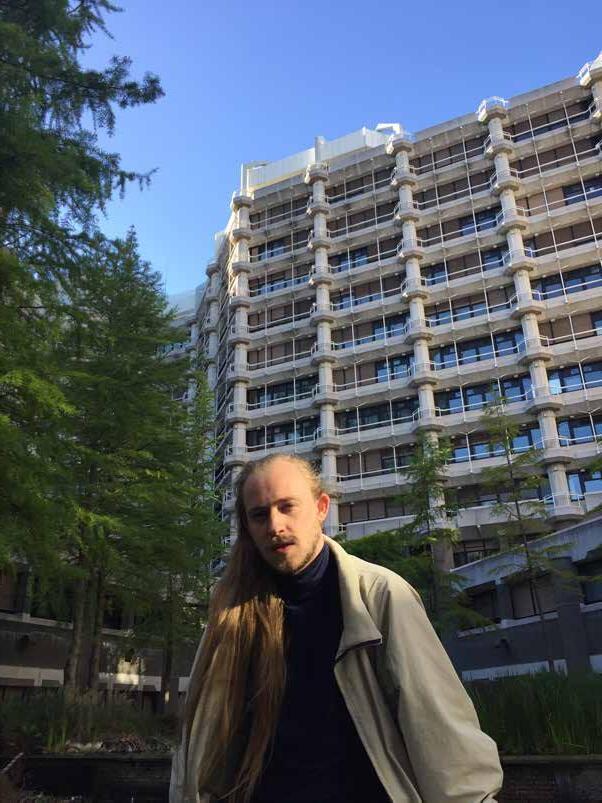
are constituted and relations are established within society. In a time in which technology automates labour at an exponential rate, data becomes a major driving force for progress and productivity. Emerging from new technological capabilities of producing, collecting and processing massive amounts of data, the notion of Big Data has been constituted: a new source of concentrated power for specific actors that perform massive data collection. Through the work of the ‘Institute of Human Obsolescence’ we analyse the implications and unbalance of the ownership of data, leading to explore a series of political propositions to regain its control.
maartenbrijker@gmail.com yoneta.xyz
The Netherlands
Project
In my dreams I stand upon a void
In my dreams I stand upon a void under a pink sky
As I whispered down, you growled back to me
Bubbles of light imploded behind my eyes
In conflict, the three of us search for common ground
Thesis
Maarten Brijker on creating a world of constructed identities
In the form of a self-interview, the artist Maarten Brijker walks through all the stages of his artistic process.
From initial theoretical frameworks like paranodal space and identity theory, to character creation and his own artworks. Brijker his work deals with the malleability of identity.
He implements the construction of identity as a method, and utilises constructed identities as a tool for creating art. The core assumption underlying his work, and this thesis, is the notion that identity equals
perception. As over the course of the conducted interview, a fictional character joins the conversation, the thesis’ topic starts to converge with its’ method and the thesis itself grows into the work it is reflecting on.


Nele Brökelmann
info@nelebrokelmann.com www.nelebrokelmann.com
Germany
Project It’s all there, just use it.
Set roles, departing from a set situation, exploring the possibilities in a set time and space. The agents create the dynamics through action and reaction, becoming part of the situation as they proceed within their roles. Alienated
in the beginning, they shape the situation and make it theirs in the end.
Thesis
P.S. I love you (Or how I learned to love power structures)
Humans intrinsically strive for continuity and coherence. Our realities are dynamic, they continuously change – as we receive, filter and imagine – to precede cognitive dissonance. The fear of meaningless voids forms the motor for the brain to create linear story-lines from experiences and information. I argue that the created linearity


makes it difficult to step out of line and change social structures. Our societies are build upon structures of meaning and an opposition of active and passive roles. Each chapter of the thesis investigates specific traits of a theatre piece, working towards an understanding of the systemic human needs that the structures of meaning answer to, and of the underlying power structure.
koen@kunrad.net
kunrad.net
The Netherlands
Project Streep #1
‘Streep #1’ is an iteration in my continues research on the physicalisation of computer music. For this work I draw from the concept of the ‘DAW’ (Digital Audio Workstation), the go-to tool for many electronic composers. Within the ‘DAW’, audio is represented by blocks that are
put onto a timeline. When played, a vertical line swipes trough the composition and one can anticipate on what is about to come. ‘Streep#1’ features paper as object, water as actuator and dripping as method. The appliance of water on paper is chosen to emphasise the transiency native to the physical realm.
Thesis
SISE
Sometimes I feel like we reside in a culture that has digital approaches as default. Over the last 70 years computer music has developed into a style that has it’s own language and aesthetics. How to take gained
knowledge from computer music to the physical realm? In my thesis I distill the concept of ‘Structural Immersive Sound Experience’ (SISE), a concept that applies computer music to the physical realm with a holistic intake on all the elements it embodies. A soundwork is not only made of sound. Post-digital may be a hype word to use but in the end, will turn out to be a facade. Digital realised ideas are starting to embed themselves into the physical. We can see this as part of a process of acceptance. An iteration between realms.


leandrosntolas@gmail.com www.leandrosntolas.com
Greece
Internship: Studio Zoro Feigl
Project Relic of Future Past
Is science the new dogma of our contemporary age? Has it taken up the role of religion in speaking the ‘truth’–by being the only source of ‘real’, ‘objective’ knowledge? If so,
what role do scientific instruments— summoned into this perpetual quest for answers—adopt?
A sculptural object, which borrows its design from contemporary mirror telescopes, reflecting questions.
Thesis On Perceptual Pluralism: how individuals exist in unique perceptual realities
The senses provide us with direct awareness of the world as it is. We open our eyes, and there it all is, detailed, continuous and gap free. Every sane person shares the same perceptual experience of being in
the world with everyone else.’ Or not?
Building upon contemporary theories of perception and cognition, I argue that people exist and function in unique perceptual realities. I analyse in what ways these realities differ, by explaining how perception is an active process–an action we do–and how knowledge affects perception. Furthermore I investigate the initial construction of these perceptual realities, their potential to shift and change during one’s lifetime, and finally, how art can act as a facilitator of such shifts.


veerle.pennock@gmail.com www.veerlepennock.nl
The Netherlands
Project HELLO WORLD!
The phrase ‘hello world!’ is a programming tradition when a program, machine, or code is first successfully run and interacts with its user(s). It can be seen as a sanity test, showing the machine is properly installed and.... ready to go! My homegrown
machine will make it’s first public performance, giving its audience an audiovisual palooza involving sound and light, balancing between technology and spirituality, ready to meet the world and share its thoughts and skills with you.
Thesis Between Man and Machine
When I open a machine, it exposes its insides and every machine has its own mechanisms, gears, and flow of electricity setting tasks into motion. I’ve always been fascinated by machines how they work and function
inside, what makes them tick. But as technology progresses, also the interaction between me and the apparatus changes. What is the relationship between man and machine, and what kind of relationship would we like to have with them? Where do we find rest in a world where machines dominate and roam within our daily lives? How are they slowly reading, interacting, coupling and merging with us on a physical and conscious level, helping us extend our minds far into the outskirts of the universe, and what does it mean to be human?
The Master Artistic Research is an intensive two-year programme, which attracts highly motivated artists from around the world—all linked by an interrogative and curiosity driven approach to making art. We believe in an education premised on experimentation, collaboration, and innovation, and understand that there are many ways to be an artist. This year, as every year, our students prove this in highly original and divergent realizations of their research projects.
Each student’s personal creative trajectory, and the production that defines this, has formed the heart of their study. They have been asked to open up these creative processes, their thoughts and actions, to discussion and feedback from their core tutors, department guests, and peer group. This exploration, and the supporting parts of the programme, have helped each of them become more knowledgeable and critically aware artists, with both a more complex and rigorous practice, and, importantly, a more complex understanding of the ways that art can intersect with the aesthetic, social, political, and historical fields.
This year students worked with curator Sara Giannini and designer Raoul Audouin in the production of their fabulous graduation exhibition and supporting publication. Over their studies, they also worked together to create exhibitions at Quartair Artist Run Space and Zaal 3, both in The Hague; the MARBAR in the school galleries; and a one-night-only show as the culmination of our residency at Hospitalfield House in Scotland.
Other events outside the academy were our trip to Documenta14 Athens; Playground Performance Art Festival in Museum M and Stuk, Leuven; and to GI international Art Festival in Glasgow.
Guests to the programme over the last two years were:
Andrius Arutiunian, Tina Bastajian,
Justin Bennett, Francesco Bernardelli, Henk Borgdoff, Manon Bovenkerk, Clare Butcher, Nora Chipaumire, Henry Coombes, Camilla Crosta, Jeremiah Day, Jonatan Habib Engqvist, Feminist Art Gallery, Peter Fengl, Moosje Goosen, Rahila Haque, Hamza Halloubi, Angela Jerardi, Marysia Lewandowska, Alex Martinis Roe, Wayne Modest, Antonis Pittas, Robert Pravda, Mary Redmond, Lisa Robertson, Benjamin Seror, Ben Schott, Vincent van Velsen, Puck Verkade, Danielle van Vree, and Thijs Witty.

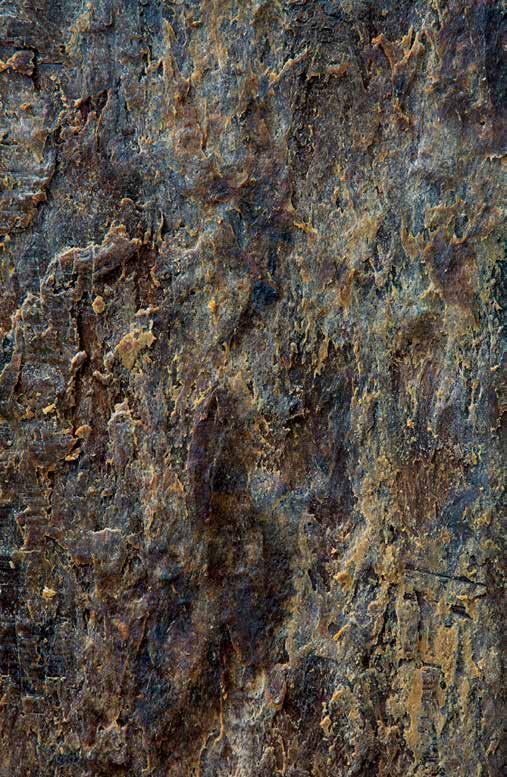
paulienbekker@gmail.com
http://www.paulienbekker.com
The Netherlands
Project Palímpsēstos
In a ‘Palimpsest’, the surface of costly perkament is being scraped to be written upon again- the original script being neglected, for it has no value anymore. Thinking of the human mind as an adaptable soap-like or wax-like matter (similar to Plato’s wax tablets), we can see that however it might be stretched, pulled or
pressed upon, a trace will remain.
I am interested to find the unseen (hi)story of atypical or undervalued tangible matter, such as soap and fibre. By physical intervention, I strive to activate this matter, until it starts to reveal itself. In my installation each body of soap represents the faint remnants of the past of the matter. The unseen, that what cannot be written, could be unravelled.
My practice involves atypical or undervalued tangible matter.
Throughout my thesis I kept my main research question in mind: how is, or


how might, time be captured and represented through matter?
I examined the remnants of cave paintings, the art of memory and the montage and the sculpting of time within history, art and matter.
I weaved echoes of the ancient Greek, The Middle Ages with the present and dived into mnenomic devices, various matter and textures.
I analysed the visualisation of memory of matter and time through an exploration of materials such as fibre and soap and examined the visual potential of a gap in time, following traces of the unseen, to reveal the hidden or the latent potential of matter.
hello@gretafacchinato.com gretafacchinato.com
Italy / Luxembourg
Project FOAM - The Listening Body
A one by one performance where the costume of the performer is reconsidered as a hidden stage. The materials involved are memory foam and nude lycra textile: materials which are commonly used to isolate and to filter what is supposedly
wanted to be revealed. The space of the costume-stage invites the audience and the performer to come closer, to reach for a hug, to meet, even though still distant. To snuggle and to penetrate, to sink in or to stretch towards the inside, towards the outside. A body which inhabits an another body. A moment of isolation. An intrusion in a corporeal cavity.
‘We are all ears’ is a word pun that challenges the original idiom ‘I am all ears’. It incorporates the notion
of the verb ‘to be’ as an interest to analyse aspects of personality, entity and awareness related to the 21th century Western society within the experience of the ears. Aspects of the self and of the community are highlighted through an extensive study of the technological device of the headphones. ‘We are all ears’ suggests a corporal and bodily attention too: the notion of space is related to the body as the actual origin of sound. In this research listening is first of all conceived as an experience related to an inner sensitivity, to intimacy and hence to vulnerability.

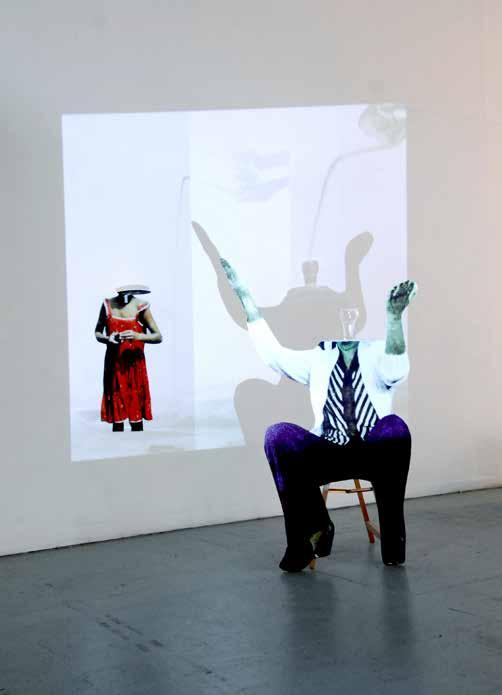

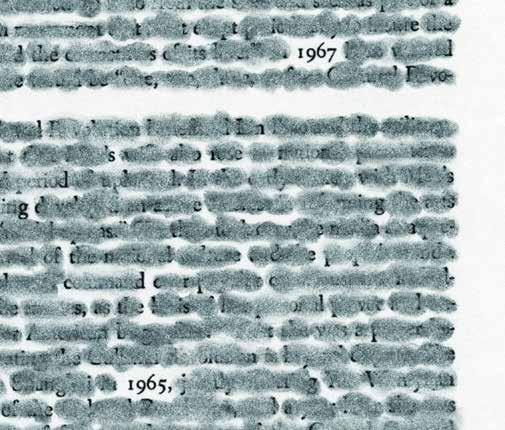 Xaviera Andrea Michelle Hardjopawiro
Xaviera Andrea Michelle Hardjopawiro
xamhardjopawiro@gmail.com
http://www.xavierahardjopawiro.com
The Netherlands
Project A state of affairs IV
The unfamiliar grounds are of great importance in my artistic practice. I tend to seek in-between spaces where interactions take place. I question the flat image in contrast with the three-dimensionality of
things, extending the collage toward an installation, where archival images of the body and found footage are essential. With my work I would like to revisit the misconceptions of value, nature and truth.
Thesis
The place of interaction
How do we relate to the world?
How do you relate to the world?
It is important for me to stand still on the notions of the mental and physical phenomena, because I see it as a way of clarifying one’s relations to the world or better yet
finding a place of belonging, which ultimately defines who we are as human beings. The feeling of displacement is also of great importance in this understanding. Karin Barad also mentioned, that perhaps it takes the confrontation of the inhumanness within us, for us to realise our lack of compassion and thus making us care, feel and respond. Ultimately this understanding is a very personal one, as Terence McKenna stated: “Just deal with the raw data and trust yourself”.
hsuwailun11@gmail.com cargocollective.com/lun Hong Kong
Project The Rise of Modern China (2018)
The title of the work is derived from a scholarly historical book of the same name–The Rise of Modern China, which was first published by Oxford University Press in the US in 1970. Originally written in English, it was translated and published in Traditional Chinese in Hong Kong in 2001, and in Simplified Chinese in
China in 2008 respectively. In China’s edition, 11 chapters, over 200 pages were erased.
The work appropriates and republishes all the removed pages from the original book. Most of the content were unidentified, except the number of year (Gregorian calendar). It is not only addressing the (wellknown) censorship in China, but also in attempt to think about the notion of historiography, and how national histories were written.
Thesis
National Sonic Territory
The thesis revolves from the politics of sound and its affirmative qualities
to the masses; how could it summon a community, and formulate a sense of solidarity? By the use of musical sound and non-musical sound, how could a community reject the others, to draw its political and physical territory? How does a nation-state employ sound to defend and how one use it to attack?
Sometimes strong cultural sounds are appropriated by a modern nation, just to deliver a sense of futility–to resist is futile. Birds sing to make noise as a tool for marking territorial boundaries. Do we make noise to give the same statement?


minsookkang.com@gmail.com
www.minsookkang.com
South Korea
“Three Stories in Three Actions” is a storytelling performance. Action1.
“The Unknown Person’s Funeral” is about attending loner’s funeral as an artistic gesture. Action2. “The (In) Visible Vintage Shop” is a conversation piece with the owner of the vintage shop on a variety of unspecific topics. Action 3. “The Christmas
Tree Project” is a long journey to save Christmas trees that have been discarded on the streets after Christmas holiday. By instigating simple gestures, I attempt to reveal structures that might underpin the everyday reality of experience. These micropolitical actions can interweave and juxtapose the personal scale of experience and the historical and political scale of collective being as a form of resistance.
This research focuses on a specific space which is unknown, abandoned, fragile, hidden, unseen,
invisible, missing, forgotten, neglected and/or unloved so-called “other/poetic space.” By attempting to rescue, recover and reclaim the value of “other/poetic space,” I suggest that we strive for opacity – the right to opacity – and to consider how to be with others in ways that are alternative, sustainable and radical. It can be viewed as the most powerful and authentic way of living not to lose their identity and critical position. This is not about quantity, but about quality. That is what we really want today.
ellmoore8@gmail.com
Ireland
Project To decorate. To be decorated. Radical botanicals, wild weeds grow through cracks of controlled concrete aesthetics, through the man-

Thesis
Journeying, Journaling and Islands. In what way does the journey, effect artists models of production?
ufactured urban islands, present in streams of automated travel, where the journey and journal become intertwined, histories of botanical scientific publication, hand drawn intimacy transferred to the mass produced encyclopedic, a domestic science of social acceptability, self research, self resilience, pioneering female botanists, to name the unnamed with torn threshold footings, to grow from below and blossom, to decorate and be decorated, to thrive through the cracks of control as radical botanicals. A series of blockcut prints.

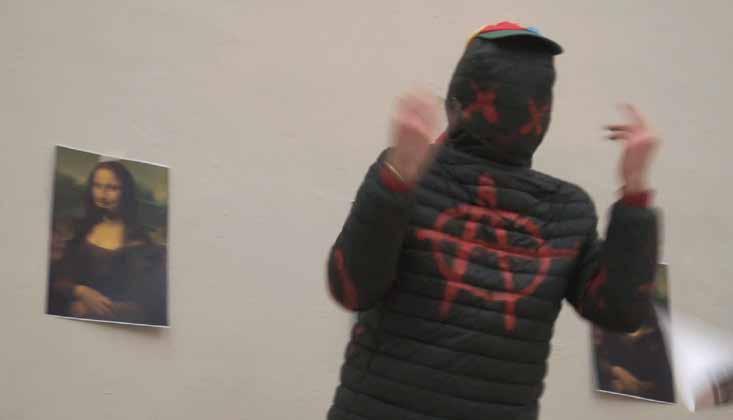 Valentino Russo
Valentino Russo
valeruxo@gmail.com
http://valentinorusso.altervista.org/
Italy
Project Minutes to Midnight
‘Minutes to Midnight’ tells the story of the Grim Reaper’s existential crisis: he has been asked to teminate
mankind, and he faces the abyss of unemployment. How can Death survive doomsday? Rather than extinction, the solution is eternal sleep. Death would still exist in a new world of never-ending dreams.
Thesis
The Sweet Escape
‘The Sweet Escape’ is a journey through the urge to systematise, to define, to inscribe events in
structures and to form meaningful narratives in order to make sense of existence; but at the same time to escape, to rupture, to make room for nonsense. These two poles are expressions of different, but indeed complementary, human conditions: the need for solid answers and silly questions, for silly answers and solid questions.
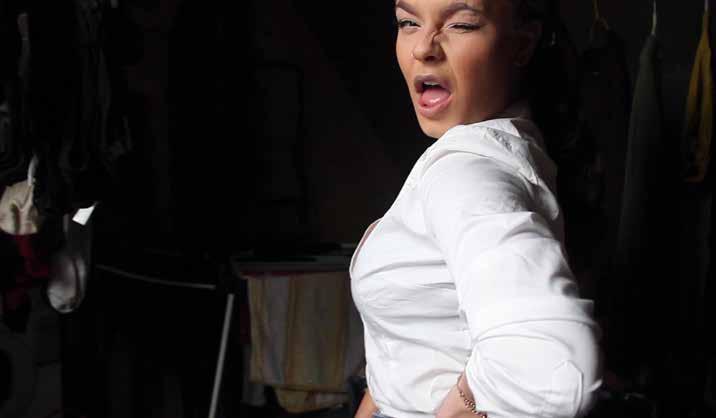

rsagalvez@gmail.com
Spain
Project Continuum Blower
My interest in making this work has been an intent of understanding, by the process of filmmaking, certain problematics that are linked to a specific event. By turning them into different directions, what probably
had started as something condemnatory, turns to be digested in a more processed way. The idea is not to illustrate a story but actually to transmit affect by reenactment. It encompasses an emotional stimuli (accomplished through/by the cinema apparatus) that goes beyond mimic rules.
The film here is almost like an adaptive process which could be
compared to any live experience. Perhaps the meaning of the word continuum (a continuous sequence in which adjacent elements are not perceptibly different from each other, but the extremes are quite distinct) helps us to understand this sort of time movement towards… p.15

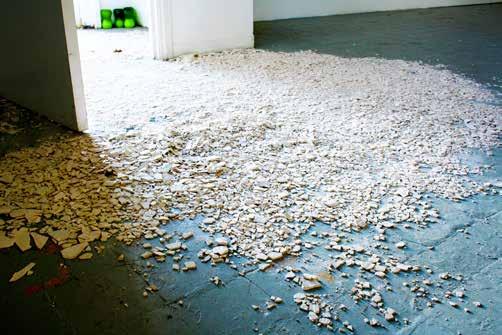 Cristiana Vignatelli Bruni
Cristiana Vignatelli Bruni
cristianavignatelli@gmail.com www.cristianavignatellibruni.com
Italy
Project The Mut(at)ing Form
In a resonating chamber layers of voices and noises underline the tension between materiality and the evanescence of sound. The con-
struction of an aural spatiality starts from the cracks of crude material. The sound they produce triggers a reverberation, which is creation of a participated zone, unification between bodies and people.
Thesis
The Mut(at)ing Form. Movements between Matter, Sound and Space
Raw matter has as intrinsic behavior the capacity to evolve and to create alloys. But while in a neoliberal society matter has become associated
with commodification, defined by its being a product, sound still has a great degree of freedom. What is discussed here is the chance of a transformation from materiality to sound. This is possible because of a rupture, a crack, a wound into given structures, be it the neoliberal culture, the state, the economy and the current social systems in general.
Industry, a manmade vast and complex system of consumer wishes, product design and engineering, assembly lines, human and material resources, transportation, business models, advertising campaigns and waist. A system that we designed, expanded and intensified after spinning looms where placed together in the first cotton mill in Britain kicking off the industrial revolution. By now the industry is causing more problems than solving them, chocking the planet with products and pollution instead of contributing to the well-being of its inhabitants.
The ecological impact of our behaviour can no longer be denied, and economic systems of endless growth are being questioned. In our opinion, it’s no longer the playing field of extremists to create change in the system, we all need to radically rebalance our relationship with the planet and its inhabitants. We believe that by questioning and redesigning the conventions in the industrial system, with their products, industrial designers can contribute to a more sustainable, meaningful and culturally diverse world.
At the MID we are fostering disruptive approaches, researching alternative models for production and business, exploring new and existing materials and manufacturing techniques. Therefore, research plays a crucial role at the MID. Design research dealing with material culture: the connection of humans to material objects and the role these objects and their manufacturing play socially, culturally, economically and ecologically. Consequentially this design research is focused on deducting and construing meaning and is complementary to scientific research in which obtaining knowledge is the primary goal. Within the programme we research meaning within the industrial field. Scientific research is applied within projects and complemented with design research that reflects on the context of culture, history, identity and society.
With pride we present our first Master Industrial Design graduate, Tessa Petrusa and her project Tactile Responses: 4D printed surfaces. Petrusa fabricated programmable 3D printed textiles that shape into 3D objects. Her objective is to develop a new approach between humans and industrially manufactured products while addressing our probably most human sense: touch. Tessa has a background in anthropology and during her studies at the Industrial Design programme worked on smell as a means of communication, electronically responsive textile, and human ashes as a manufacturing material. Her graduation project is an accumulation of her interest for the sensorial human in relation to products. With Tactile Responses: 4D printed surfaces she presents a radical new direction in the appearance and manufacturing of industrial products and the way we interact and bond with it.
Maaike Roozenburg Head of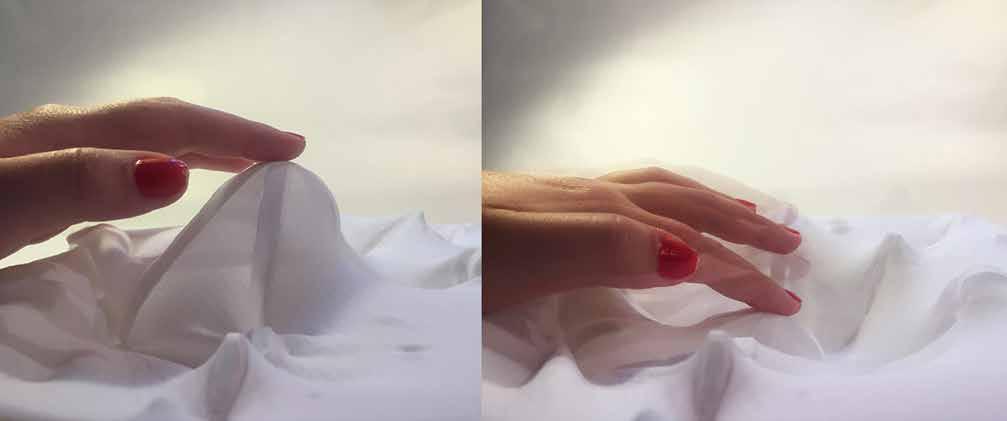
 Tessa Petrusa
Tessa Petrusa
tessa.petrusa@gmail.com
The Netherlands
Project RESPONSIVE TACTILITY: 4D printed skins
As technology is entering the most intimate parts of our lives, it becomes more relevant to reconsider the way it looks and feels. The surfaces of technological applications can be softer, more responsive, and more organic.
We often need to physically interact with technology. Why not make that experience an exciting sensory one?
‘Responsive Tactility: 4D Printed
Skins’ are surfaces consisting of integrally printed patterns of ‘skeletons’, ‘muscles’, and ‘joints’ on stretched fabric. When the tension of the fabric is removed after printing, the surface folds itself into shape: 4D printing. The form and details of the surfaces change when touched, giving a soft tactile response.
Thesis CHANGING PERSPECTIVES: A vision on the de-objectification of objects through manipulated attachment
The goal of the design research paper was to find starting points to stimulate the attachment people
feel towards their products. The research focussed mainly on finding materials that give a response to human touch. If products respond like organism do, will people grow more fond of their products? Maybe even creating attachments like they would do with their houseplants or pets…
Exploring corrupted space, as we did this year at INSIDE, suggests that there can be any space that is not corrupted. One of the insights that resulted from our explorations through traveling to The Balkans, the Netherlands and Germany, inviting artists and architects to talk and the Studios and workshops we organised, was, that there is no such thing as uncorrupted space. At least in public space, designed space does not necessarily function the way the initiators intended. Due to crisis and other unexpected changes in the use or users of the specific space, or the circumstances around it, or just changing habits and trends, spaces often lose their original integrity and get corrupted. Even places that seem to smoothly function as intended, like shopping malls or airport terminals, can only uphold that image through selecting and conditioning users and excluding the ones that do not fit the ideal picture. Well considered in most of the built environment elements of corruptness can be determined.
At INSIDE we do not denounce this situation or initiate a Don Quichote battle against that. At INSIDE we take this ‘dirty reality’ of the built environment as a point of departure for designing spatial change. The basic assumption is that especially in adapting the built environment to its real circumstances a society can show it’s unique strength and creativity. Spatial designers play a crucial role in developing that strength and in implementing it in the built environment. This year INSIDE, the Master Interior Architecture proudly presents 12 graduating students.
Janneke Derksen - Farah Zamri - Shinyoung Kang - Cam Liu - Goda Verikaite - Yu-Chin Ku - Zara Bennett - Jo Basset - Jaja Puapoomcharoen - Jinaa Baek - Dylana Kim - Eva Gonzalez, all started their graduation projects from the ‘real world’ and its conditions. Their commitment resulted in a wide variety of projects reconsidering the built environment on many scales. From the intimacy of the Korean family home, where the immense pressure that rests on Korean young adults can be changed, to the unexpected utopian qualities
of ‘Soviet style’ housing areas in Lithuania. And from the social, cultural and environmental role of Aruban beach shacks to the challenge of repositioning the soon to be unemployed highway gas stations in the Netherlands. We hope you will enjoy this wealth of proposals for spatial change that this year’s graduating students present and are especially grateful to all our tutors, advisors, lecturers and facilitators that supported its creation.
Hans Venhuizen Head of Department


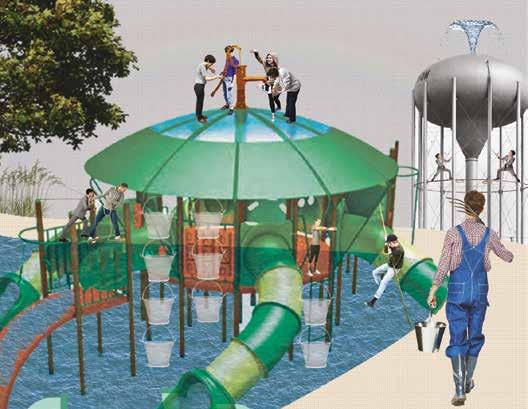 Jinaa Baek
Jinaa Baek
chez.jinaa@gmail.com
South Korea
Project STATEMENT FURNITURE
“Create conversation pieces with balancing, playful, unforced characters around family daily activities to improve the family (with one child in high school) relationships in Korea.”
I propose conversation pieces, which can be placed in Korean Housing to improve healthy conversation amongst family members.
The design is based on the behavior/ attitude of parenting and it is developed with elements of furniture applying physical actions during conversation. There are three furniture(s) proposals: dining table for showing a different balance of hierarchy, sofa for drawing an intimacy without any force, and family bench for playful talk but no eye contact/ no pressure during the conversation.
Thesis
My research has started from the stigma problem of being mentally ill in South Korea. It is especially
harsher for the youth in high school because they have difficulty to control their emotion with adolescences trials and hectic schedule of studying. My aim for this thesis is to open up the subject of youth mental health, and highlight its importance as a valuable social issue, and bring the attention of spatial qualities affecting it in the realm of architecture. The purpose of this study is to find the complementary idea of the psychological elements in both the aesthetic expression of architectural space and programme inside of the space in the sense of healing.
bassetjoe@live.com
Lebanon
Project Community: An outcome of human necessity
What if a community is founded around a water infrastructure that not only serves their physical needs, but also provides the context and reason for social interaction and cohesion? The project is based upon an existing water basin at Tempelhof, Berlin. By the time rain hits our cities, the water is polluted by our roads, cars, and other pollutants.
In collaboration with nature, people of this community work together to purify the water. Through cleaning a wasted resource, water transforms from necessity in the community into different forms of social spaces involving people in the process of natural filtration. Water is used, celebrated, and valued by the community in various forms that changes their lifestyles, routines, and rituals.
Thesis
Community: An outcome of human necessity Human physical necessities and infrastructures have long been a major part of cities and communities. Fountains, roman baths, communal
ovens and other examples all started with basic human needs (drinking, washing, bathing, cooking) and transformed into social spaces where people gathered everyday not only to serve their physical needs, but also socialize. The research then investigates the effect of engagement around infrastructures which creates a reason for interaction among people. The next chapters discuss the rituals around such spaces that create value and meaning to people. From history to current social problems, the thesis takes an overview on issues where design could play a role in bringing back lost experiences of togetherness.




zara_bennett@hotmail.co.nz
the lives of long forgotten textiles of the home
My project sets out to rediscover the lives of our often forgotten and largely neglected collections of textiles of home. The home is a place we all hold so dearly to us. Like a cocoon for the soul, we latch onto aspects of the home for comfort. And delving further into the home,
the kitchen is a space at the heart. A space for togetherness that creates a sense of community. By emphasising on reuse and exploring the personal connotations we have to textile, my aim is to use the idea of the kitchen as a space for discovering the meaning behind creating a soulful home.
If textile is the soul of the home, then what would it mean if the entire home was turned into textile?
More than just a dressing, textiles are the soul of the home. The home is a place we hold dearly to us. Like
a cocoon for the soul, we latch onto aspects of the home for comfort. And it is here, within this reassurance and comfort that textiles hold, that I place my research. With a focus on reusing textiles, rather than sourcing new, I ask how something deemed broken, useless, or leftover can be added, once again, to the pile of keepers by discovering the meaning of value. I examine how through the art of collecting, a new layer of life is given to an object or space, preserving the history it already held. It is from here that I delve into one last question; what will make us want what we already have?
janneke_derksen@hotmail.com https://nopurposecollective.wixsite. com/justforourselves
The Netherlands
Project
‘Where to go from here?’ ‘Where to go from here?’ is a 15 yearlong strategic design and research project that will explore the ‘verzorgingsplaats’ by using interventions as a way to provoke change. I appreciate these places in that they are democratic/inclusive, super personal and super anonymous at the same time,where time does not really
seem to exist. They are spaces we do not live in, but we occupy them for a set time and nearly only while we are ‘on the move’. The proposals take advantage of the possibilities generated by the development around the mobility sector, the qualities and the diversity of uses. They range from small additions and alterations to interventions that prompt or force long-term strategic change.*(rest places, service and gas stations along the highway)
Thesis
Learning from the highway
‘Learning from the highway’ shows my personal journey on the highway. It is not only a road but also includes
places that are directly connected to it and‚ even only exist because of it: ‘verzorgingsplaatsen’. They are democratic/inclusive, super personal and super anonymous. I have a keen fascination for these places, in dealing with mobility, with fuel, sales/retails and the related laws and regulations. In combination with, I feel a deep need to speculate on the future for these places. Learning from the highway looks at how the highway system with ‘verzorgingsplaatsen’ developed in the Netherlands. How have they been used in the past and how are they used today? The visual language they have developed, the general protocol of gas stations, i.e. how to use them.
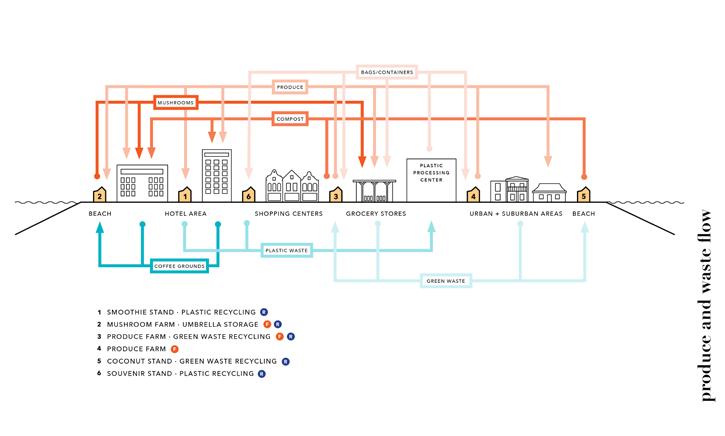
 Eva González de Yanes
Eva González de Yanes
egdsgnr@gmail.com
Venezuela
Project Cunucu Shacks. Here, There, Everywhere
By combining the iconic shape of the ‘cunucu’ house and the versatility of shacks, I propose a network of structures that marries culture and commerce. The programming is based on core values in response to key social issues found on my research. In addition to cultural loss, other values such as sustainability,
resilience, regenerative design, and community participation are applied. The network calls for an active participation of Aruban society in order for it to function as intended. I also encourage the flow of food, waste material, and energy produced within. The system is designed to adjust, adapt and change, almost creating in a way, an island-wide laboratory of sustainable practices.
For the last 70 years, tourism activities have taken over the economy,


making the small nation one of the most tourism dependent economies in the world. The infrastructure that supports such industry is focused in one area, and caters mostly to the American market. And while beneficial to Aruban society, it has also created an unintended consequence: cultural loss.
Aruban culture lies mostly in intangible aspects, such as their language, Papiamento, and traditions. Nevertheless, the ‘cunucu’ house stands as tangible trait from colonial times.
The structure serves as a base to create a new typology of shacks in response to the impact of the tourism industry in the island.
shinyoung.kk@gmail.com South Korea
Project
An alternative mutual-religious space in Korea through
‘A Sacred-Spatial-Experience’
I propose an alternative mutualreligious space in Korea to raise an inter-faith dialogue through ‘A Sacred-Spatial-Experience’; which includes three layers (Symbolic Identifiers, Immersive Space, and Sensory Experience). This is to bring harmony from the three major religions (Protestant, Buddhist, and
Catholic) and, moreover, from any religious believers or even non-believers. Mainly I have achieved unity by a center altar (lighting fixture) and one the continuous floor and roof. According to where an individual puts him/herself, the religious believer (or non-believer) can follow their own belief and the ritual practice in one space. This mutualreligious space designs for everyone through the united spatial platform from specific religions
Thesis
A Sacred-Spatial-Experience
Throug my research, I tried to analyse several aspects of spatialexperience by observing venues
of three dominant religions in Korea. I used the typology methodology to define elements that enhance a spiritual experience and concluded by defining a sacred-spatial-experience in three layers: symbolic identifiers, immersive space, and sensory experience. It means that it would create ‘A Sacred-Spatial-Experience’ if the spatial experience has these elements in the framework. It is hard to define spatial experiences explicitly as each experience is unique for each person. At least as a communication tool, I hope it raises the spatial value of sacredexperience and provides harmonious spiritual experience among different believers.
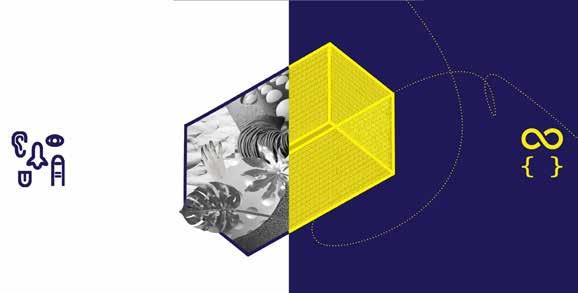

dylanakim@gmail.com
South Korea
Project
House of the future : A balance of digital and analog Digitalisation continues to reshape realms of everyday life and alter our physical environments, including our homes. It is important to examine how we adapt our living spaces to these shifts. Eunhye Dylana Kim’s graduation project is to investigate the role our homes play in our lives in the future.
What are we gaining and losing due to the digitalisation?
She tested two very different houses of the future: a digital and an analog apartment. This mirrors her own interests in having both convenient and sensory lifestyles. What if the idealistic realms are combined so you can obtain a pleasure of sensory elements (analog) and digital convenience? Furthermore, she studied how to socialise and interact with people in domestic realm in the future.
Thesis Retrieving Lost Intimacy
The technological developments that have most contributed to the rise of interconnectivity have at the same time bolstered a sense of alienation between people. Our

emotional interactions with other humans have been eroded as a direct result, and our appreciation for human interaction may also have suffered. Eunhye Dylana Kim investigated case studies that are designed to trigger people to interact and build more intimate relations within their built environments. Her dual intention is to raise awareness and to design dwelling places that realistically suit present urban conditions, especially for single-person households, encouraging them to discover or rediscover the vital importance of face-to-face, genuine human interactions.
south126@hotmail.com
Taiwan
Project Zhongxin Village
“Zhongxin Village” is a project based on heritage preservation and the redevelopment of living conditions and opportunities within Taiwanese communities. The aim is to preserve the site of the former Zhongxin Marketplace and focus on revitalising its out-due, yet charming spatial

character, into a living typology that is necessary yet lacking within the context of the modern city. It creates and provides a rare option of living standard within a society that promotes rapid urbanism where fancy high-rises and luxurious, well-polished apartments are saw to be the ideal way of living in modern times.
Thesis Preservation
The draughty corridor led into a strange, dark space. The atmosphere was eccentric. Cold air
seeped through the gray concrete walls of the two story buildings that lured over us. Time had relentlessly eaten into the metal wave-shaped ceiling, giving holes and sunshine the chance to sneak in. What a miracle, I thought. How it sat so untouched in the center of a bustling city. A rush of curiosity flooded my mind of the life and stories that once took place here. Who were these people? What did they do? Where are they now? What will become of this place?
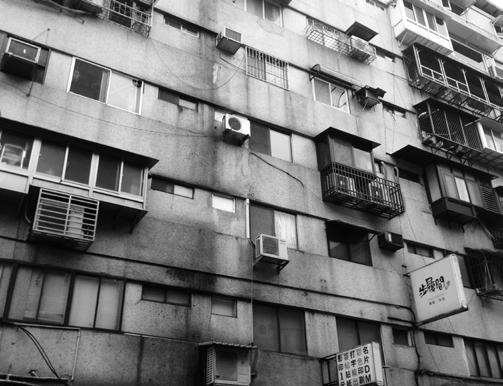
gen.zales@gmail.com
Taiwan
Project Expansion – Rethinking the expansion phenomenon as the second layer of the city The project explores the “Expansion” phenomena in Taiwan, where people are used to built with a technique of a temporary structure, which usually last for a longer time. These informal structures are spread all over the city and host big parts of its activities, for instance markets, shops or even temples. This spontaneous way
of creating new spaces is deeply rooted in people’s mentality, culture and the city.
In my project I focus on re-imagining this phenomenon as an alternative solution for the house to adapt to the change of living pattern. The direct way of to construct the extra space by the user themselves make the building as the reflection of the user.
Thesis
1001 Expansions of Taipei
Taipei is a city full of informal selfbuild spaces. People are used to apply light materials to build light weight structures to expand their space. These kind of self-build


structures are mainly attached to existing houses for domestic purpose, and some of them occupy public space, such as pedestrian paths or streets in the form of markets. In my research I investigate around the idea of people starting building extra space for their living needs, as a reaction to the given architecture. Architects usually, in a representative way design or indicate how users should live according to their design. However the users take over as individuals and appropriate it with their own lifestyle and way of living.
p.pichayaa@gmail.com
http://ppichayaa.wix.com/mepichaya Thailand
Project Experiencing the Transient
Architects have a tendency to create a fixed thing. Space is built by substance which makes it seem static. In my mind, architecture always evolves every single time the environment hits its skin. So why not treat it as a living organism? In the modern age, we have the technology to cheat these natural changes with specially improved materials.
Of course, this solves material problems in some certain aspects, but on the other hand, it deprives the understanding of the nature of things from the inspector. The change by nature should better be appreciated rather than avoided as it is inescapable in every way. I want to propose an inhabitance which allows the user to see each transient moment that happens through the reality of time.
Thesis
Live in the Moment – Discovering a conversation within your surrounding
Such unpredictability can only be seen in nature which is also why I enjoy observing it very much,
uncontrollable and dynamic in its own rights. There is a particularly magical moment which nature influences a building and temporarily transforms its characteristics which I would refer to as a ‘dialogue’, signifying the conversation my surroundings and I are having. In this senses, I do not see architecture as a fixed image, it could change through time with a certain material. Therefore, this research paper would be examining the question of whether changing characteristics of materials can dictate or define a design. Finding new potential in material and use it as methodology to influence an interaction between people and place is my aim.
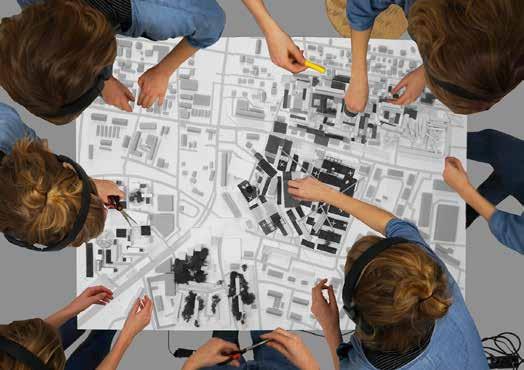

godaverikaite@yahoo.com
https://nopurposecollective.wixsite. com/justforourselves
Lithuania
Project Recycling Utopia: in progress Imagine. Lithuania after x year. Massive investments into biotechnologies lead the country to the new system with a mysterious name: ‘FALC’ (fully automated luxury communism).
If Constant and other utopians from 70’s were dreaming about society freed by automation – here it is. The ludic society which can afford living in the spontaneous luxury.
What is luxury for you? Villa Savoy?
A single family house? A vagabond life disconnected from any particular place? Is time the ultimate luxury or should it be guaranteed as a basic income for everyone?
The project suggests a series of speculative scenarios how in future the socialist districts as structurally the most pure and adaptable areas can turn into the experimental playgrounds of ideas and theories.
Thesis
How to Recycle Utopia
The new system, utopia, ideology always replaces or recycles the previous one. None of them is perfect but every of them promises something new.
The research investigates the
phenomena of socialist mass housing in Lithuania as a physical outcome of the utopian promise to ‘provide every Soviet family with its own apartment’. Lithuania experienced a big change from the socialist system to democracy and capitalism. However Soviet mass-housing neighbourhoods remained the same as they were built sixty years ago. What is the next step in the story of these prefab house-machines (as ‘Le Corbusier’ would call them)..?
The thesis questions and speculates how we see past utopias and ideas from today’s perspective and what we can take from them into the future.
faz-farah@windowslive.com Malaysia
Project Rojak living – revitalizing the process of homemaking ‘Rojak’ a term described for the diversity of Malaysian people. Caught between mass housing development and unique individual form of life, traditions, multi-cultural community, and a home that is no longer affordable. The aim of this project is to enhance the practice of homemaking by the local dwellers, in a more affordable manner and to


introduce flexibility for the middleclass group in Malaysia. Rojak living community is a place where diversity is celebrated, moving away from a monotonous modern housing that was inadequate for the local from the start.
Thesis
Home (In The) Making
I begin my thesis research interest with the topic of housing, particularly in the context of Malaysia.
The current state of housing in Malaysia is undergoing a crisis of unaffordable housing, mainly affecting the middle-class group. My research brought me to terrace housing developments, mainly
occupied by the middle-class. Terrace houses in Malaysia are represented as a neutral shell by the housing developers, the houses are designed with the same form and space, and later modified by the occupant’s once they move in to meet their individual need and preference. Why is there a need to renovate a brand new house? Is there an opportunity that includes the socio-cultural considerations of the locals within the housing schemes in Malaysia?
It takes far less time to read a text than to write and edit it. This asymmetry of effort also exists in the basis of those texts: the symbols on the page. As readers we need only a basic understanding of letterforms, but in order to design letterforms we must learn to look at shapes, patterns and texture in an analytical way.
Students at the master TypeMedia study contrast, weight, rhythm, proportion and spacing: in short, every aspect of the process of making type. The course is studio-based with an emphasis on drawing. Primary sources and original material are examined at museums and archives including: Meermanno, Plantijn-Moretus, Koninklijke Bibliotheek and UvA Bijzondere Collecties. We encourage tinkering with all the tools: physical writing implements as well as digital and even algorithmic ones. Students learn how the creative process and possible outcomes are influenced by the tools they use and make.
Our class of 2018 came from China, Croatia, Denmark, France, Germany, India, Mexico, Korea, Poland, Spain and the United States. A shared curiosity about type brought them to The Hague, and together they faced the reality of a demanding year-long program. There were workshops in Arabic letterforms by Kristyan Sarkis, Cyrillic letterforms by Ilya Ruderman, and deep font technology by Frank Grießhammer; all TypeMedia alumni.
In March, TypeMedia hosted the 2018 Robothon conference with speakers and attendees from all over the world. At the same time the students put up an amazing exhibition for Gerrit Noordzijprijs laureate Cyrus Highsmith, who offered us a peek into his sketchbooks and approach to design. There was a trip to Berlin to meet the alumni community there and to attend the TypoLabs conference.
Feedback on projects and assignments came from lecturers Erik van Blokland, Paul van der Laan, Peter Verheul, Petr van Blokland, Just van
Rossum, Peter Biľak and Fred Smeijers. Guest designer talks and critiques were held with Gerard Unger and Paul Barnes. Letter carving classes were given by Françoise Berserik, and culturally important sites and exhibitions were visited with Jan Willem Stas. This year Laura Meseguer, professor of Typography and Type Design at Eina and Elisava Design Schools and TypeMedia 2004 alumna, was our external examiner. Coordinator Marja van der Burgh kept it all running smoothly.
Type design is a cornerstone of culture, as well as a core element of technological development. We do our best to prepare our students to design for both worlds.


Rafał Józef Buchner
rafal.buchner@gmail.com
Poland
Project Gamer
‘Gamer ‘ is a typeface that originated from my childhood nostalgia. The main aim of the project is to make letterforms that work both on low and high-resolution screens and therefore the core shapes of the typeface are drawn on top of the pixelated letters. The wider than usual shapes are inspired by squarish letterforms
that commonly appear in sci-fi movies (for example Eurostile, which has been widely used in the movie industry as a “futuristic” typeface).
Gamer includes a range of styles that vary in width, weight, and slant.
The Regular style is designed to work in longer text, while others are display styles for headlines. Each style has a slanted version, which contains alternate glyphs to give more “cursive” feeling.
buljubasic0zrinka@gmail.com
Croatia
Project Dalma
‘Dalma’ is a typeface for text and display purposes created as a result of reinterpretation of contradictory movements of the sea such as static and dynamic, sturdy and delicate, elegant and raw, wild and calm. The text version, which comes in light, regular and bold weights with matching italics, is more static and reduced to a minimum in its expres-
sivness, while the display version has a variety of textures and comes in two main styles: wide black and hairline. ‘Dalma Display Black’, whose symbiotic companion is ‘Dalma hairline’, has an inline and a swash version, inspired by calligraphic italics and maintaining its elegance and vividness. Swashes accompany the inlines on 3 levelslow, medium and wild.


mynameandthen@gmail.com www.instagram.com/typefive.xyz/ Denmark / Ireland
Project Hexar Text
During my time at TypeMedia I have gained a greater understanding of the type design process. I now know that only through establishing a purpose for a design, the possibility to test and evaluate the design appears. The continued optimisation of the design process is key in ensuring a positive development in the work. For my final project I am working on
a low contrast sans serif typeface family called ‘Hexar Text’. The typeface is intended to be used for text size reading and consists of a Light, a Regular and a Bold alongside a light italic, a regular italic and a bold italic. The letter shapes are based on a sans serif flat brush construction with two fixed angles.
Mona Franz
hey@monatype.com monatype.com Germany
Project Bridge — an editorial typeface
A confident and visionary editorial typeface builds the bridge between a static headline and a dynamic reading typeface. An expressive geometric counter shape and high contrast attract attention in large sizes from 18pt. The typeface turns into an asymmetric, more driving counter shape for reading sizes. The text typeface offers distinction
with its bolder styles and sharp italics. Slightly narrower proportions and reduced contrast achieve high levels of legibility and efficient use of space. ‘Bridge’ is all you need for telling stories and building functional typographic hierarchies for a traditional magazine layout. But wouldn’t it be nice to have a variable width option for better line adjustment? — Yes, so I am currently working on it.


Namrata Goyal
mail.namratagoyal@gmail.com http://n-goyal.tumblr.com/ India
Project Qutub News
Local newspapers are published across the world. They are an affordable, vital source of communication and information, that reflect the diverse cultural and linguistic landscape of their cities. The typography in newspapers has to meet many constraints; text must be efficiently sized but still readable and must stay clear despite rough printing conditions and cheap paper.
‘Qutub News’ is a multi-script typeface that meets the needs of local newspapers in India. The type design balances functionality and tradition, encompassing the three main styles for setting news in: Headlines, Text, and Italics. Also explored in the project, are proposals to extend the type family to other scripts (than Latin), beginning with Urdu Nastaliq and Devanagari.
lisahuang.email@gmail.com France
Project Model Sans and Display
‘Model’ is a sans serif typeface family that aims to be a learning and exploration playground for display and text sizes, in very different weights and widths. Its first characteristics came from the idea of creating a tool that can be used in communication media for design fields like architecture, fashion or graphic design. It is clear and minimalistic so it could let the content say what it has to say, and yet it has subtle details and pro-
portions that makes it have a certain je-ne-sais-quoi. Plus some Chinese characters linked to the Latin, as explorations and as a challenge, to adapt a script from the other side of the planet and the other part of my culture.

 Noheul Lee
Noheul Lee
wemeeteverything@gmail.com
South Korea
Project «Arion»: A Hangul and Latin type family with translation contrast
«Arion» is a typeface supporting two scripts: Latin and Hangul, it can be used as a text typeface for editorial design. This project began by exploring the relationship between Latin and Hangul, and the subtle side of inverted and low contrast. It is a warm and lively typeface, with an informal touch, inspired by flat brush calligraphy. It is intended for text
typeface with a strong personality that shows a quirky and humanist look.
It consists of a family of three styles (Roman, italic, and Hangul) with six weights for each: from light to bold. Arion can be used for body text and headline in a wide range of situations. Its name comes from Greek mythology: a poet and musician, his name means “Enchanted” and “Melodious”.
Stephen Nixonstephen@thundernixon.com stephennixon.com USA
Project Recursive
‘Recursive’ is a typeface for designers who code and coders who design. It is made especially for docs – websites that hold technical documentation of code. Docs have complex navigation, many levels of information hierarchy, and the mixed use of proportional and monospace type. Traditionally, docs were drab and hard to read. Today, many docs are
expressive and thoughtfully typeset. ‘Recursive’ is a variable font that includes proportional and monospace type across a wide range of weights. Based on casual script signpainting, Recursive also includes an “expression” axis: turned down, it is sturdy and easy to read; turned up, it is curvy and playful. Beyond docs, Recursive is useful in code editors, blogs, and websites of all kinds.

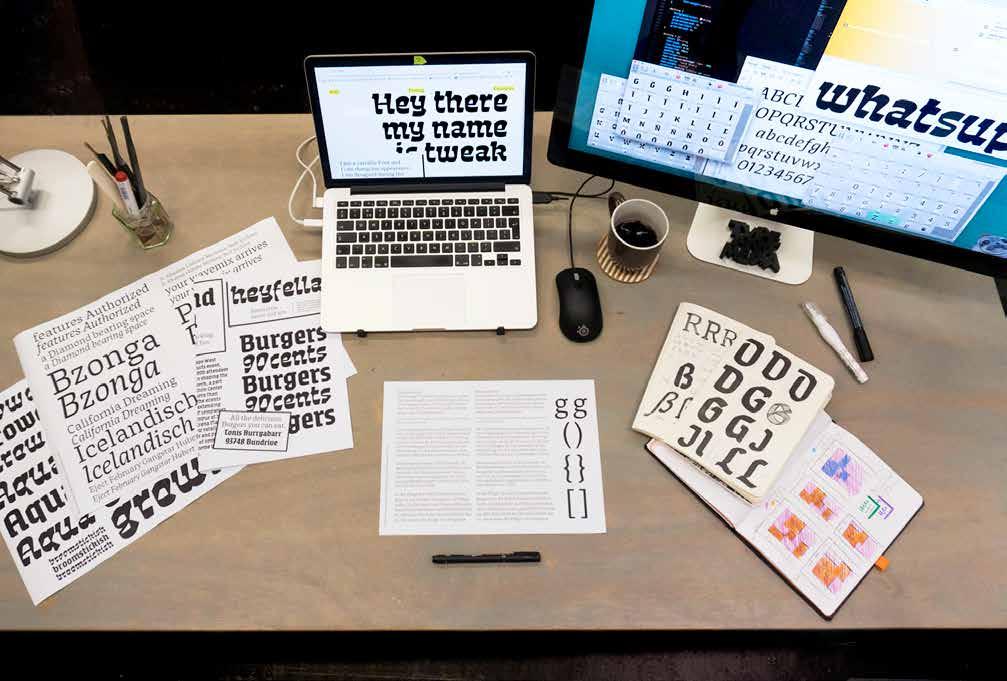
Gen Ramírez genramirez@gmail.com genramirez.com Mexico
Project Entorno Sans
‘Entorno’ is a sans serif type family and a variable font intended for signage systems in urban and virtual spaces. It was designed to fit formal requirements for wayfinding signage, public transportation systems, maps and simulations. The ‘Entorno family’ consists of a wide range of members, including
thin to black, extra condensed to extended, horizontal and vertical contrast. As a variable font it is constructed from a multidimensional approach, conceived to be adjusted to respond to the context of use and compensate for possible problems of legibility, by modulating its weight, width, contrast, stretching and even structure.
katjaschimmel92@gmail.com www.katjaschimmel.de Germany
Project Tweak
‘Tweak’ is a type family with three very diverse members, which are designed to work together in digital environments. The display style occupies the role of the eccentric frontman. It is a Variable Font with two extremes and a changing appearance. From blocky and static to rhythmic and edgy in one fluid
motion. The text styles are more reserved and take their roles as serious roadies with pride. While somewhat emulating the frontman in terms of shape and sharpness, the italic style is still closely related to the roman. Altogether the family works harmoniously together on animated websites or digital posters, while the roadies set the stage for the display style to get crazy.

hello@carlosdetoro.com http://www.carlosdetoro.com
Spain
Project
Azor
‘Azor’ is an editorial typeface for text that requires comfortable legibility, personality and a human touch. It started as an exploration of organic shapes which are influenced by the writing tool, wondering where is the balance between expressive shapes and formal features suitable for reading situations.
Although text styles are shyer in terms of expression, interesting and playful details come out in heavier
and plump weights. Meanwhile, regular italic is an exploration of legibility and presents sharp shapes and large counters which solve text situations when matching with the roman, but also small-sized paragraphs like captions. All the styles have a calligraphic influence that keeps visual consistency throughout the whole family.


Each department nominates their best thesis. Under supervision of Lector Janneke Wesseling a committee decides which bachelor and master graduate has written the best thesis of 2017. The winner receives € 500,-. Thanks to: Stichting tot Steun.
The Academy Materials Award is presented by the Academy Shop. Located on academy grounds, this shop specialises in paper, drawing and art supplies. The winner of the Academy Shop Award receives a gift voucher of € 500,to spend on art supplies.
Jan Roëde (1914-2007) studied at the academy in the early 1930s and spent most of his life living and working in The Hague. The Jan Roëde Foundation, responsible for managing his legacy, instituted the Jan Roëde Award to commemorate the centenary of his birth. With this annual € 2,500,- award, the Foundation aims to encourage a Royal Academy of Art graduate to further develop their artistic talent. The jury looks beyond the artistic quality of the work, also examining the extent to which the laureate works in the spirit of Jan Roëde, who believed art had the power to liberate.
The Paul Schuitema Award sees the Royal Academy of Art honour the photographer, graphic and industrial designer Paul Schuitema, who taught at the academy between 1930 and 1960. The Paul Schuitema Award recognises work reminiscent of Schuitema’s spirit, vision and working method. In their assessment, the jury focuses specifically on individuality, problem solving ability and social relevance. The winner receives € 1.000,-.
Every year, the presentation of the Stroom Den Haag Encouragement Award for Royal Academy of Art graduates is eagerly awaited.
Partly due to the substantial prize money involved, but naturally also in light of the recognition and incentive this award offers in the further development of the graduate’s artistic practice. The winner receives € 2.500,-.
Stroom KABK Invest is a unique tailor made programme which admits four Royal Academy of Art graduates every year. Selected by Stroom and KABK, these burgeoning artists receive a year of intensive coaching and dialogue in their artistic practice and development, provided that their studio/workplace is located in The Hague.
The winner of this award will benefit from a year of business coaching from gallery Heden. Work by the winner will be purchased for the Heden collection directly following their graduation.
Heden also facilitates a presentation at a Dutch art fair and an exhibition at their gallery on the Denneweg in The Hague.
For the first time, this award was given to one of the graduates of the Textile & Fashion department.
The Keep an Eye Textile & Fashion Award is worth €10.000,- and is meant to help the winning graduate in realising their ambition to improve their skills after graduation.
The prize can be used as an investment for a Master degree, a summer course, or another textile/fashion training at an international institution.
Each department nominates their best students. The winner receives € 500,-.
Each year, the heads of all courses jointly select the best graduation works. The winning works are selected from 21 nominations for the Bachelor’s Academy Award and 12 nominations for the Master’s Academy Award. In addition to the enormous honour, the winners also receive € 1.500,- each.
Thanks to: Stichting tot Steun.
3D Lab
Elise van Beurden
Yvo van Os
Adriel Quiroz Silva
Ronald Scholtens
Central lending desk
Abel Wolff
Chris Borman
Ceramics workshop
Iliada Charalambous
Arjen Bos
Computer workshop
George Vincentie
Chris Pieplenbosch
Ferri Wouters
Robin Butter
Fine Art Printing
Thomas Ankum
Widodo Poedijo
Hacklab
Jan Kees van Kampen
Edo Paulus Library
Marcel van Bommel
Annemarie van den Berg
Jolanda van Os
Metal workshop
Eduard Sjoukes
Richard van den Berg
Luis Maly
Photography
Andrew Valkenburg
Robin Butter
Frans de Grood
Printmaking workshop
Gerard Schoneveld
Thomas Ankum
Widodo Poedijo
Niek Satijn (pensioen in April)
Astrid Florentinus
Textile & Fashion
Beleke den Hartog
Gino Anthonisse
Tardia Page
Typesetting workshop
Sanne Beeren
Wood workshop
Mascha van de Kuinder
Ronald Scholtens
Berend Visser
Tom Vollaart
Multimedia
Kees Knijnenburg
Chris Pieplenbosch
Head of ArtScience Interfaculty
Taconis Stolk
Coordinator
Marisa Manck
Teachers
Cocky Eek
Arthur Elsenaar
Kasper van der Horst
Eric Kluitenberg
Esther Polak
Robert Pravda
Sanne van Rijn
Taconis Stolk
Julia Willms
Guest teachers
Nicky Assmann
Merel Boers
Matthijs van Boxsel
Andrea Božić
Lex van den Broek
Renske Maria van Dam
Zoro Feigl
Rob van Gerwen
Roel Heremans
Milica Ilić
Márton Kabai
Johan van Kreij
Jonas Lund
Katinka Marač
Maurizio Martinucci
Jeroen Meijer
Manus Nijhoff
Benny Nilsen
Dani Ploeger
Ine Poppe
Nenad Popov
Maya Rasker
Frank Theys
Maki Ueda
Caro Verbeek
Hilt De Vos
Peter Zegveld
Fine Arts (BA)
Head of Department
Klaus Jung
Coordinators
Martijn Verhoeven
Cecilia Bengtsson
Teachers Sculpture
Maura Biava
Irene Droogleever Fortuyn
Bram de Jonghe
Klaas Kloosterboer
Andre Kruysen
Reinoud Oudshoorn
Hans van der Pennen
Els Snijder
Teachers Painting and Printing
Rachel Bacon
Pieter van Evert
Andrea Freckmann
Willem Goedegebuure
Eric Hirdes
Ton van Kints
Aukje Koks
Jeroen de Leijer
Frank Lisser
Annemieke Louwerens
Willem Moeselaar
Femmy Otten
Ewoud van Rijn
Elly Strik
Babette Wagenvoort
Teachers ‘autonoom’
Channa Boon
Dina Danish
Engelien van den Dool
Marion Duursema
Anja de Jong
Jonas Ohlsson
Maria Pask
David Powell
Hester Scheurwater
Pim Voorneman
Teachers Critical Inquiry
Winnie Koekelbergh
Alexandra Landré
Tatjana Macic
Anna Moreno
Onno Schilstra
Martijn Verhoeven
Guest teachers
Jurriaan Benschop
Sander Breure
Libia Castro
Heske ten Cate
Evelyn Taocheng Wang
Frits de Coninck
Samira Damato
Jaring Dürst Britt
Hadassah Emmerich
Guus van Engelshoven
Sjarel Ex
Gijs Frieling
Katinka van Gorkum
Roos Gortzak
Maaike Gouwenberg
Voebe de Gruyter
Anne Hardy
Petra Heck
Sofia Hernandez Chong Cuy
Witte van Hulzen
Marius Lut
Docus van der Made
Dafna Maimon
Tirzo Martha
Hana Miletic
Xue Mu
Olafur Olafsson
Antonis Pittas
Sara Rajaei
Milo Rau
Machteld Rullens
Oscar Santillan
Janwillem Schrofer
Lieven Segers
Mette Sterre
Benno Tempel
Sissel Marie Thon
Nora Turato
Suzanne van de Ven
Puck Verkade
Hanae Wilke
Mattijs de Wit
Hulya Yilmaz
Italo Zuffi
Co-Heads of Department
Roosje Klap & Niels Schrader
Coordinators
Ingrid Grünwald
Pauline Schep
Hélène Webers
Tutors Graphic Design
Susana Carvalho
Frits Deys
Gert Dumbar (éminence gris)
Ruben Pater
Niels Schrader
Michiel Schuurman
Esther de Vries
Tutors Image
Michel Hoogervorst
Merel van ’t Hullenaar
Katrin Korfmann
Reinoud Oudshoorn
Kevin Bray
Tutors Interactive Media
Lauren Alexander
Hannes Bernard
Kees van Drongelen
Agata Jaworska
Jan Robert Leegte
Henrik van Leeuwen
Tutors Typography & Letters
Guido de Boer
Thomas Buxó
Marina Chaccur
Matthias Kreutzer
Adriaan Mellegers
Rob van den Nieuwenhuizen
Laura Pappa
Tutors Drawing
Willem Moeselaar
Jordy van den Nieuwendijk
Tutors Letterstudio (elective)
Frank Blokland
Just van Rossum
Peter Verheul
Tutors Design Office (elective)
Gijsbert Dijker
Chantal Hendriksen
Tutors PlayLab (elective)
Bart de Baets
Roosje Klap
Job Wouters
Tutors Coding
Bente van Bourgondien
Gottfried Haider
Silvio Lorusso
Pascal de Man
Vit Ruller
Eric Schrijver
Tjerk Woudsma
Tutors Theory
Nick Axel
Marjan Brandsma
Merel Boers
Maarten Cornel
Els Kuijpers
Dirk Vis
Tutors Professional Practice Skills
Vanessa Lambrecht & Frits Deys
Dreamgang
Roosje Klap & Ewoud Traast
Interactive / Media / Design (BA)
Head of Department
Janine Huizenga
Coordinator
Dave Willé
Teachers
Adriaan Wormgoor
Anja Hertenberger
Anna Arov
Arthur Elsenaar
Coen Brasser
Dave Willé
Emma Pareschi
Gert Dumbar
Gitta Pardoel
Jan Treffers
Janine Huizenga
Johan Gustavsson
Jonah Lamers
Lena Shafir
Nick van ‘t End
Pawel Pokutycki
Raymond Taudin Chabot
Remus Ockels
Shayna Schapp
Guest Teachers
Joke Post
Lyndsey Housdon
Renske van Dam
Head of Department
Herman Verkerk
Coordinators
Mariska Beljon & Roosmarijn Hompe
Team of tutors 2017-2018
Marjan van Aubel
Amber Beernink
Mariska Beljon
Erik Blits
Marie Ilse Bourlanges
Jan Harm ter Brugge
Frank Bruggeman
Krijn Christiaansen
Corine Datema
Lars van Es
Inger Groeneveld
Jeroen van de Gruiter
Roel van Herpt
Ed van Hinte
Roosmarijn Hompe
Ingeborg Horst
Lada Hršak
Maarten Kanters
Elena Khurtova
Maarten Kolk
Diederik de Koning
Barend Koolhaas
Tessa Koot
Jelle Koper
Maartje Lammers
Harold Linker
Bert Lonsain
Giulio Margheri
Bianca Meilof
Ernie Mellegers
Victoria Meniakina
Willem Moeselaar
Cathelijne Montens
Rick Mouwen
Jeroen Musch
Jof Neuhaus
Laura van Santen
Sam van ‘t Oever
Sanne Peper
Tatjana Quax
Christoph Seyferth
Michaël Snitker
Nienke Sybrandy
Ronald van Tienhoven
Thomas Vailly
Rosa te Velde
Ramin Visch
Ellen Vos
Guest Teachers 2017-2018
Véronique Baar
René Boer
Renske Maria van Dam
Anne Kranenborg
David Helblich
Inti Hernandez
Michiel van Iersel
Chris van Langen
Bas Princen
Cindy Rademaker
Louise Rietvink & Zeno Beikircher
Boris Sieverts
Melle Smets
Anouk Steketee
Remco Torenbosch & Kerstin Winking
Maria Tyakina
Cees van der Veeken
Jeroen Visschers
Jacob Voorthuis
Joanna van der Zanden
Co-Heads of Department
Lotte Sprengers
Rob Hornstra
Coordinators
Linda van der Poel (full-time course)
Lotte van den Berg (full-time course)
Raimond Wouda (part-time course)
Coordinator Internship
Lotte Sprengers
Stije van der Beek
Teachers
Adam Broomberg
Alex Zakkas
Andrew Valkenburg
Anja de Jong
Anke van Haarlem
Anna Abrahams
Annaleen Louwes
Ari Versluis
Arno Bosma
Bjorn Staps
Donald Weber
Eddo Hartmann
Ernst Yperlaan
Femke Lutgerink
Hans van der Meer
Jan Frederik Groot
Jan Rosseel
Jenny Smets
Jeroen Kummer
Johan Gustavsson
Judith van IJken
Kim Nuijen
Krista van der Niet
Loek van Vliet
Lotte Sprengers
Ola Lanko
Oliver Chanarin
Pawel Pokutycki
Raimond Wouda
Rob Hornstra
Thijs groot Wassink
Ton van Kints
Vincent van Baar
Teachers in Theory
Ingrid Grootes
Lonneke de Groot
Saskia Boer
Thomas Bragdon
External Examinors
Katherine Oktober Matthews
Simon Bainbridge
Guest Teachers
Andrew Phelps
Annegien van Doorn
Arjan Benning
Arno Hajtema
Arnold Verbruggen
Arthur Herman
Barrie Hullegie
Bas Vroege
Bert Hana
Bertien van Manen
Carlos Spottorno
Chris de Bode
Corinne Noordenbos
Cuny Janssen
Daan Paans
David Galjaard
Hans Eijkelboom
Henk Wildschut
Ivo van der Bent
Jaap Scheeren
Jan Banning
Jim Casper
Jordi Huisman
Koos Breukel
Lard Buurman
Lonneke van der Palen
Lukas Gobel
Marieke van der Velden
Marleen Sleeuwits
Martijn van de Griendt
Maurice van Es
Meinke Klein
Meinke Klein
Merel Bem
Niels Stomps
Olya Oleinic
Rein Janssen
Reinierr Gerritsen
Rob Wetzer
Robert Knoth
Robert Jan Verhagen
Salvatore Vitale
Sander Veeneman
Sarah Carlier
Scheltens & Abbenes
Sebastiaan Hanekroot
Simon Bainbridge
Simon Roberts
Sjoerd Knibbeler
Theo Captein
Verena Blok
Willeke Duijvekam
Wim van Sinderen
Head of Department
Jurgi Persoons
Coordinators
Gerrit Uittenbogaard
Sanne Jansen
Teachers
Hil Driessen
Steef Eman
Jan-Jan van Essche
Chris Fransen
Hilde Frunt
Desiree Hammen
Eric Hirdes
Mirjam Ingram
Anna Kruyswijck
Nico Laan
Natasja Martens
Jurgi Persoons
Aurélie Van de Peer
Joost Post
Peter de Potter
Erika Reidinga - Rutten
Laut Rosenbaum
Neeltje Schoenmaker
Tanja Smeets
Gerrit Uittenbogaard
Bob Verhelst
Roy Verschuren
Ellen Vos
Marina Yee
Head of Department
Janice McNab
Coordinator
Stéphane Blokhuis
Teachers
Babak Afrassiabi
Janice McNab
Jasper Coppes
Katarina Zdjelar
Thijs Witty
Yael Davids
Guest teachers
1646
Arutiunian Andrius
Rachel Bacon
Tina Bastajian
Francesco Bernardelli
Manon Bovenkerk
Clare Butcher
Henry Coombes
Camilla Crosta
Jeremiah Day
Feminist Art Gallery
Sara Giannini
Rahila Haque
Jonatan Habib Engqvist
Marysia Lewandowska
Mary Redmond
Lisa Robertson
Benjamin Seror
Puck Verkade
External examiner
Clare Butcher
Workfield commission
Frédérique Bergholtz
Wendelien van Oldenborgh
Laura Stamps
Head of Department
Maaike Roozenburg
Coordinator
Zara Roelse
Teachers
Erlynne Bakkers
Bas van Beek
David Derksen
Alfred van Elk
Merel Kamp
Yassine Salihine
Eddo Hartmann
Ed van Hinte
Eva Kaldenbach
Yvo van Os
Paul Pennock
Martijn van de Wiel
Guest teachers
Peter Bilak
Cynthia Hathaway
Marcel den Hollander
Daan Koks
Heleen Klopper
Roos Meerman
STUDIO Rens
Alice Twemlow
Head of Department
Hans Venhuizen
Coordinator
Lotte van den Berg
Teachers
Studio Makkink & Bey - Jurgen Bey & Chester Chuang
Raumlaborberlin - Benjamin Foerster-Baldenius
SUPERUSE STUDIOS - Junyuan Chen
The Cloud Collective - Gerjan Streng
MVRDV - Fokke Moerel, Mick van Gemert, Aser Giménez-Ortega
Samira Boon
Barend Koolhaas
Anne Hoogewoning
Louise Schouwenberg
Hans Venhuizen
Erik Jutten
Guest teachers
Lucas Verweij
Mauricio Freyre
Gert Dumbar
Vincent de Rijk
Leeke Reinders
Frans Bevers
OBSERVATORIUM
REFUNC
Head of Department
Erik van Blokland
Coordinator
Marja van der Burgh
Teachers
Erik van Blokland
Paul van der Laan
Peter Verheul
Guest teachers
Françoise Berserik
Peter Bil’ak
Frank Blokland
Petr van Blokland
Just van Rossum
Fred Smeijers
Jan Willem Stas
Workshops by Kristyan Sarkis, Ilya Ruderman and Frank Grießhammer
External examiner
Laura Meseguer


A publication of Royal Academy of Art Prinsessegracht 4, The Hague-NL www.kabk.nl
Campaign concept (photography and video)
Liv Ylva and Fabian Fraikin www.livylva.com
Art Direction
Lesley Moore
Graphic Design
Rieme Gleijm
(special thanks to Sepus Noordmans and Kylièn Bergh)
Edition
Book: 1000 copies
ISBN 978-90-72600-50-9
Printed by Drukkerij Tielen
Paper
PlanoPlus 120 g/m2
One-side coated Sulfaatkarton 280 g/m2
Fonts
Marr Sans (Commercial Type)
Credits
All project descriptions are written by students, in English or in Dutch according to their personal preference. Edits were only made upon specific request.
Photography Graphic Design graduates
Nóra Békés, Carmen Dusmet Carrasco, Lukas Engelhardt, Taisiia Rehetnik, Alexandra Sukhorukova, Lin Ven
Disclaimer
No part of this publication may be copied and/or distributed without the written permission of the students in question, or the Royal Academy of Art.
The Hague, July 2018